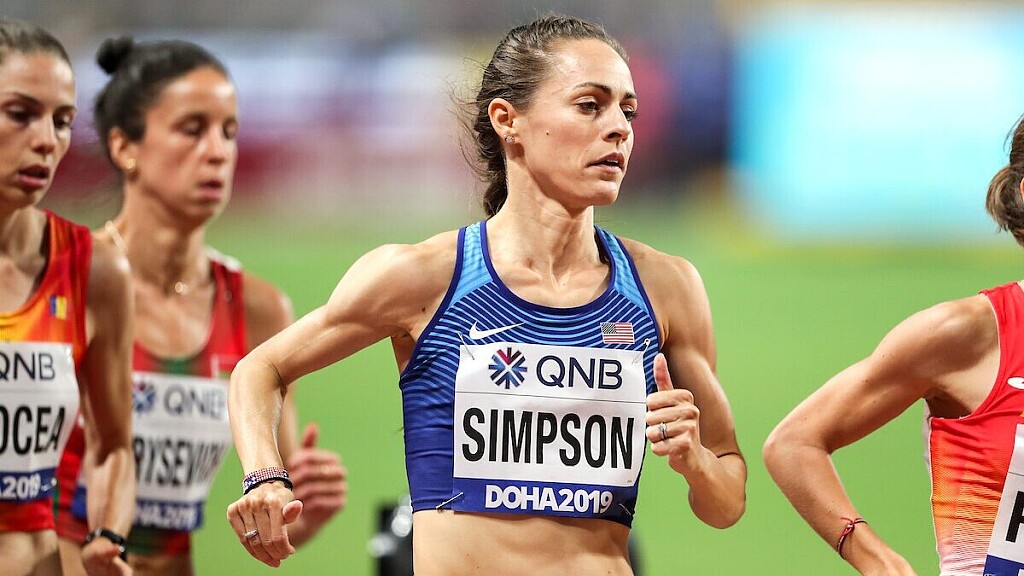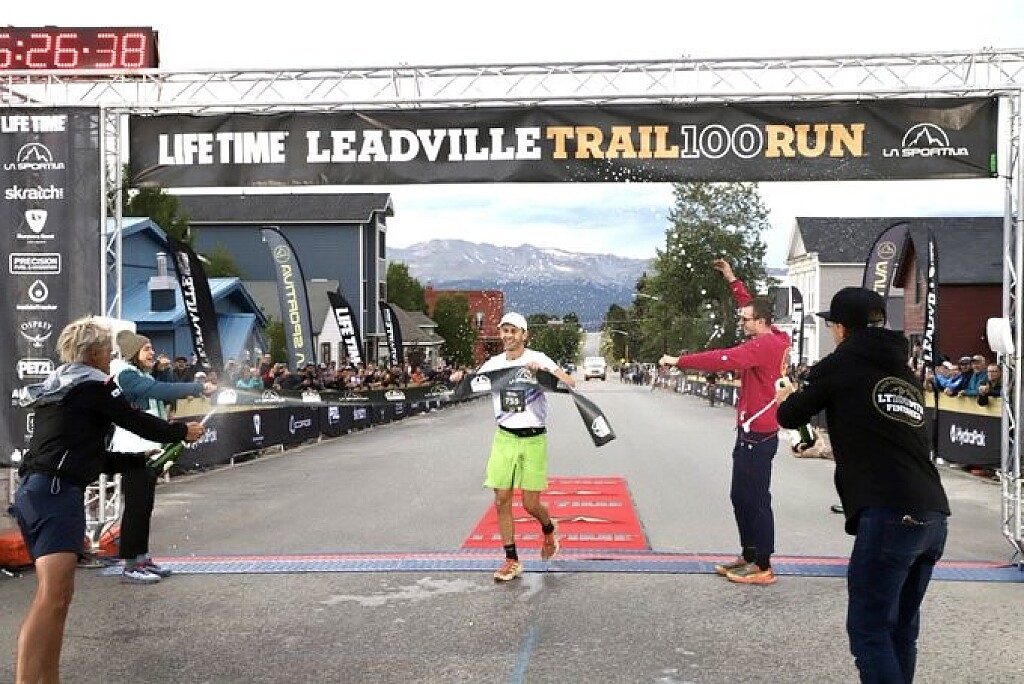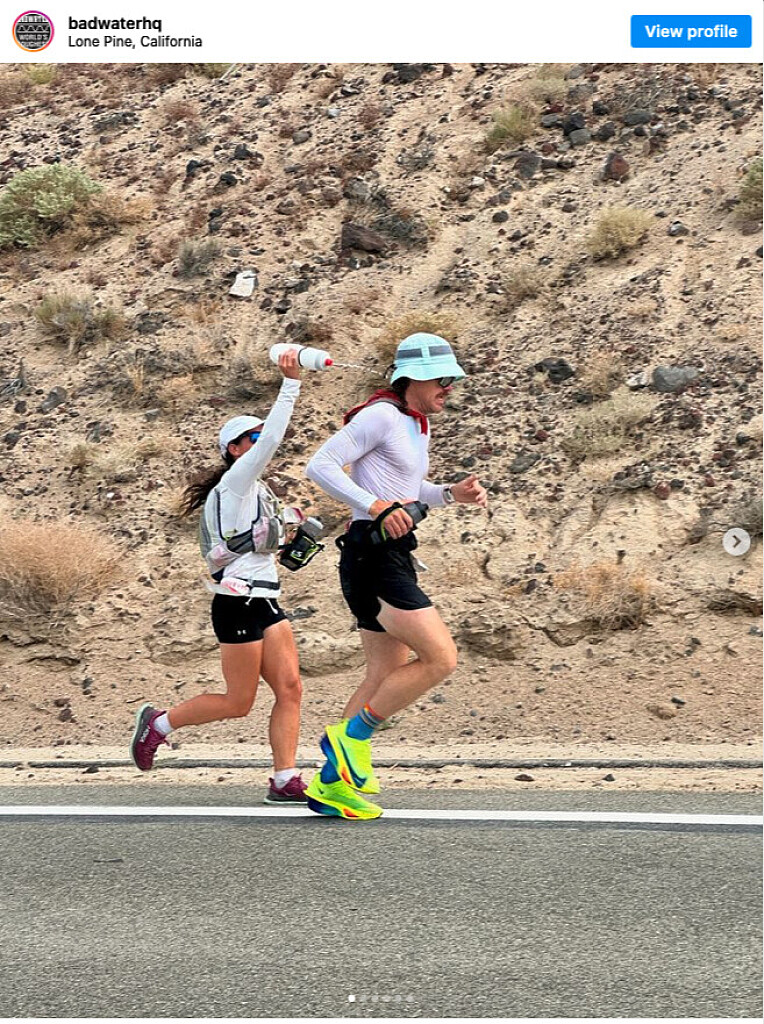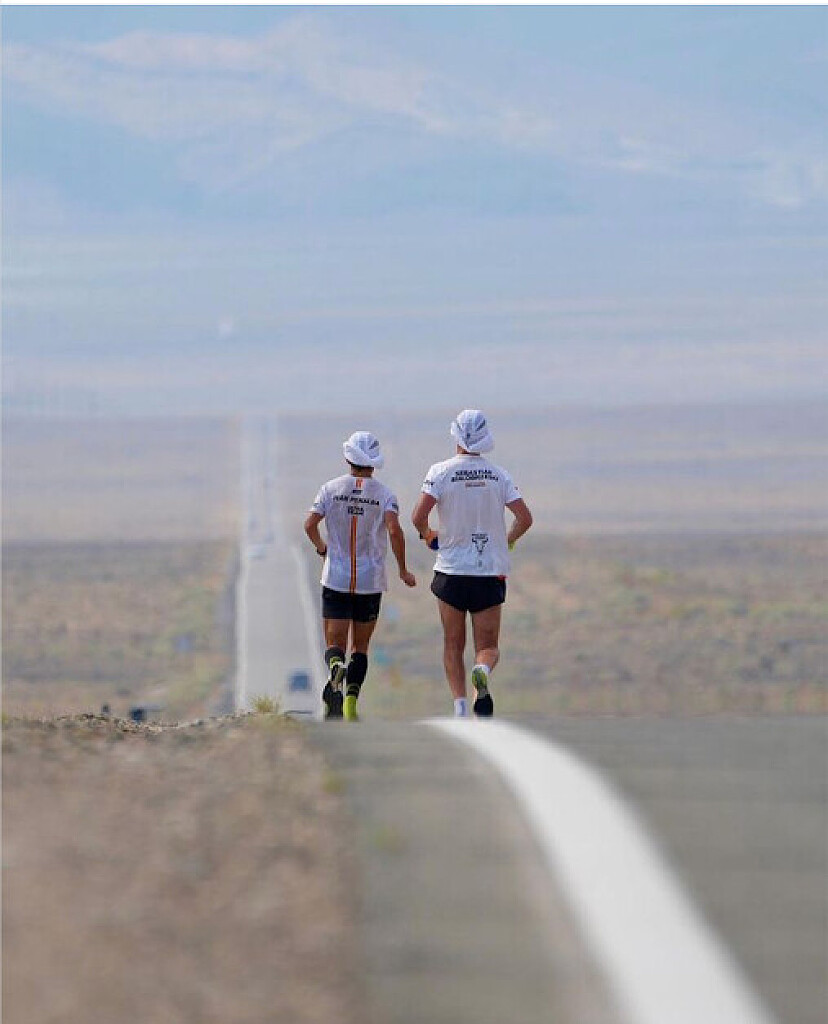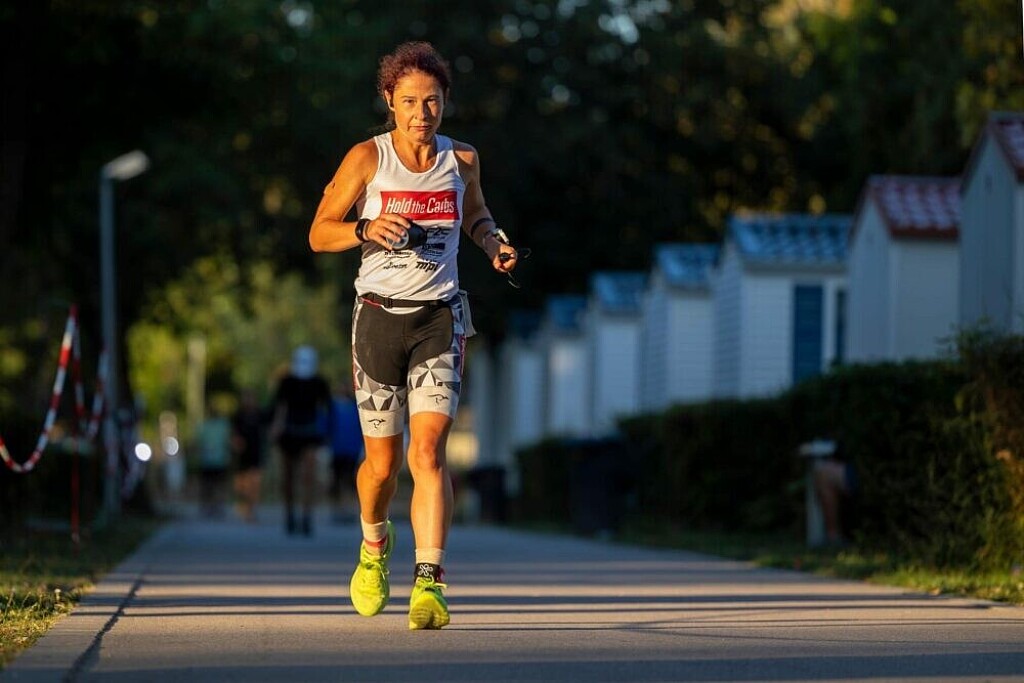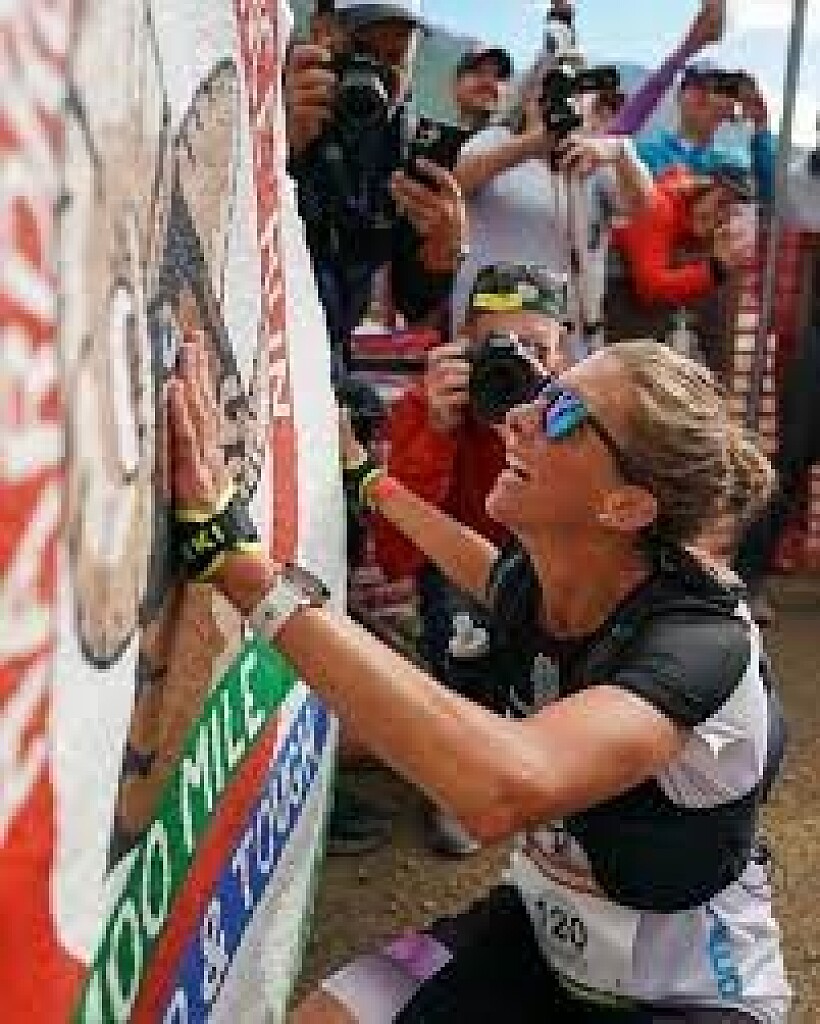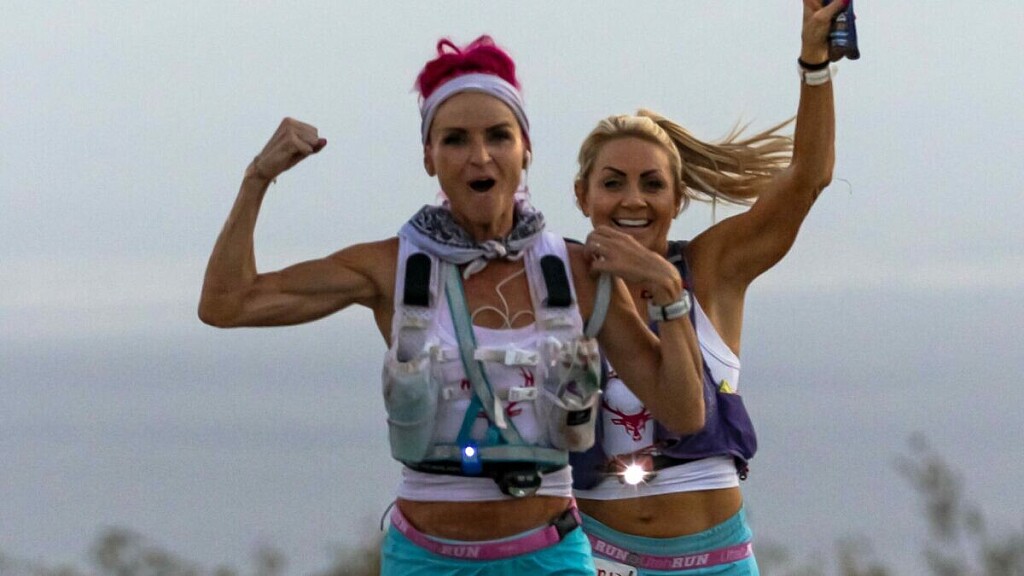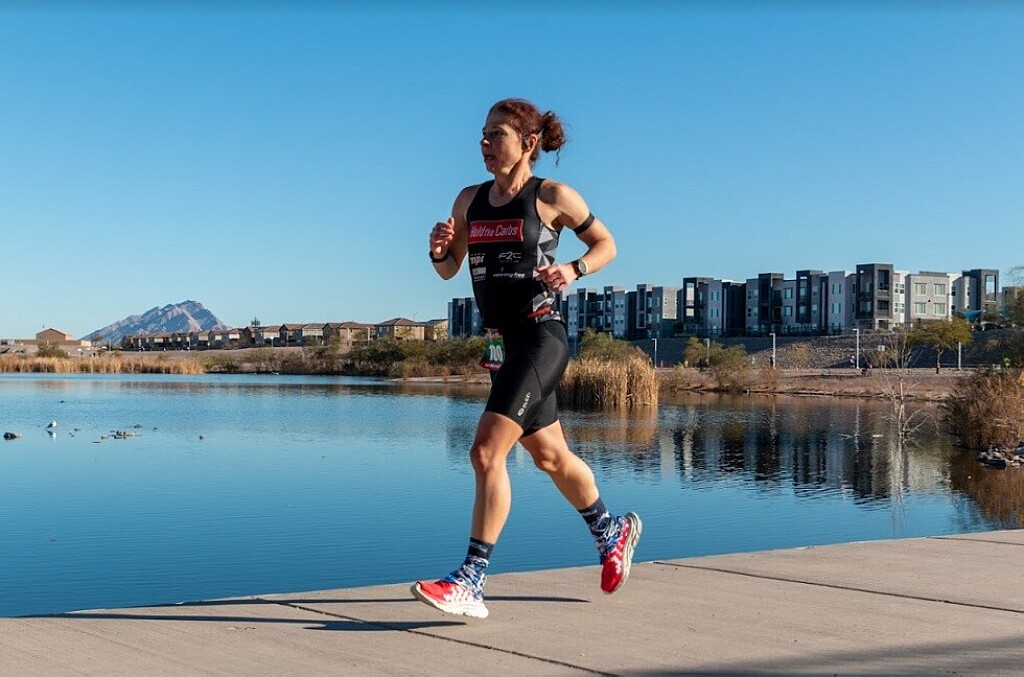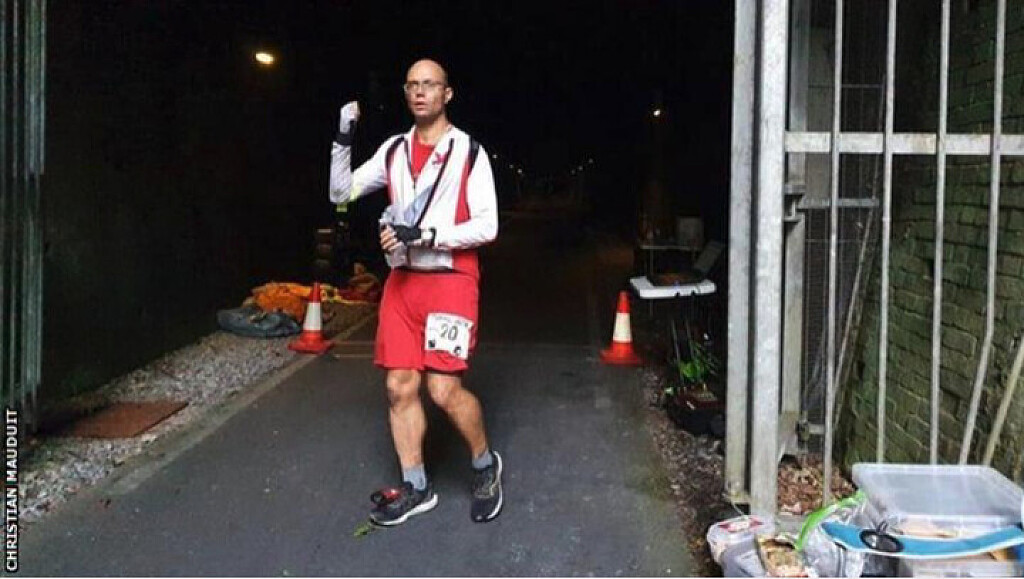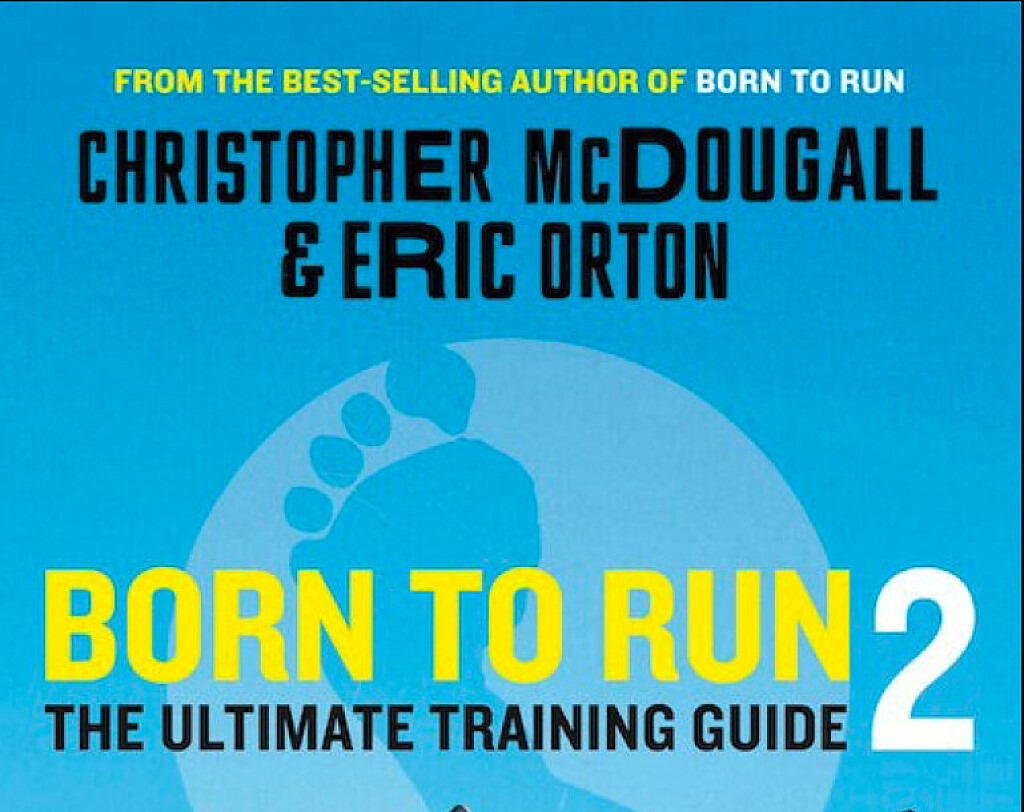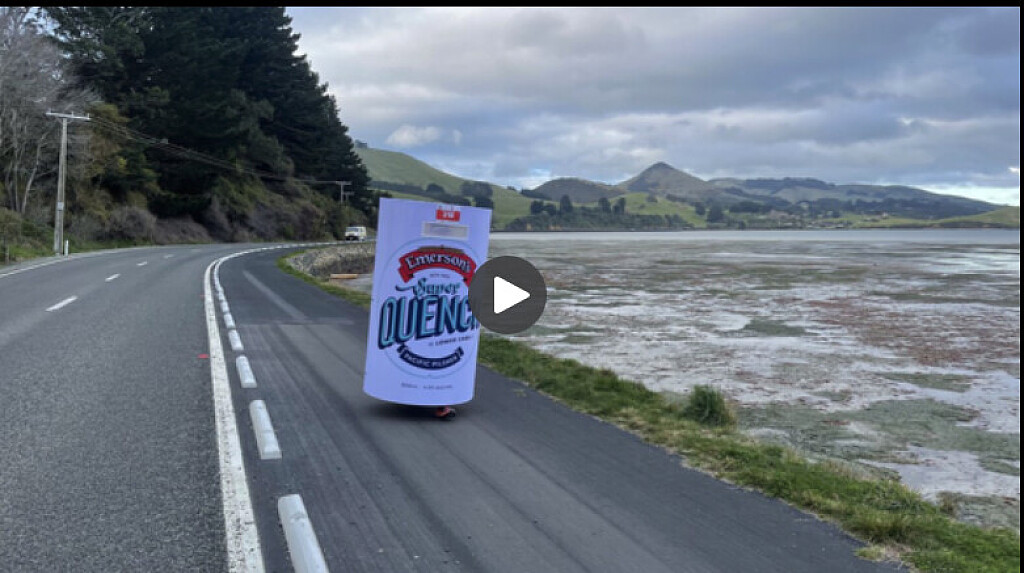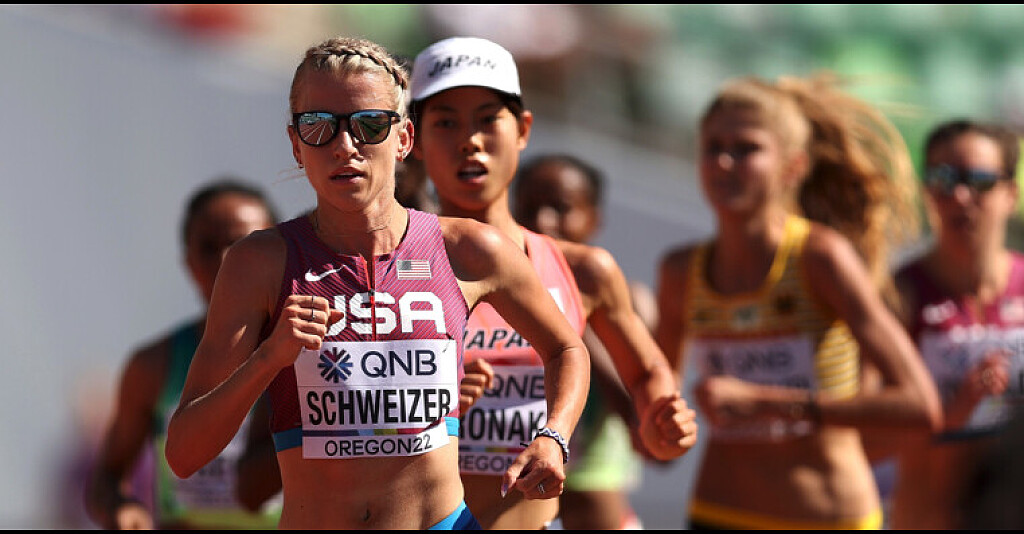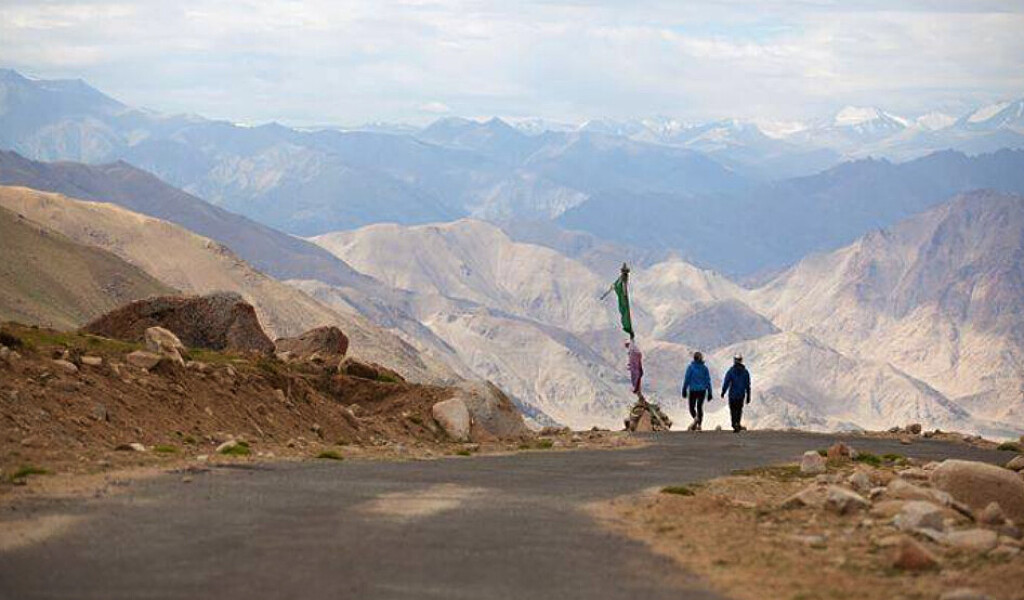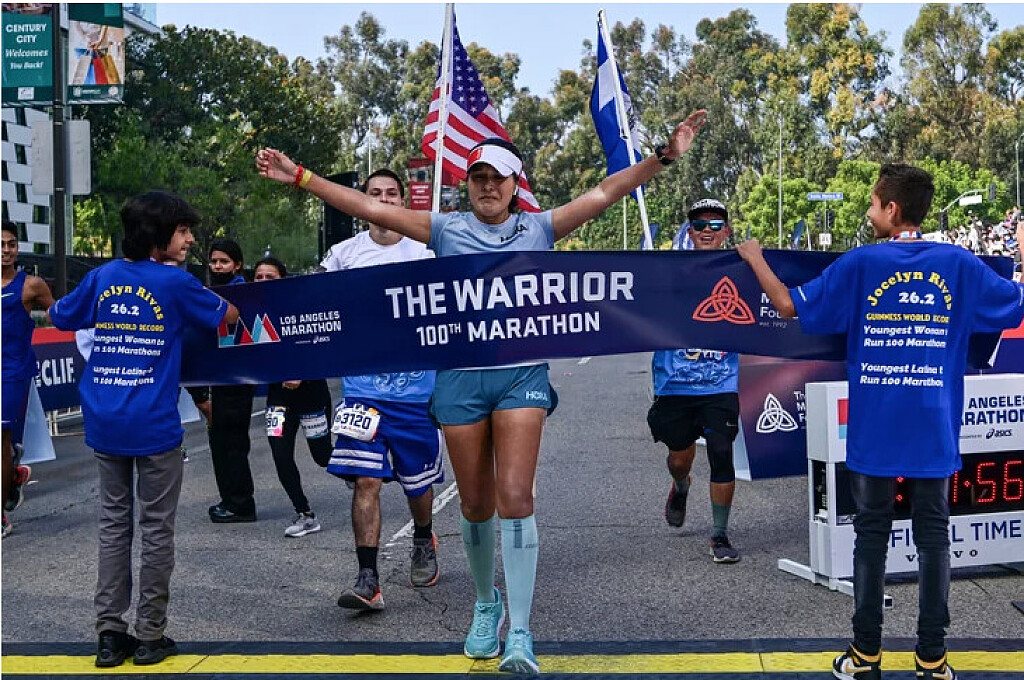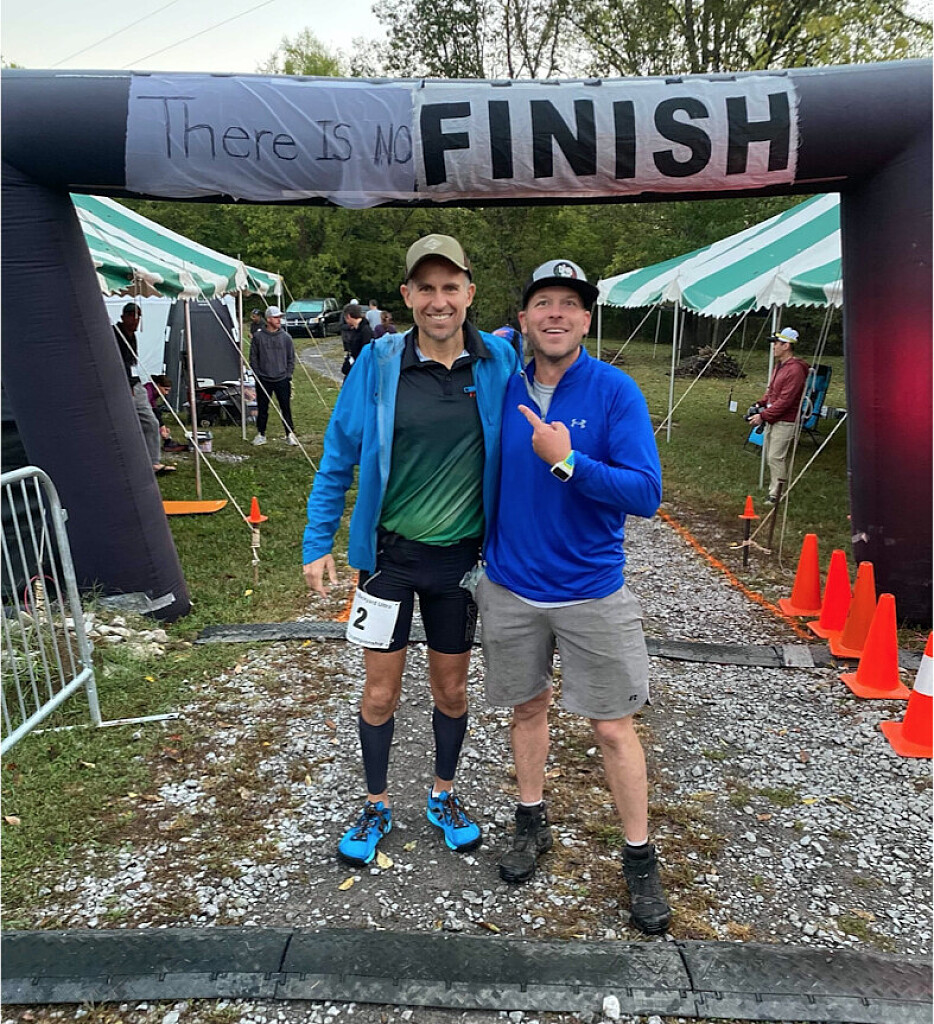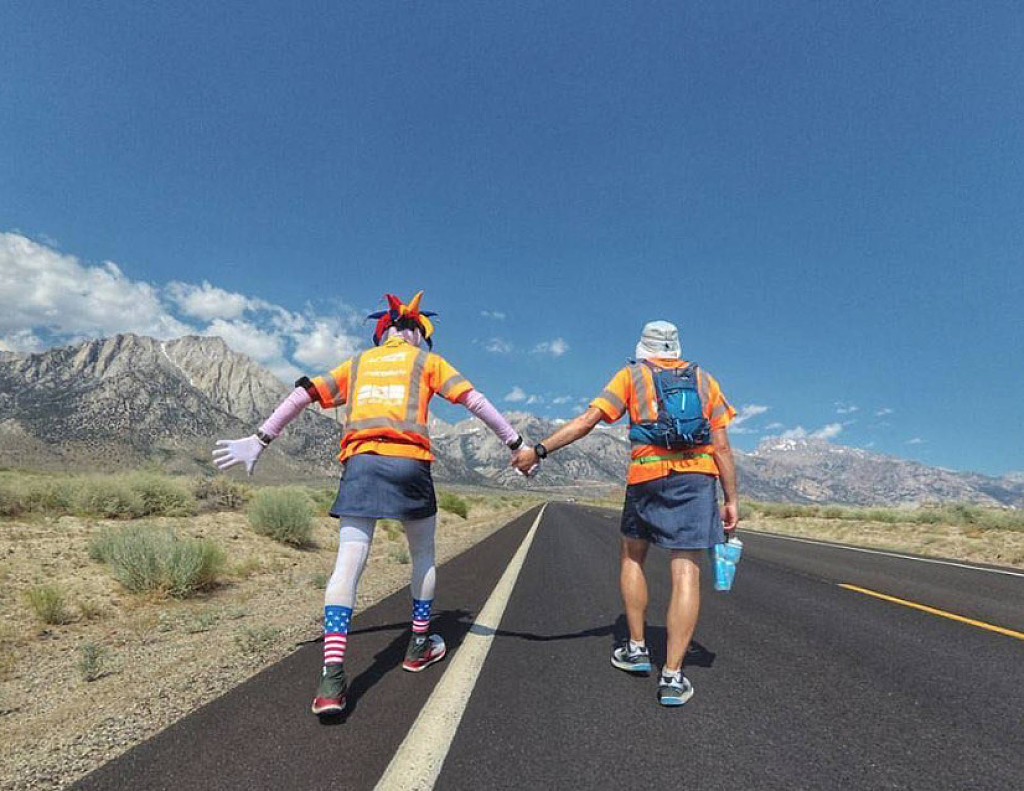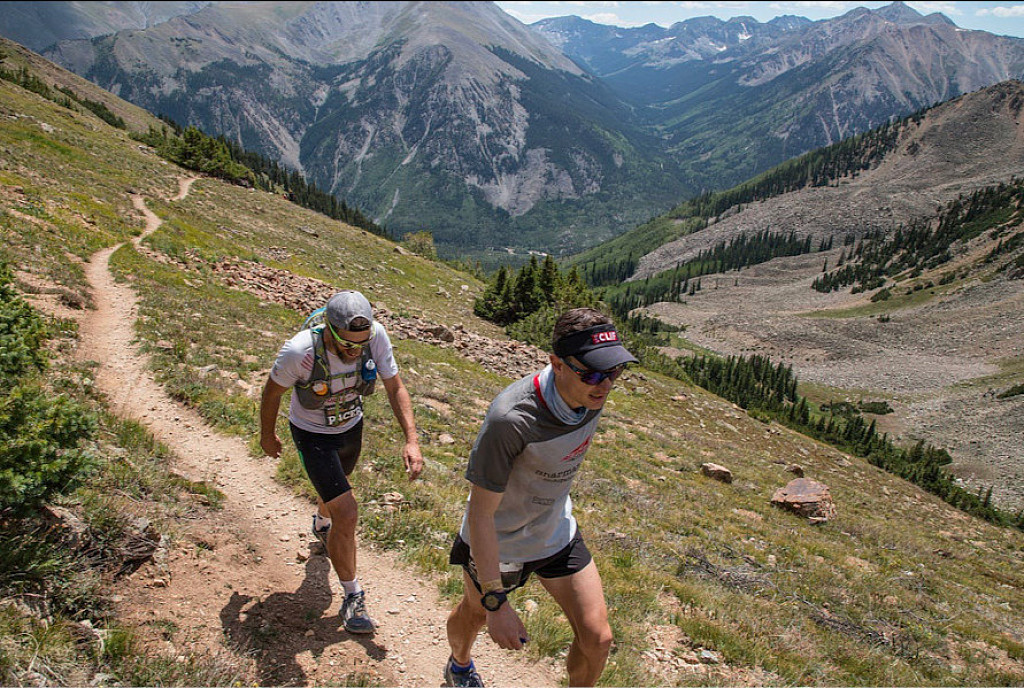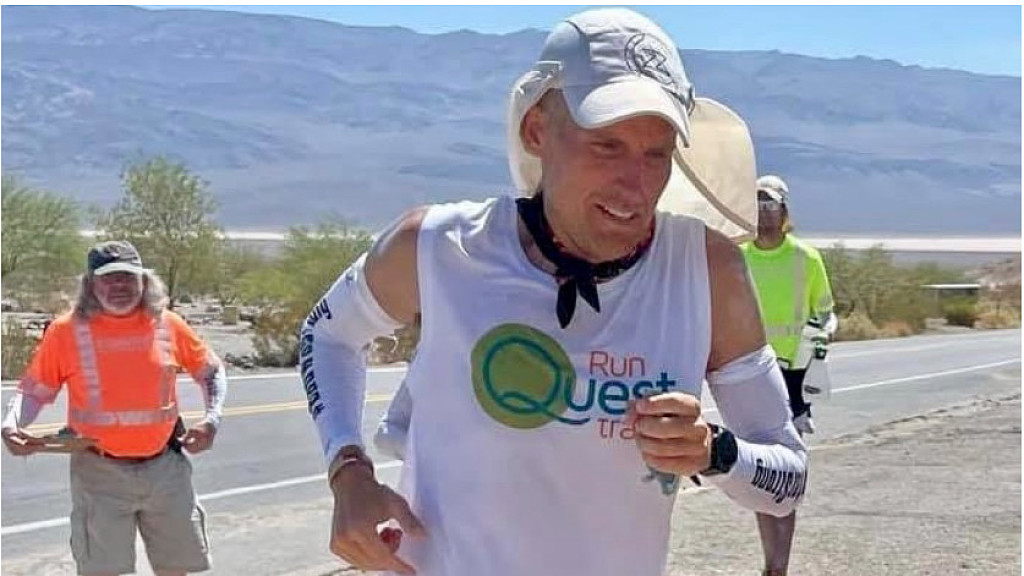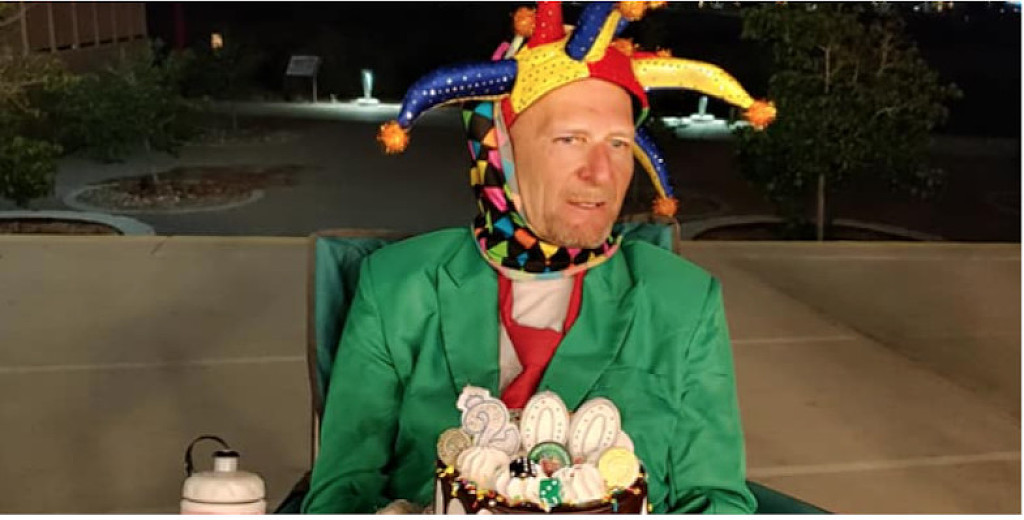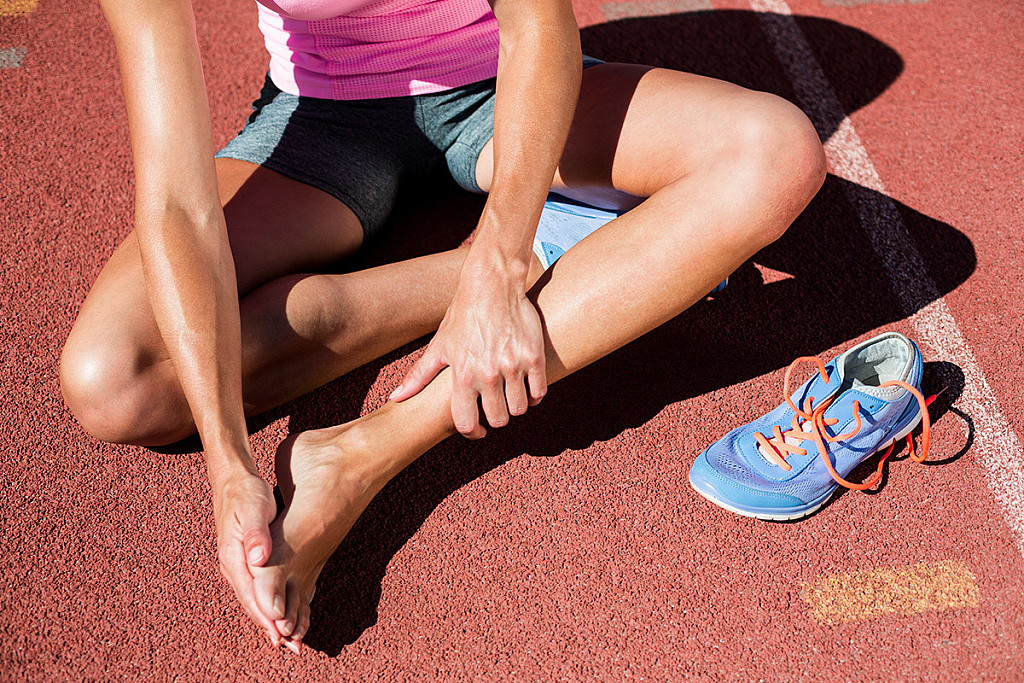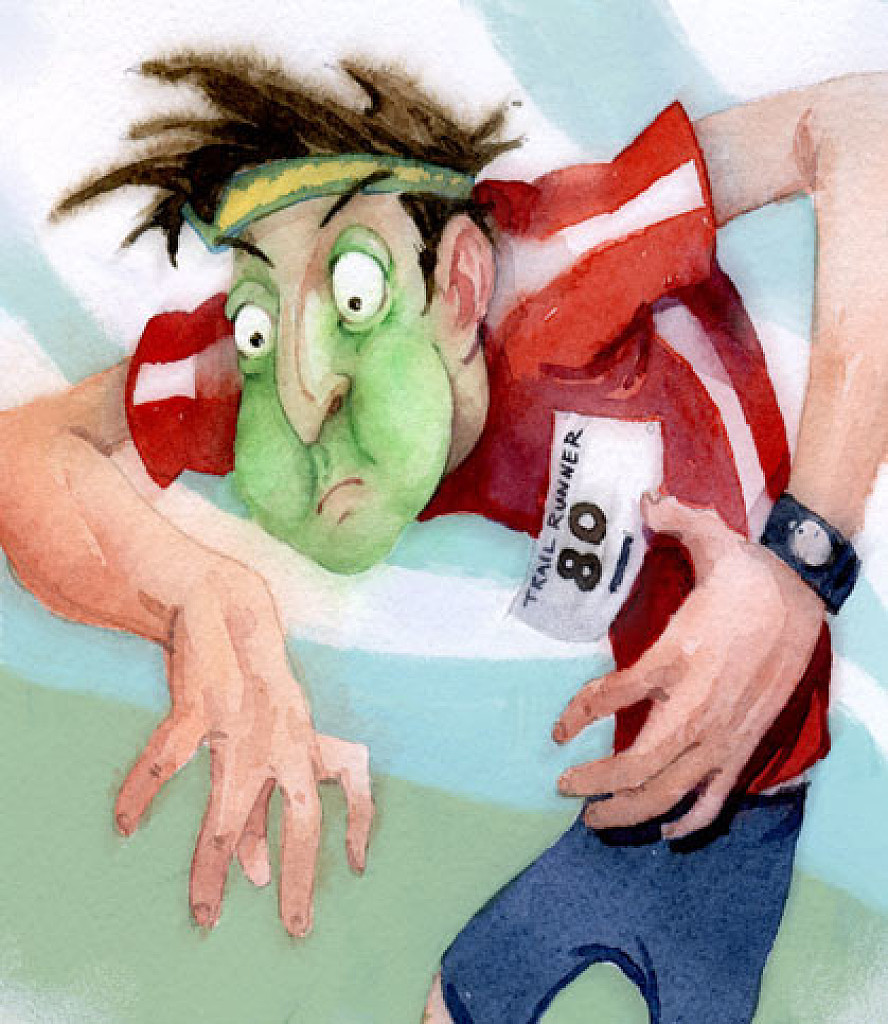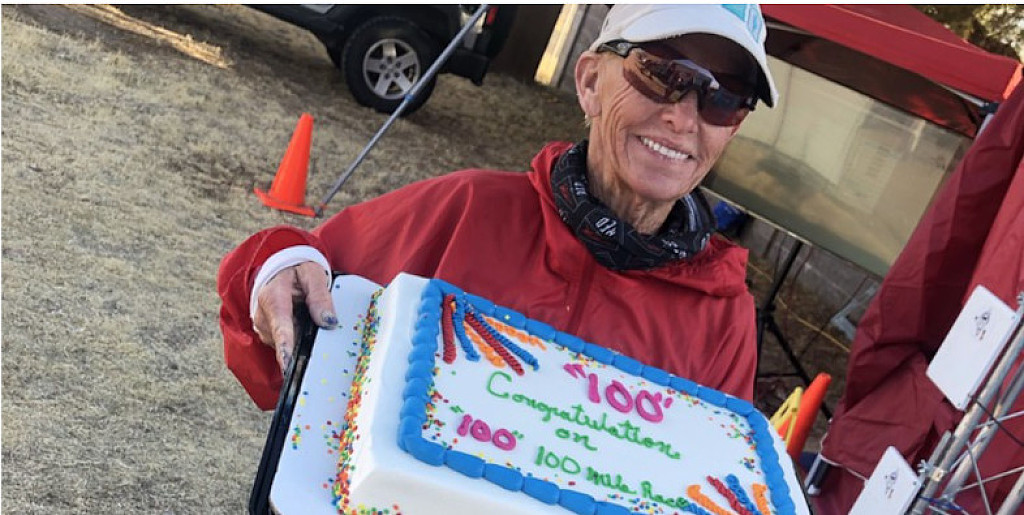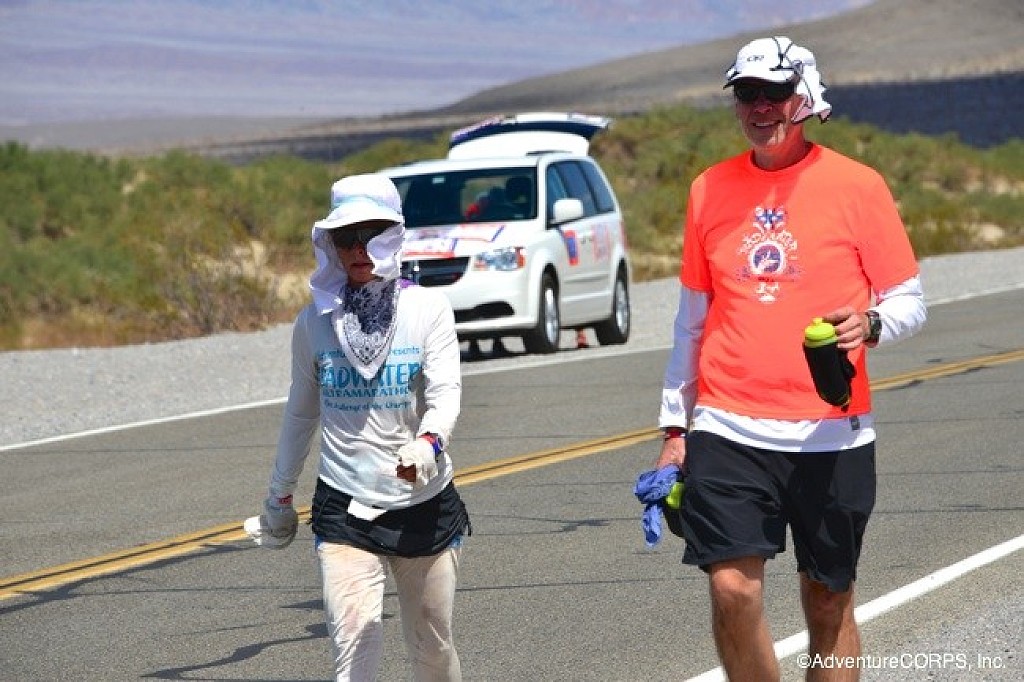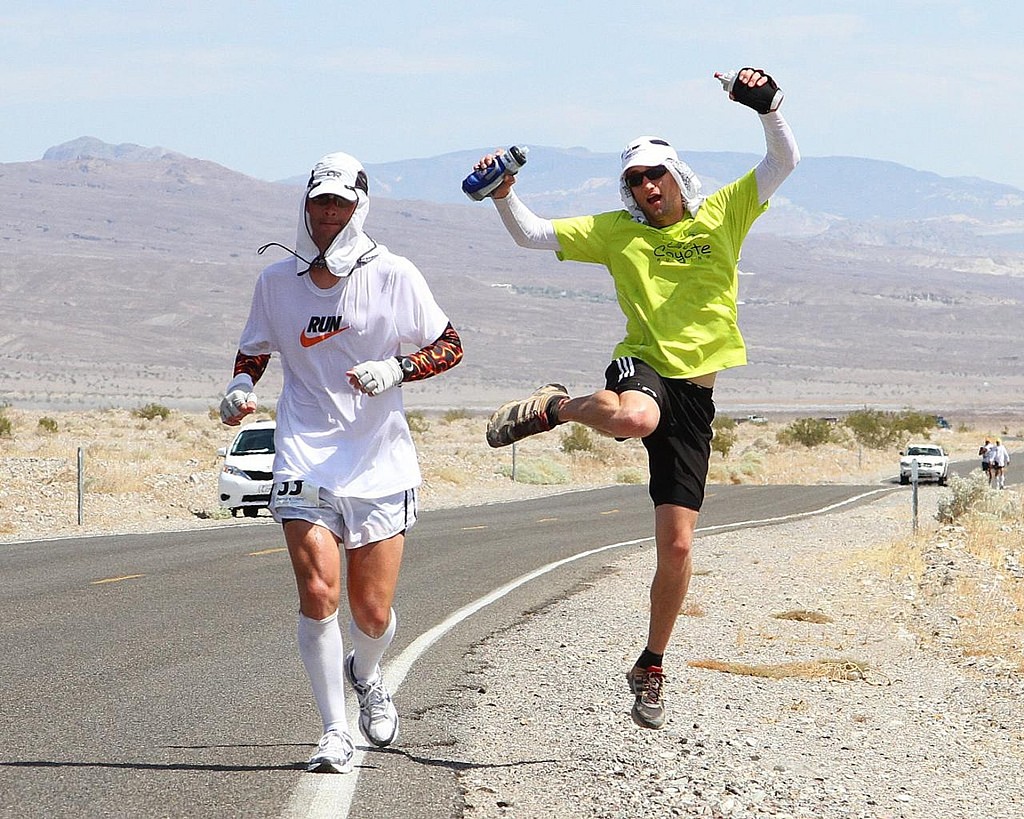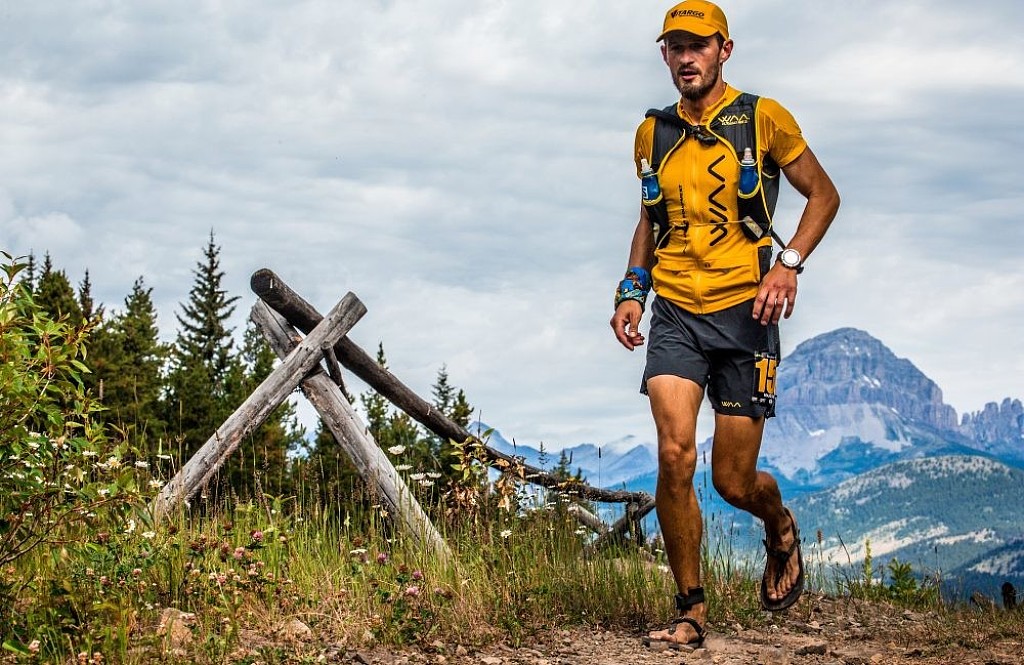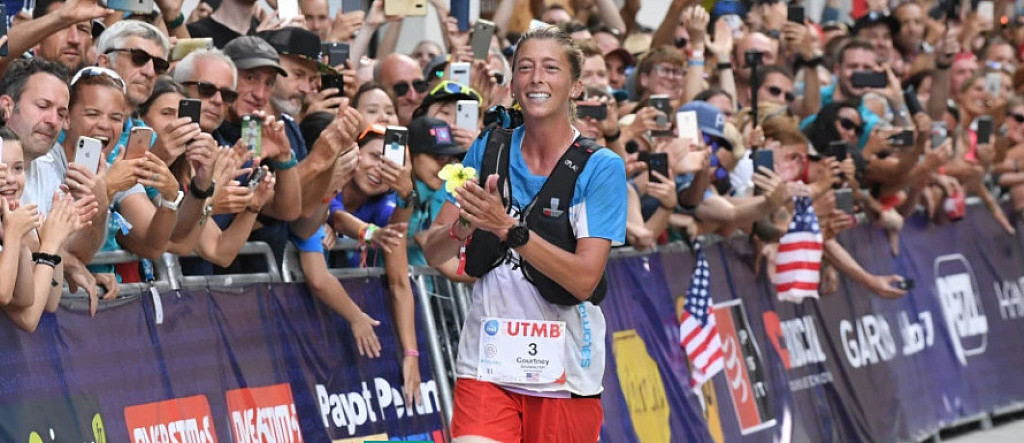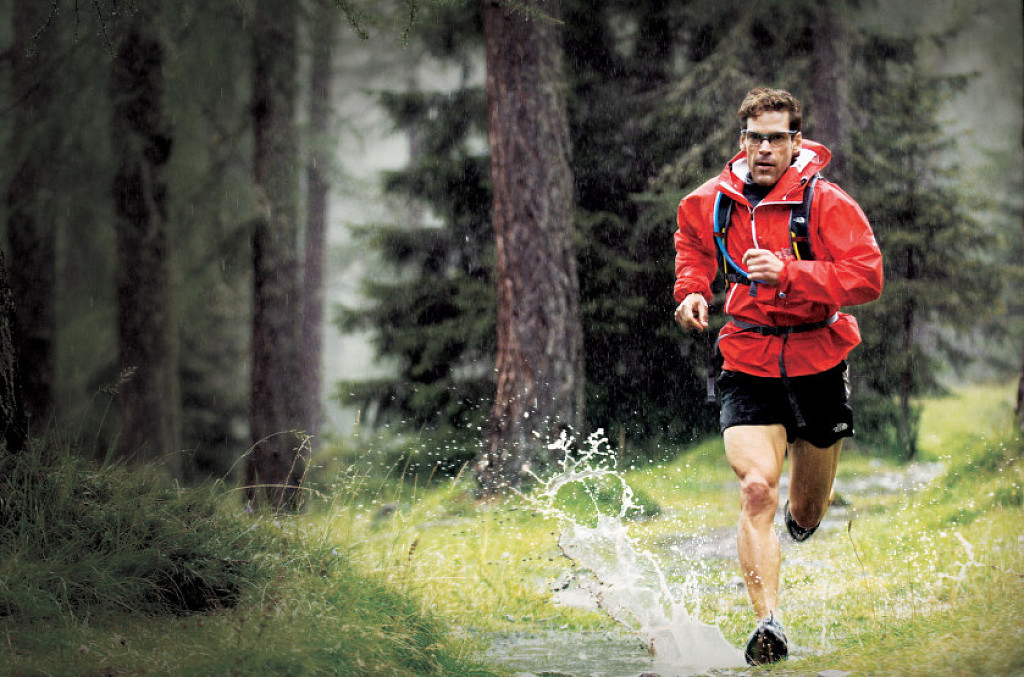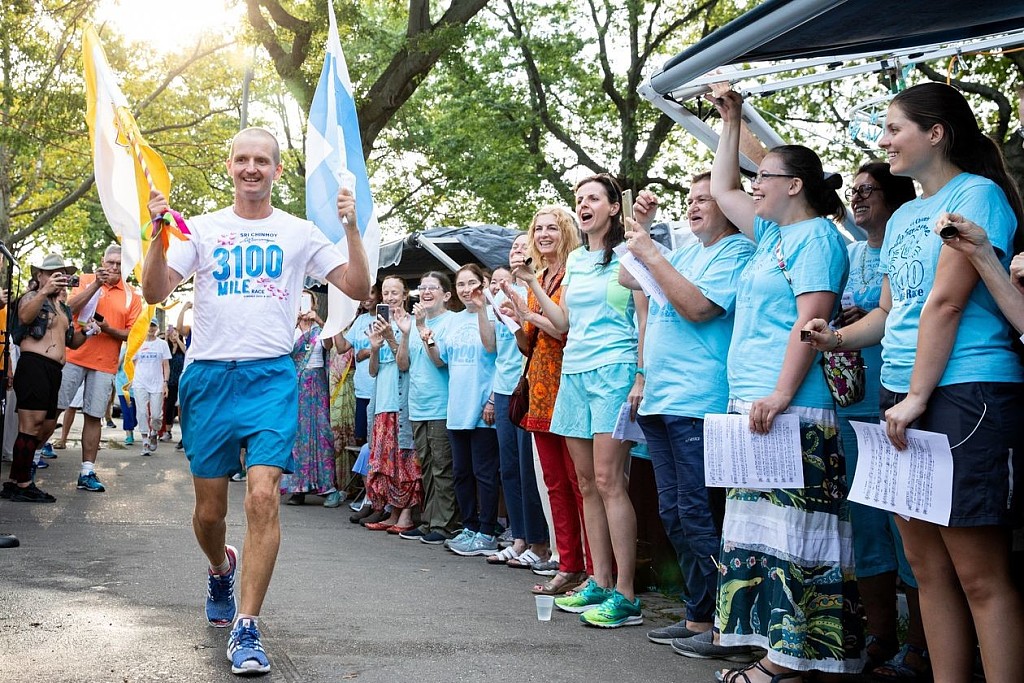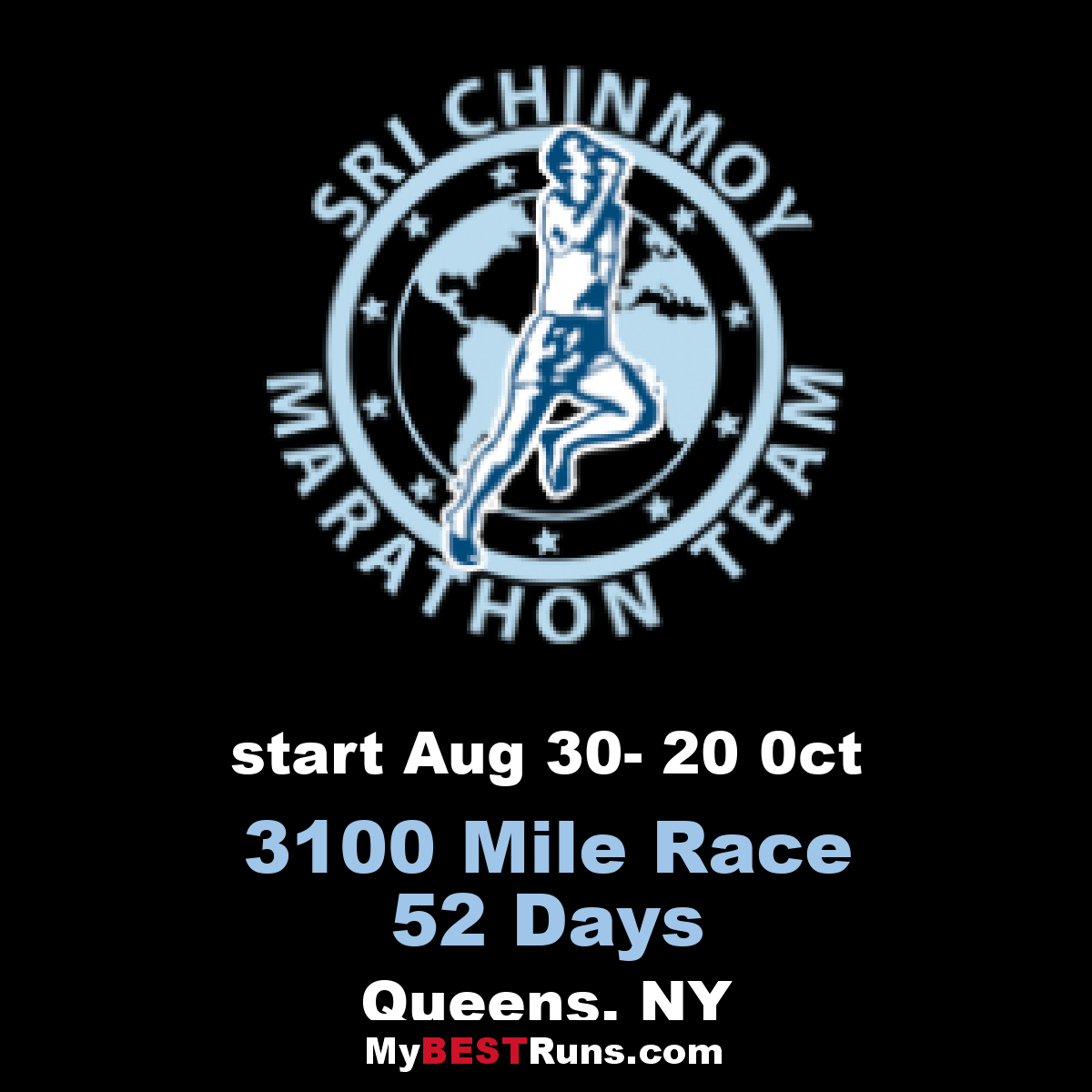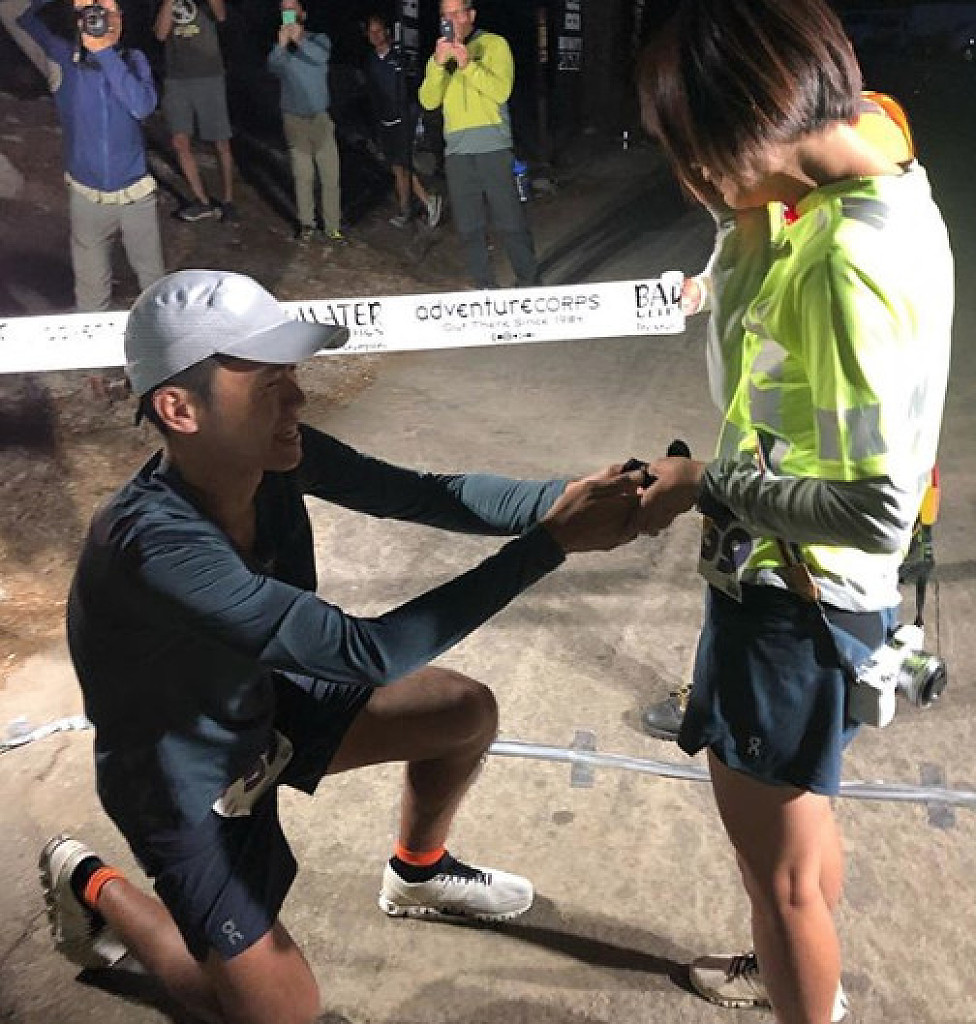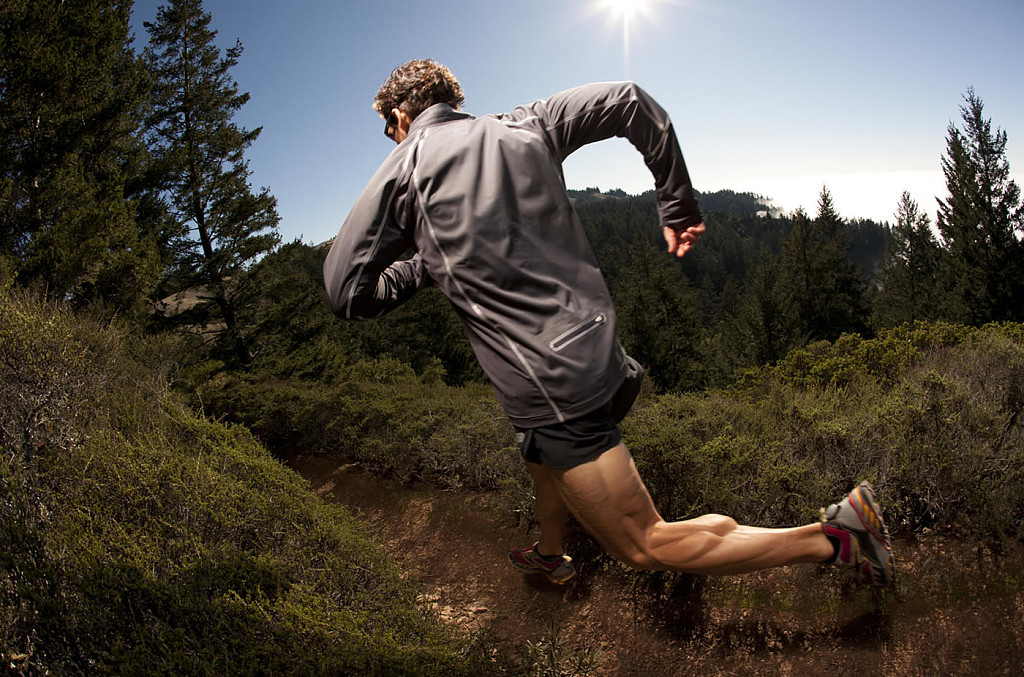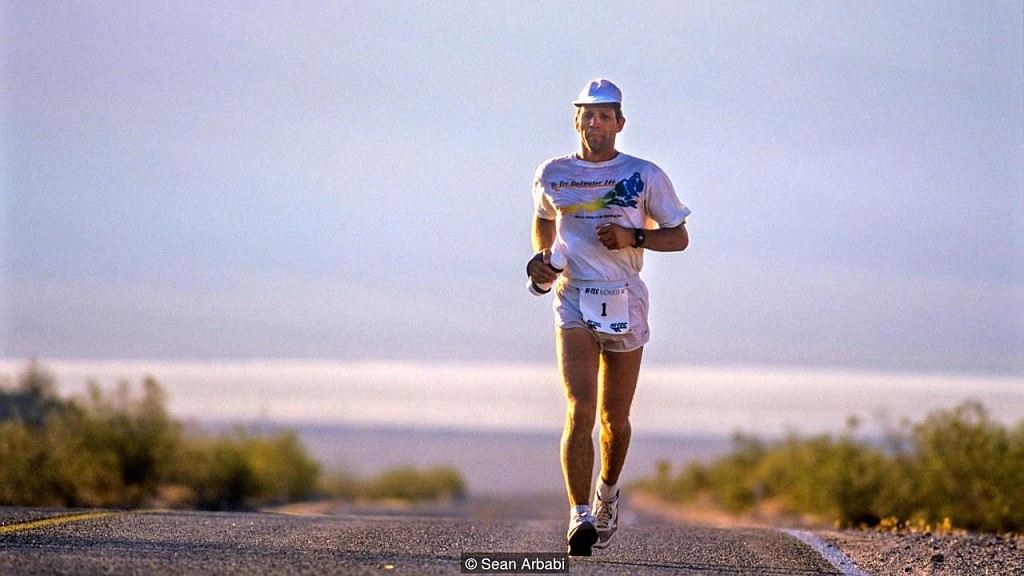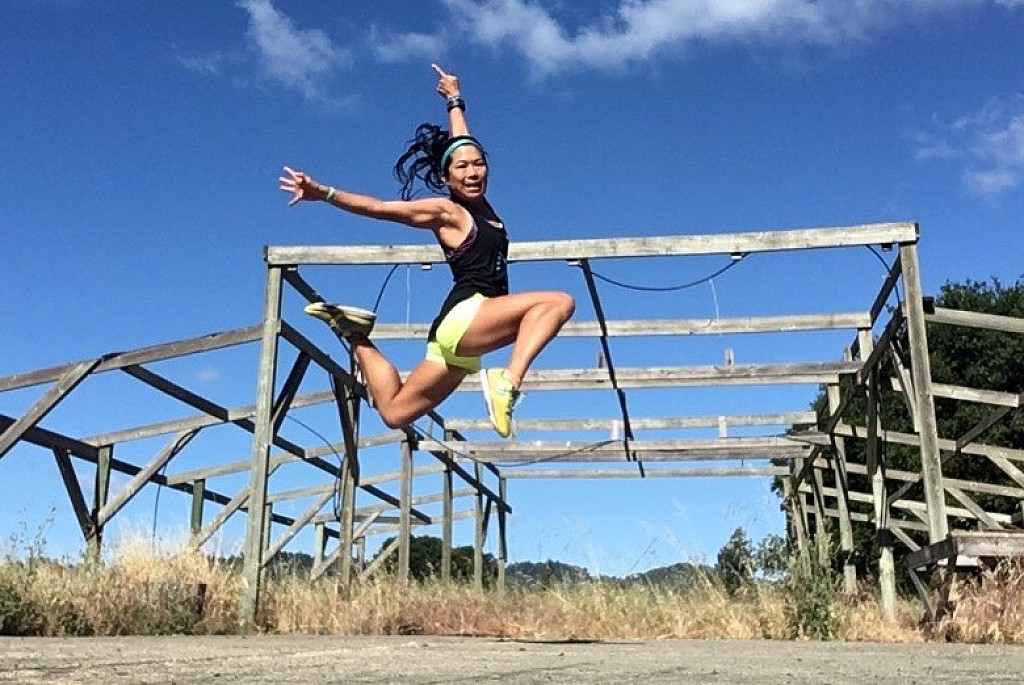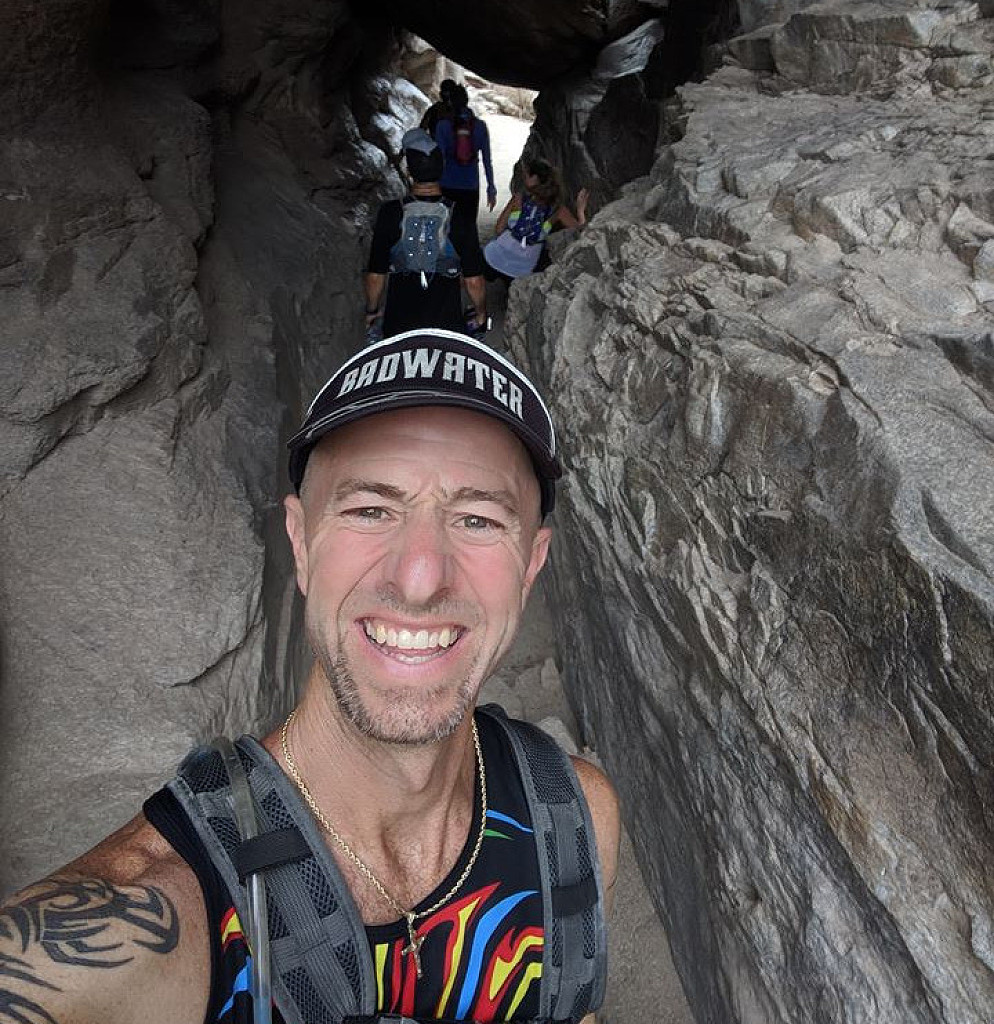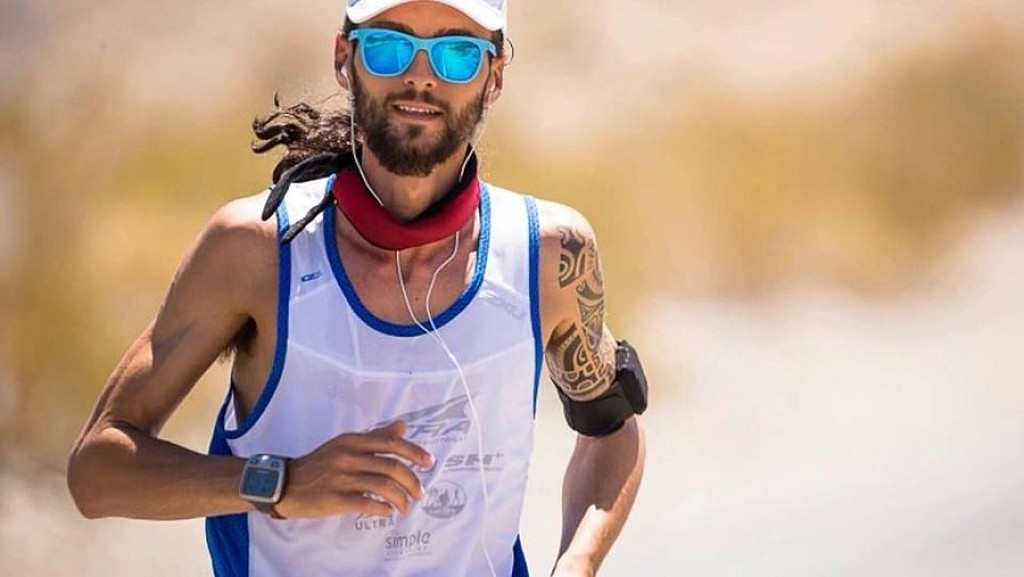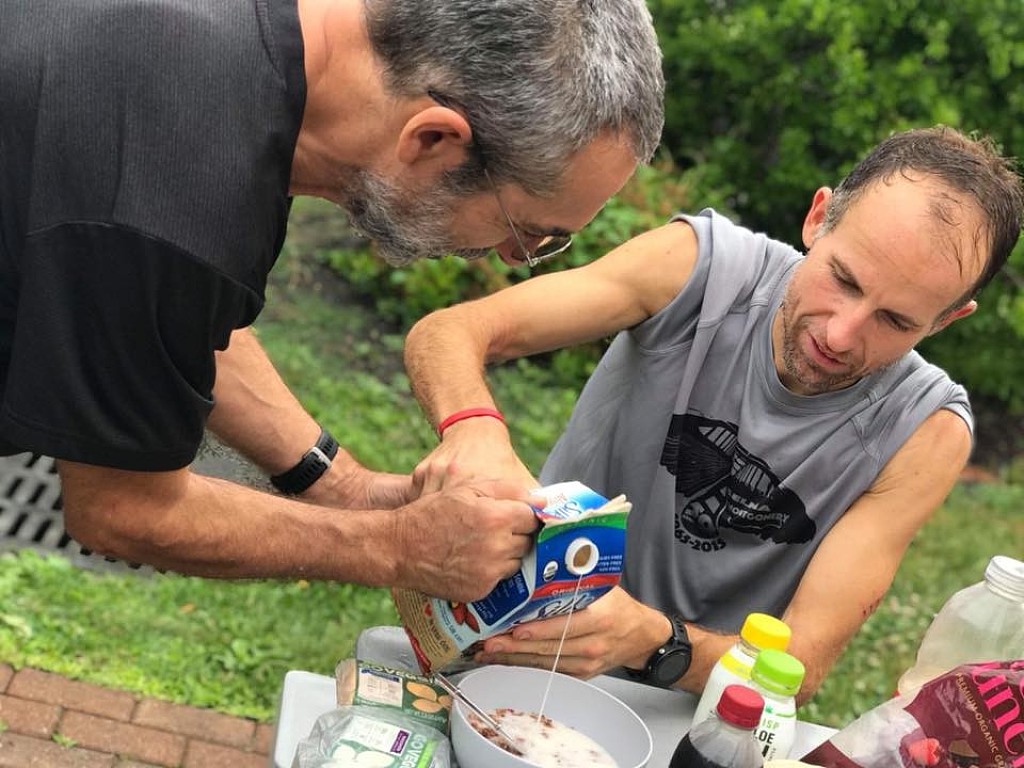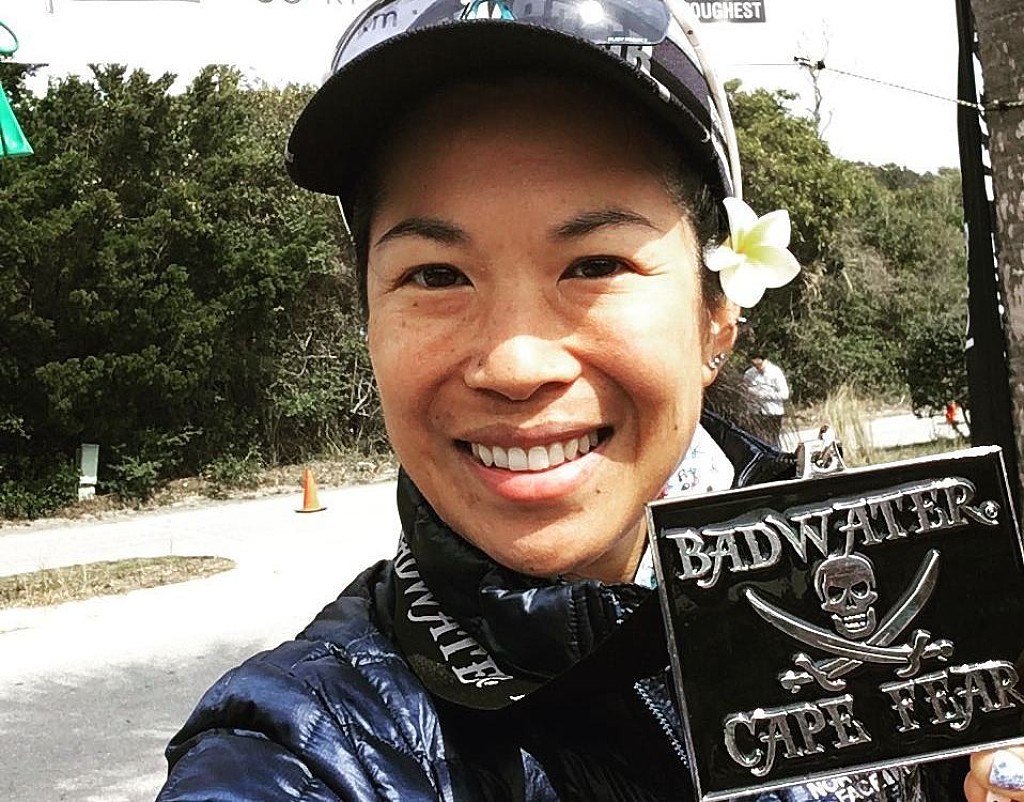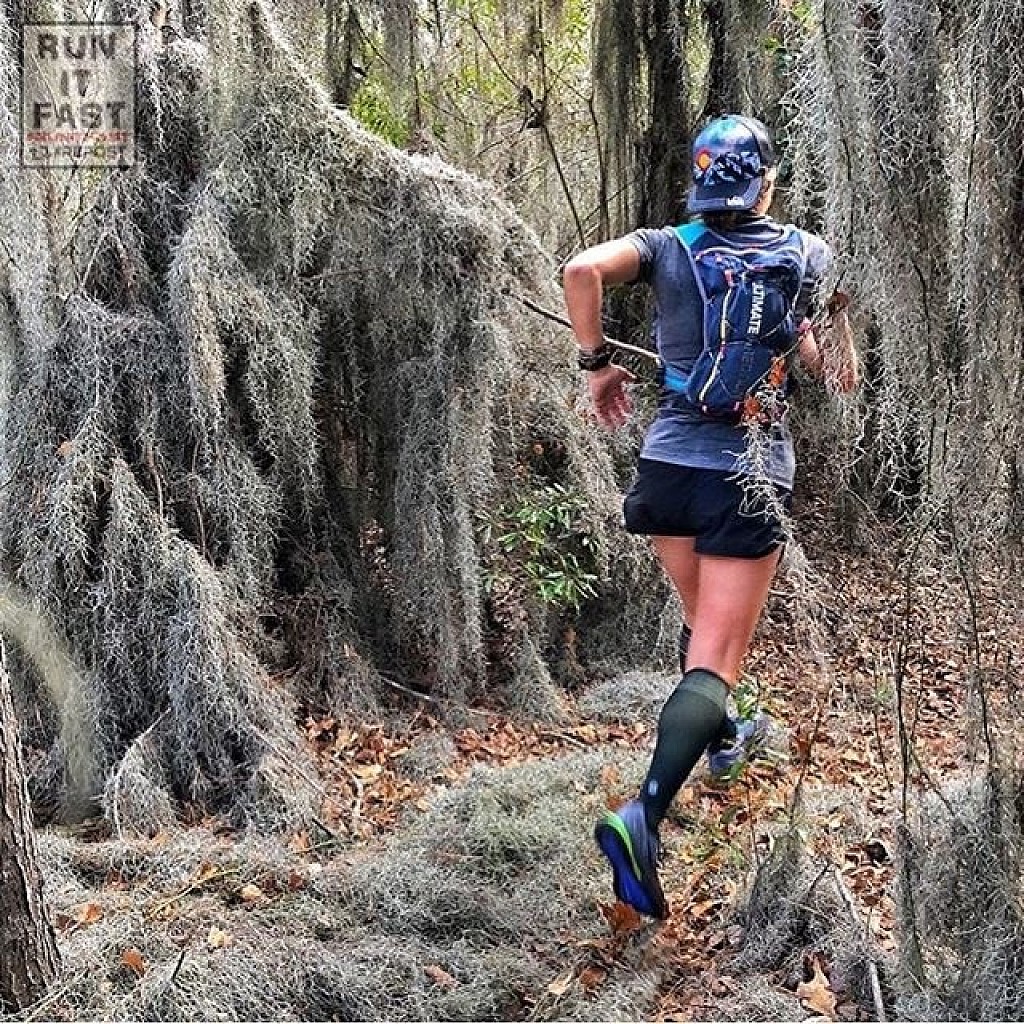Running News Daily
Running News Daily is edited by Bob Anderson. Send your news items to bob@mybestruns.com Advertising opportunities available. Train the Kenyan Way at KATA Kenya and Portugal owned and operated by Bob Anderson. Be sure to catch our movie A Long Run the movie KATA Running Camps and KATA Potato Farms - 31 now open in Kenya! https://kata.ke/
Index to Daily Posts · Sign Up For Updates · Run The World Feed
Articles tagged #Badwater
Today's Running News
U.S. Olympian Jenny Simpson completes 7 marathons in 7 days
Two weeks after finishing 18th at the New York City Marathon in 2:31:54, U.S. Olympian Jenny Simpson tackled one of the most gruelling challenges: the Great World Race, which involves running seven marathons on seven continents in seven days.
The decorated middle-distance runner was a late addition to the event that offered a fitting end to her storied career. Over her career on the track, Simpson won four medals at major championships, including an Olympic bronze in the 1,500m at Rio 2016 and a gold medal at the 2011 World Championships in Daegu, South Korea.
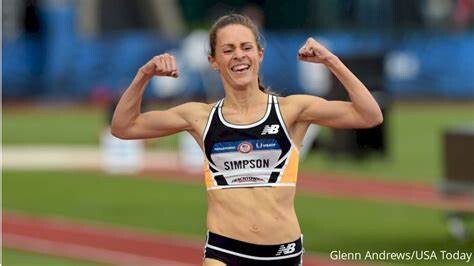
The Great World Race kicked off on Nov. 14 at Wolf’s Fang, Antarctica and concluded on Nov. 20 in Miami. Simpson completed the challenge with the following times:
Antarctica: 3:31
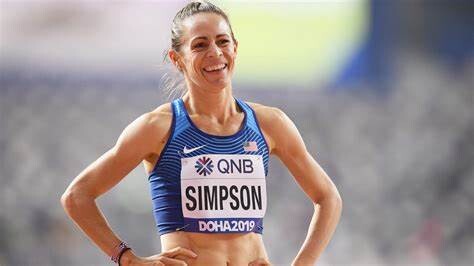
South Africa: 3:15
Australia: 3:12
Turkey: 3:11
Istanbul (overlap leg): 3:15
Colombia: 3:16
Miami: 5:15
Simpson finished fourth in the women’s competition. The week-long-race was won by Ashley Paulson, a two-time Badwater 135 champion, while the men’s race went to David Kilgore after Ireland’s William Maunsell withdrew on the fifth day–four days after he set a continental marathon record on Antarctica.
Reflecting on her last-minute decision to join, Simpson said the invitation was an irresistible opportunity to challenge herself one last time. Initially, it was announced the New York City Marathon would be her final race, but the chance to “run around the world” was too much to pass up for Simpson.
“I have never in my life been so happy to see a finish line,” Simpson wrote on Instagram. “Seven marathons in seven days, plus around the world in one week! My body is surprisingly resilient and I’m so glad I did it.”
Participation in the jet-setting event doesn’t come cheap—the USD $52,000 entry fee covers charter flights, in-flight meals and emergency evacuation coverage for the Antarctica leg. Despite the cost and the gruelling schedule, the event is a bucket-list challenge for many hardcore marathoners.
by Marley Dickinson
Login to leave a comment
Leadville 100 sees long-standing course record fall
This year's edition of "the race across the sky" saw history-making performances on both the men's and women's sides
Leadville 100, known as the “race across the sky” for its stunning vistas as it traverses the Colorado Rockies, has been a staple in the ultrarunning community since its inception in 1983. This year’s event saw blistering performances in both the men’s and women’s races, with popular coach and author David Roche taking 16 minutes off the long-standing course record, and women’s race winner Mary Denholm recording the second-fastest time ever at the event.
The 100-mile race has runners climbing nearly 4,800 metres of elevation gain over rugged mountain trails, and runners begin and end in Leadville, Colo.
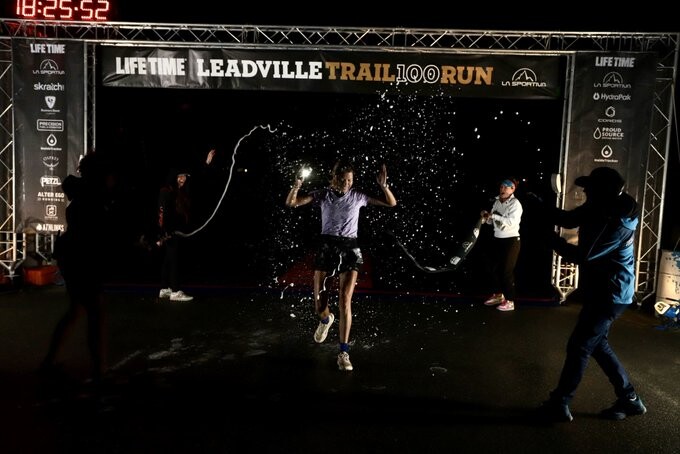
Women’s race
Denholm took off hot and dominated the competition from start to finish. By the halfway point, she had built an insurmountable 50-minute lead. She crossed the finish line in 18:23:51, securing the second-fastest time ever recorded for the women’s race, just short of legendary Ann Trason’s mark of 18:06:24, set in 1994. Denholm was followed by fellow American runners Zoe Rom in 21:27:41, and Julie Wright in 21:48:57.
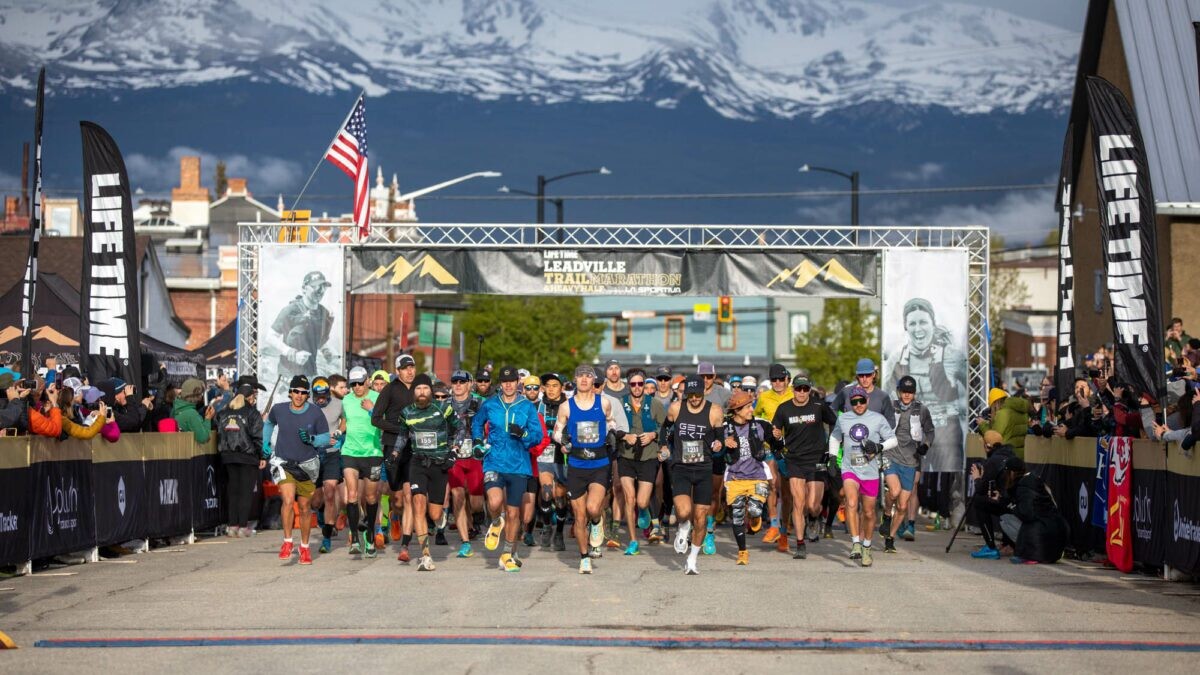
Alberta’s Ailsa MacDonald and Molly Hurford of Ontario were initially in contention for podium positions, but both faced challenges that saw them taking DNFs. Hurford left the race after suffering a badly sprained ankle, and MacDonald after dealing with unrelenting gut issues.
Men’s race
Like Denholm, Roche set a fast pace from the start and built on his lead throughout the race. His time of 15:26:34 took more than 16 minutes off the previous course record, set by Matt Carpenter in 2005. He was followed in by U.S. ultrarunners Adrian Macdonald in 15:56:34, and Ryan Montgomery in 16:09:40.
Pete Kostelnick, a well-known ultrarunner famous for completing the fastest transcon run of the U.S. in 2016 (42 days, six hours and 30 minutes), made a remarkable return to running earlier this year after recovering from a severe car accident that resulted in multiple pelvic fractures. In May, Kostelnick finished the Cocodona 250, followed by Badwater 135 only a few weeks ago; he finished Leadville 100 in 24:30:18.
Calgary’s Reiner Pauwwe took the 28th overall position (24th man) in 22:16:59.
by Keeley Milne
Login to leave a comment
Leadville Trail 100 Run
The legendary “Race Across The Sky” 100-mile run is where it all started back in 1983. This is it. The race where legends are created and limits are tested. One hundred miles of extreme Colorado Rockies terrain — from elevations of 9,200 to 12,600 feet. You will give the mountain respect, and earn respect from all. ...
more..."It’s all about seeing what I can do" – 74 runners cross the finish line after tackling temperatures over 100F in Death Valley ultra
The race is frequently billed as the world's toughest foot race
What is the toughest race in the world? If you're a trail runner, the obscure Barkley Marathons probably comes to mind with its overgrown terrain and mind-boggling 54,200 feet of accumulated vert. But for those whose preferred mode of transport is road running shoes? There's nothing quite like the Badwater 135 which wrapped up yesterday morning in typically grueling conditions.
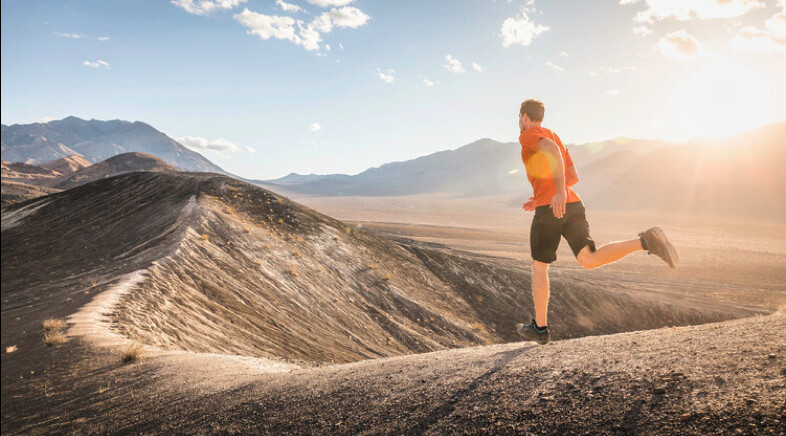
An impressive 74 runners out of 97 hopefuls who took off from the starting line in Death Valley National Park had crossed the finish line Wednesday morning after running through daytime temperatures as high as 120 degrees Fahrenheit (48.8C) and nighttime lows above 100F (37.7C). A recent heat wave sweeping the western states has been blamed for several deaths in National Parks including one in Death Valley on July 6 when a motorcyclist succumbed to heatstroke.
In addition to extreme heat, these hardy runners encountered higher humidity than normal as they set off during a light rainstorm. The course took them from Badwater Basin, the lowest point in North America, to the trailhead of Mount Whitney at 8,300 feet and over three mountain ranges with a total elevation gain of 14,600 feet.
“For me it’s all about seeing what I can do, you know, testing my own limits, seeing how well I can do these extreme things,” Alabam runner Jessica Jones tells the Associated Press.
In the end, it was Colorado runner Shaun Burke, 37, of Durango who took first place in the men’s division with a time of 23:29:00 while 52-year-old Line Caliskaner of Norway led the women’s division, at 27:36:27 and finished second overall. We're willing to bet these runners had done some serious heat training and had some well-rehearsed hydration strategies in place to survive this course.
Race organizers do not provide aid stations or support during the race, which has been an annual event since 1987. To date, there have been no fatalities at the Badwater 135.
Login to leave a comment
Harvey Lewis races Badwater 135 for the 13th time in a row
This year’s edition of Badwater 135, dubbed the “world’s toughest foot race,” kicked off on Monday, plunging runners into the brutal extremes of California’s Death Valley. This year’s race featured the return of fan favorites, including Backyard Ultra world champion Harvey Lewis, a two-time Badwater winner making his 13th consecutive appearance, and fellow American Pete Kostelnick, also a two-time champion, who made a remarkable comeback after a severe car accident in Leadville. American Shaun Burke claimed the overall victory amidst the scorching heat, while Norwegian Line Caliskaner triumphed in the women’s category, finishing an impressive second overall.
The 135-mile (217km) race kicks off at the Badwater Basin, which, at 85 metres below sea level, is the lowest point in North America. This year’s race saw temperatures hitting a scorching 51 degrees Celsius. Runners who finish under the 48-hour mark earn the prestigious Badwater 135 belt buckle.

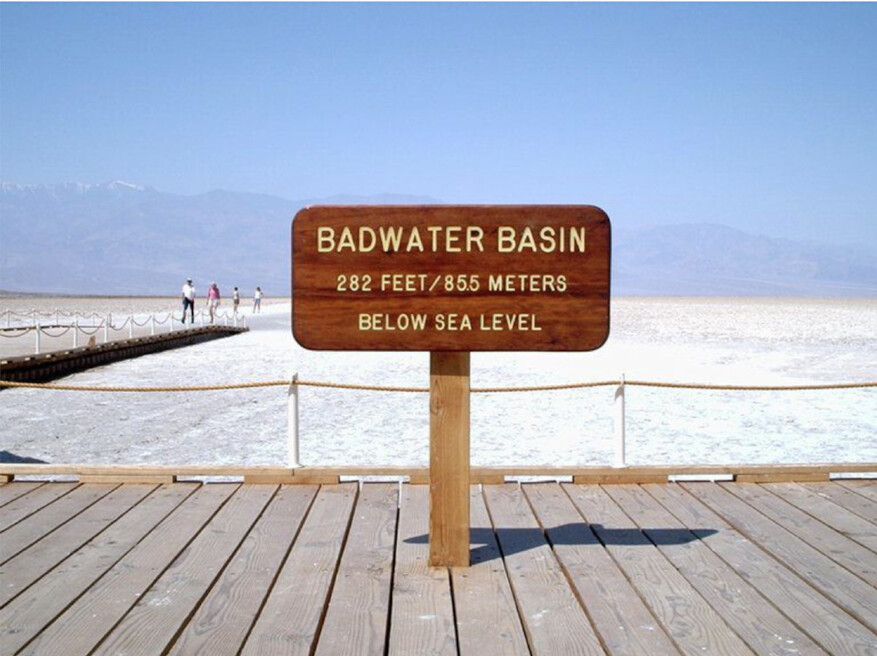
In 2023, Viktoria Brown of Whitby, Ont., was the only Canadian in the field of 100 runners and finished in 30:11:52 securing fourth among the women and claiming 13th place overall. This year’s race saw two Canadians joining the ranks—Frances Picard of Quebec, and Hannah Perry from Canmore, Alta.
Men’s race
Last year’s men’s champion, Simen Holvik of Norway, led for much of the race—in 2023, Holvik was second to U.S. runner Ashley Paulson, who finished first overall and took two hours off her own women’s course record. Burke, who received a late invite to the event in June, steadily closed the gap, eventually overtaking him before the 108-mile timing point. Holvik did not finish the race, leaving Burke unchallenged for the remainder.
Burke completed Badwater for the first time in 2023, when he was sixth overall and fourth among the men. Spanish runner Iván Penalba Lopez claimed the second men’s spot (third overall) in 28:06:34 in his third finish of the race, and Michael Ohler of Germany completed the men’s podium and third man (fourth overall) in 28:24:25. Kostelnick succeeded in finishing his come-back race, crossing the line in 35:28:55; Lewis followed in 36:41:22.
Picard, who was tackling the race for the first time, was still on course at the time of publication.
Top men
Shaun Burke (U.S.) 23:29:00 Iván Penalba Lopez of Alfafar (Spain) 28:06:34 Michael Ohler (Germany) 28:24:25
Women’s race
Caliskaner became the first Norwegian woman to complete the event, finishing second overall. An accomplished ultrarunner, in 2023 52-year-old Calinskaner won both the Berlin Wall Race (100 miles), and the Thames Path 100-miler. She maintained a narrow lead over Micah Morgan of the U.S. early on and added to her lead as the race progressed. Caliskaner finished in 27:36:27, over two hours ahead of Morgan, who finished in 29:11:28, second among the women and fifth overall.
Josephine Weeden of the U.S. rounded out the women’s podium in 33:26:37. Absent from this year’s race was American Ashley Paulson, who won the women’s race for the past two years and took the overall title last year. Alberta’s Perry was still on course at the time of publication but had passed through the 108-mile aid station in 29 hours and 51 minutes.
Top women
Line Caliskaner (Norway) 27:36:27 Micah Morgan (U.S.) 29:11:28 Josephine Weeden (U.S.) 33:26:37
by Running magazine
Login to leave a comment
Buddy the Elf Shatters Guinness Record with Help from Pro Ultramarathoner
Jason Homorody was gunning for the fastest half marathon as a movie character when he ran into Harvey Lewis.A modern-day staple of road running is unexpectedly coming across people running in costume either for a charity or in the hopes of setting a Guinness World Record, but sometimes, these costumed individuals discover the unexpected themselves.
On Sunday, Jason Homorody, 50, was beginning his quest to break the record for the fastest half marathon time while dressed as a movie character—Buddy the Elf from Elf in his case—at the Warm Up Columbus Half Marathon when he received some surprising support from a fellow runner. While attempting to break the previous 1:30:42 record, Homorody, who—obviously—loves Elf and regularly wears the costume around to “cheer people up,” was joined by Harvey Lewis, the current backyard ultramarathon record holder and well-decorated ultrarunner, who has won the likes of the Badwater 135 and USATF 24-Hour National Championships.
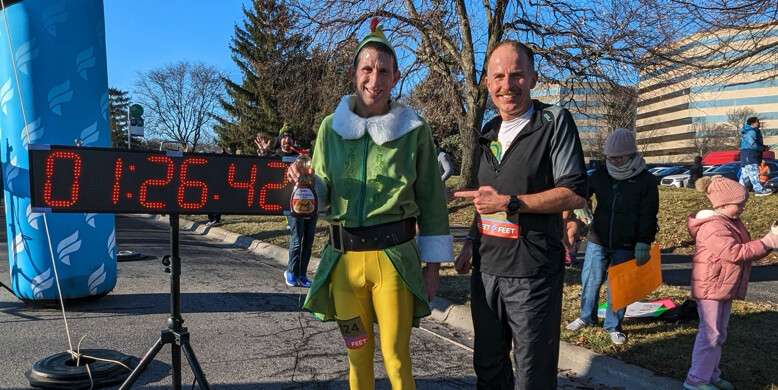
“[He] came up on my shoulder and asked me what pace I was going for,” Homorody told Runner’s World. “Once I answered some questions, he asked if he could run with me. Honestly, at first, I had no idea who he was. But he ran with me the entire race.”Homorody also said Lewis helped him with hydration during the race. “When we would pass the water stop on the course, he was asking if he could get me anything. He kept encouraging me to get water because I think he was concerned about me overheating in my costume,” Homorody said, adding that the two talked about Lewis’ upcoming races during the event.“I was picking his brain about ultramarathoning,” Homorody said. “I knew he recently had a crazy backyard ultra world record, and I was asking if he was almost falling asleep at any point while running, and he said yes.”
So, did the support of an ultramarathoner ultimately push Homorody to his goal? It seems like it, as Buddy the Elf crossed the finish line in 1:25:44, besting the previous record by more than 5 minutes.
“[Lewis] was just a very down-to-earth guy, and he seemed genuinely excited to help pace me to my world record attempt,” Homorody said.
by Runner’s World
Login to leave a comment
Viktoria Brown smashes her own 6-day record
Whitby, Ont.’s Viktoria Brown has conquered the multi-day racing scene, and she just keeps getting better. Brown ran a whopping 747 kilometers at the EMU 6-day Race in Hungary, besting her previous Canadian 6-day record of 736 km. Runners competed on an 898.88 meter-long certified road loop that was 100 per cent asphalt.
Brown is well-known for her many multi-day records, and for recently competing at Badwater 135, the scorching ultra in Death Valley, Calif., where she finished fourth.

She holds the 48h Canadian record (363 km), and the 72-hour Canadian record (471 km), and was the owner of the 72h WR, recently bested by Danish athlete Stine Rex. She entered EMU having trained minimally, and became ill with salmonella poisoning partway through the event.”My goal at this race was to hit 800 kilometers,” Brown told Canadian Running.
“Only three women have ever done that, and I believe that without the salmonella poisoning, I would have hit it,” she said. “I only ran 56 km on day five, while I ran 110+ km on all other days, including 151 km on day six.”
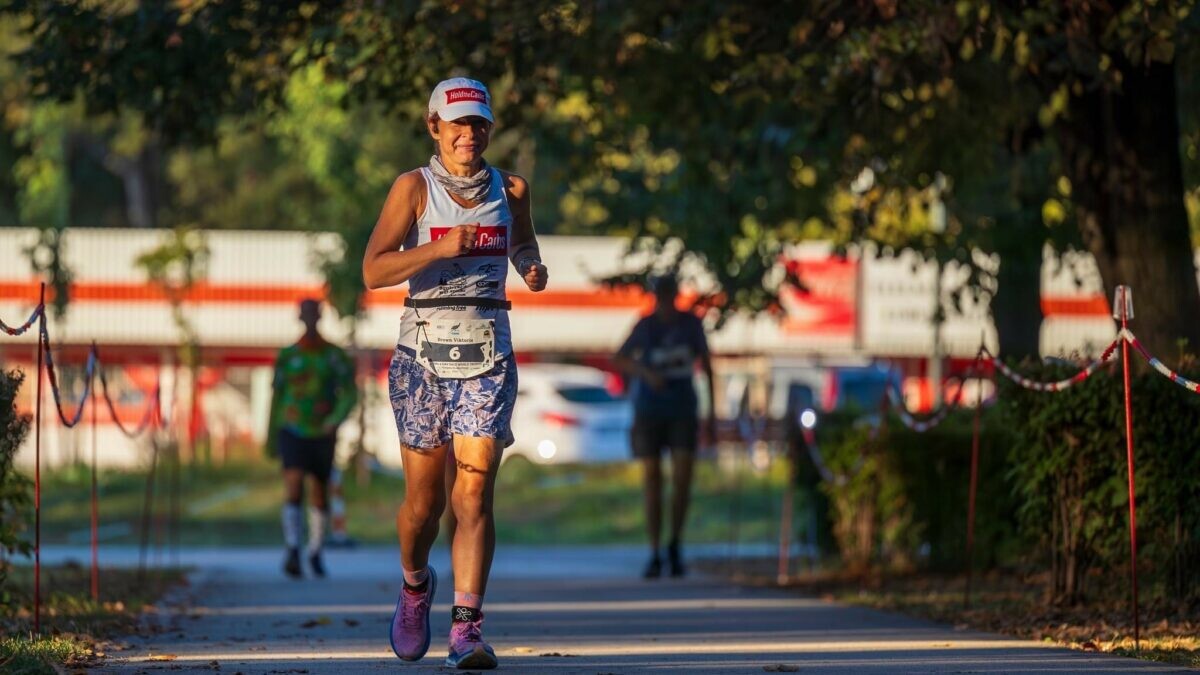
Ultras are often a test in troubleshooting, and this is only magnified by multi-day racing.”Vomiting started at noon on Monday (the start of day five) and went on all day until I went down for sleep around 10 pm,” Brown said. “I got up at 3:30 am, was back on the course at 4 a.m., and ran straight until the race ended, 32 hours later.” Brown says she was extremely lucky to have a medical doctor on her crew, whom she credits with bringing her back from illness.
To combat the salmonella, Brown slept for six and a half hours to reset her body.”I wasn’t throwing up anymore, although my body was completely empty and I still had diarrhea,” she said. “But that meant that five-10 per cent of the intake was absorbed, so we could slowly start to refuel.” Brown had to walk until late afternoon on Tuesday, both because her body was recovering and due to intense heat during the daytime.”By late afternoon I was able to start jogging, then running, and then even running relatively fast by the end.”
Brown says she felt she was unable to train for this race, but her excellent base fitness proved to be enough. “After the 48h World Championship in August (that I won) I had some slight pain under my right knee, so I could only do minimal training,” she explains.”By the time the injury healed, I caught a cold, so then I couldn’t train at all. Maybe being more rested for this race helped more than the training would have,” said Brown.
Post-race, Brown says it’s hard to catch up on sleep, but she has a surprising lack of soreness and no blisters.”My body is in great shape, but my mind will need some serious recovery,” the runner said. “These races are extremely demanding mentally.” Brown will compete next at the Kona Ironman World Championship in Hawaii in October, and later at the 24-hour world championship with Team Canada in Taiwan.
by Keeley Milne
Login to leave a comment
Hardrock 100 preview: will Courtney Dauwalter do it again?
The Hardrock Hundred Mile Endurance Run (HR100), known for its high altitude, deep elite field and challenging entry process, begins Friday at 8:00 a.m. E.T. This year’s event, the first ever to be live-streamed, promises to be a thriller. Runners will encounter over 10,000 metres of elevation gain while facing extreme weather conditions, navigating treacherous terrain and attempting to avoid altitude sickness.
Only 140 participants get to line up at Hardrock each year, and this year’s contenders include the remarkable Courtney Dauwalter, fresh off a jaw-dropping performance and course record at the Western States 100, and other well-known elites. The race will be live-streamed on the Run Steep Get High YouTube channel. Here’s what you need to know to follow along.

HR100 both begins and ends in Silverton, Co., and athletes are above 3,300 metres elevation for much of the race. It was founded in 1992 as a tribute to the miners who used to follow “their mules and instincts, prospecting the San Juans for gold, silver, and other metals,” the race website explains. With a finishing cutoff time of 48 hours, athletes know they are in for a long haul. The course switches directions every year, and this year runners are moving counter-clockwise around the looped course.
The women’s race
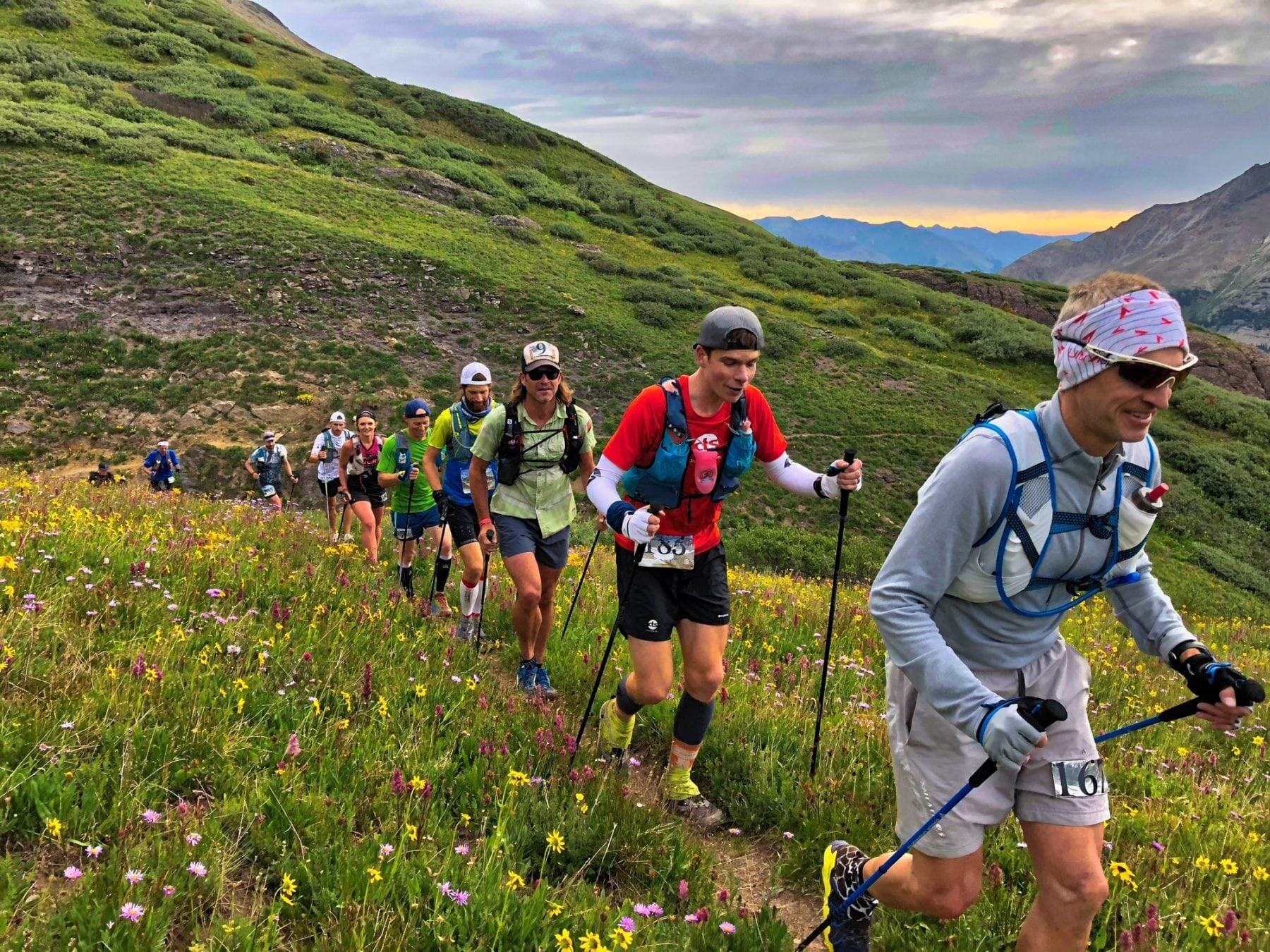
All eyes are on the phenomenal Dauwalter this year (but when are they not?) after a stunning performance three weeks ago at Western States, where she set a blistering new course record (78 minutes faster than Canadian Ellie Greenwood’s from 2012) and placed fifth overall. Canada’s Stephanie Case, who was second last year, has withdrawn from this year’s event. 60-year-old legendary ultra machine Pam Reed of Jackson Hole, Wyo., will be tackling the third part of her WSER/Badwater 135/HR100 triple this year.
Leadville, Colo.-based Dauwalter holds the course record for HR100 in the clockwise direction (26:44) from 2022; this year runners will move counter-clockwise, and that course record is 27:18 for women, set by Diana Finkel in 2009, and Dauwalter will most certainly be looking to challenge that time. Will her legs be tired? Will she win the entire thing? We can’t wait to find out.
Also from Leadville, 23-year-old trail phenom Annie Hughes won the Run Rabbit Run 100-Miler and High Lonesome 100 Mile in 2022, and the Leadville 100 Mile in 2021. She’s a high-altitude ultrarunning champ, and has also compiled some wins in really long races–she won the Cocodona 250 Mile in 2022 and Moab 240 in 2021.
If you haven’t heard of France’s Claire Bannwarth, it’s time to brush up: she was the first woman in the 432-kilometre 2022 Winter Spine Race (by more than 24 hours), and will be making her North American racing debut at HR100. Bannwarth races prolifically and runs long–she will be jumping into the Tahoe 200 Mile race a week after HR100.
Colorado’s Darcy Piceu, fresh off the waitlist, is a veteran of HR 100, with the 2023 edition being her 10th running. Piceu boasts three wins and five second-place finishes, and she was fourth in 2022.
The men’s race
With Kilian Jornet, last year’s winner (and course record holder in the clockwise direction) not returning this year, the podium seems up for grabs. None of the other top four men from 2022 will be headed to the San Juans, but a very accomplished group of athletes will be lining up and fans will be eager to see who holds up to the HR100 test.
Ohio’s Arlen Glick is a master of the 100-mile distance, running 12:57 to win the Umstead 100-miler in April and taking a speedy third at October’s Javelina 100. Like Dauwalter, Glick raced at WSER last month. He placed 14th, while he took third in 2022. Glick will be a hot contender and fascinating to watch at HR100.
California-based Dylan Bowman is a Hardrock veteran, placing second at the 2021 edition. Bowman has had a lower racing profile in the past year while working on Freetrail, a media business and trail running community. He’s been training in the San Juans pre-race and is eager to showcase his ability.
France’s Aurélien Dunand-Pallaz has over 10 years of ultrarunning success, but gained notoriety in 2021 when he took second at UTMB and won Spain’s Transgrancanaria. He missed the 2022 edition of HR100 for the birth of his child and is a favourite in his debut this year.
Oregon-based trail running legend Jeff Browning will be taking on his sixth Hardrock at age 51. Browning won in 2018, and finished fifth the past two years. In October, Browning won the Moab 240 in 57 hours, and more recently, he showcased his fitness by winning the Bighorn 100.
by Keeley Milne
Login to leave a comment
Hardrock 100
100-mile run with 33,050 feet of climb and 33,050 feet of descent for a total elevation change of 66,100 feet with an average elevation of 11,186 feet - low point 7,680 feet (Ouray) and high point 14,048 feet (Handies Peak). The run starts and ends in Silverton, Colorado and travels through the towns of Telluride, Ouray, and the ghost town...
more...Ashley Paulson wins Badwater 135, smashing her own course record
The defending women's champion chopped nearly two-and-a-half hours off last year's time to finish first overall.
Defending Badwater 135 women’s champion Ashley Paulson has smashed the women’s course record she set last year, chopping nearly two and a half hours off her 2022 time to finish first overall at this year’s race.
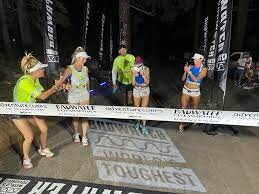
Paulson, of St. George, Utah, completed the course—an infamously hot and gruelling 135-mile (217-km) run through California’s Death Valley to Mount Whitney—in 21:44:35. In doing so she not only demolished the women’s record she set last year (24:09:34) but finished more than 20 minutes ahead of this year’s men’s champion, Simen Holvik of Norway (22:28:08). Temperatures during the race have been known to soar well above 100 F (37 C).
Placing second in the men’s category and third overall was last year’s winner, Yoshihiko Ishikawa of Japan (23:52:29), who has two Badwater 135 victories under his belt. He was followed by fourth-place finisher and second-place women’s runner Sonia Ahuja of Thousand Oaks, Calif., who trailed Paulson by nearly two hours, finishing the course in 25:42:51. Rounding out the top five finishers was 2021 champion Harvey Lewis of Cincinnati, who completed his 12th Badwater 135 in 27:26:49, finishing third among the men. Rounding out the women’s podium was Maree Connor of Lambton, Australia (27:49:24).
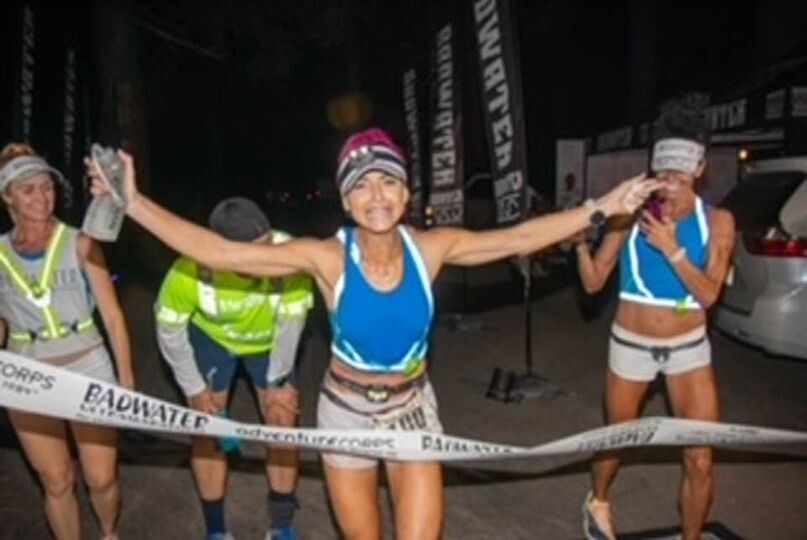
Viktoria Brown, the only Canadian in the field of 100 runners, finished strong, running 30:11:52 to place fourth among women and claim 13th place overall. It’s been a stellar year for the Whitby, Ont., ultrarunner, who in March broke her own 48-hour Canadian record and 72-hour world record while competing at the GOMU (Global Organization of Multi-Day Ultramarathoners) six-day world championships in Policoro, Italy.
With her commanding victory this year, Paulson becomes the first woman to win back-to-back races at Badwater since Japan’s Sumie Inagaki won the event in 2011 and 2012.
Paulson’s win last year came amid some controversy. In 2016, the professional runner and triathlete accepted a ruling from the United States Olympic Committee National Anti-Doping Policies (USADA) banning her from competition in triathlon events for six months, the result of an anti-doping rule violation. She had a positive result for ostarine, a selective androgen receptor modulator (SARM), during a random sampling.
Follow-up tests found ostarine in a contaminated supplement the athlete was taking. In an analysis of Paulson’s GPX files and other data, Derek Murphy, who runs the site marathoninvestigation.com, concluded that her Badwater data was clean and showed no evidence of cheating.
This year’s race, which started Tuesday at 8 p.m. PDT, and lasts 48 hours, marks the 46th running of the Badwater 135. Considered by many to be the world’s toughest foot race, the ultramarathon begins at 85 metres below sea level—the lowest elevation in North America—and takes runners up to 2,548m of altitude.
by Paul Baswick
Login to leave a comment
Badwater 135
Recognized globally as "the world’s toughest foot race," this legendary event pits up to 90 of the world’s toughest athletes runners, triathletes, adventure racers, and mountaineers against one another and the elements. Badwater 135 is the most demanding and extreme running race offered anywhere on the planet. Covering 135 miles (217km) non-stop from Death Valley to Mt. Whitney, CA, the...
more...This Ultrarunner Is Living in a Glass Box for 15 Days
During the experiment, Krasse Gueorguiev will have only a bed and a treadmill
Krasse Gueorguiev, a Bulgarian ultramarathon runner, will spend 15 days in a glass box in a park in Sofia, Bulgaria, to raise money to help young people battling addiction.

Gueorguiev, a motivational speaker and charity ambassador, has run nearly 30 ultramarathons worldwide, from the Arctic to Cambodia, including the 135-mile Badwater Ultramarathon in Death Valley, California.
"I want to challenge myself," Gueorguiev told Reuters. "I want to show when you put someone in the box how psychologically they change."
Proceeds from the stunt will be used for several projects aimed at preventing addiction for children under 18, not just for drugs and alcohol—the runner also hopes to help teens avoid addiction to things like social media and energy drinks.
On Sunday, the runner was placed in a box with three glass walls on a pedestal in front of the National Palace of Culture in Sofia (Bulgaria's capital). During the experiment, Gueorguiev will have only a bed and a treadmill, with no access to books, a computer, or a phone. He will only be allowed to speak to members of the public for 30 minutes each day.
"This is not a physical experiment; it is a psychological experiment," he said.
If the stunt sounds familiar, you may remember magician David Blaine undertaking a similar experiment in 2003. The illusionist spent 44 days in a glass box suspended over the River Thames in London.
The stunt was met with much public outcry, though, unlike Gueorguiev, Blaine's time in the box was for entertainment purposes only. He endured drumming from the crowd in the evening hours and having eggs and other items hurled at his temporary home. The magician seemingly took it all in stride. "I have learned more in that box than I have learned in years. I have learned how strong we are as human beings," Blaine told reporters after emerging from the box. Upon completing the 44 days, Blaine was noticeably thinner, with depleted muscle mass and a thick beard.
Only time will tell if a similar fate inside the box will befall Gueorguiev.
This is also not the ultrarunner’s first attempt at performing a stunt in the name of goodwill. In 2019, Gueorguiev ran about 750 miles through Bulgaria, North Macedonia, and Albania to urge the governments to build better infrastructure, and in January of 2018, Krasse ran for 36 hours straight on a treadmill at a Sofia shopping mall.
by Runner’s World
Login to leave a comment
Viktoria Brown breaks 72-hour world record, 48-hour Canadian best in Italy
Earlier in March, Whitby, Ont., runner Viktoria Brown broke her own 48-hour Canadian record and 72-hour world record while competing at the GOMU (Global Organization of Multi-Day Ultramarathoners) six-day world championships in Policoro, Italy. Brown ran 364 km over 48 hours and 475 km after 72, beating her two previous records by 11 km and 8 km, respectively. She finished the six-day event with a grand total of 684 km to take home the women’s individual gold medal.
The event in Italy marked the first six-day world championship organized by GOMU, which was founded in 2021. Brown is a vice president, as is Greek ultrarunning legend Yiannis Kouros; Canadian ultrarunning pioneer Trishul Cherns is president. The organization held its first world championship event—a 48-hour competition—in New Jersey in September 2022, and Brown and the team are looking to add 72-hour and 10-day races into the mix in the near future.
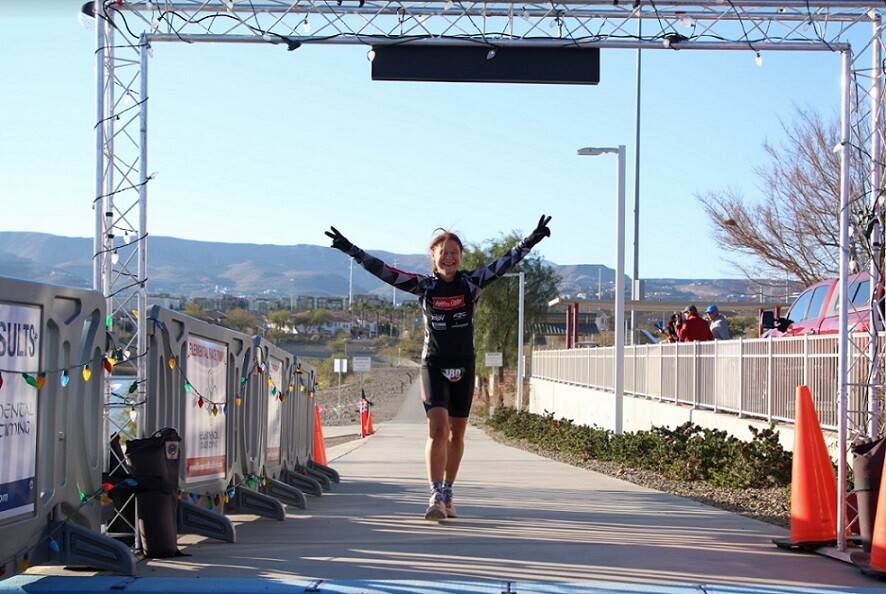
Canada didn’t send a team to the GOMU worlds, so Brown competed for Hungary, where she also holds citizenship. She helped lift the Hungarian women to the team world championship to pair with her individual gold medal. Going into the event, Brown’s Canadian 48-hour record stood at 353 km, which she ran in June 2022 at the Six Days in the Dome event in Wisconsin. After two days of running in Italy, she had eclipsed her PB to add another 11 km to her national record, which now stands at a whopping 364 km.
Up next was the 72-hour mark, and Brown had her eyes on her world record of 467 km. She ran that amazing result at the same race where she posted her 48-hour best last June. Just like she did in Wisconsin, Brown charged forward after securing her 48-hour record, and eventually toppled her 72-hour best, too, with a tally of 475 km.
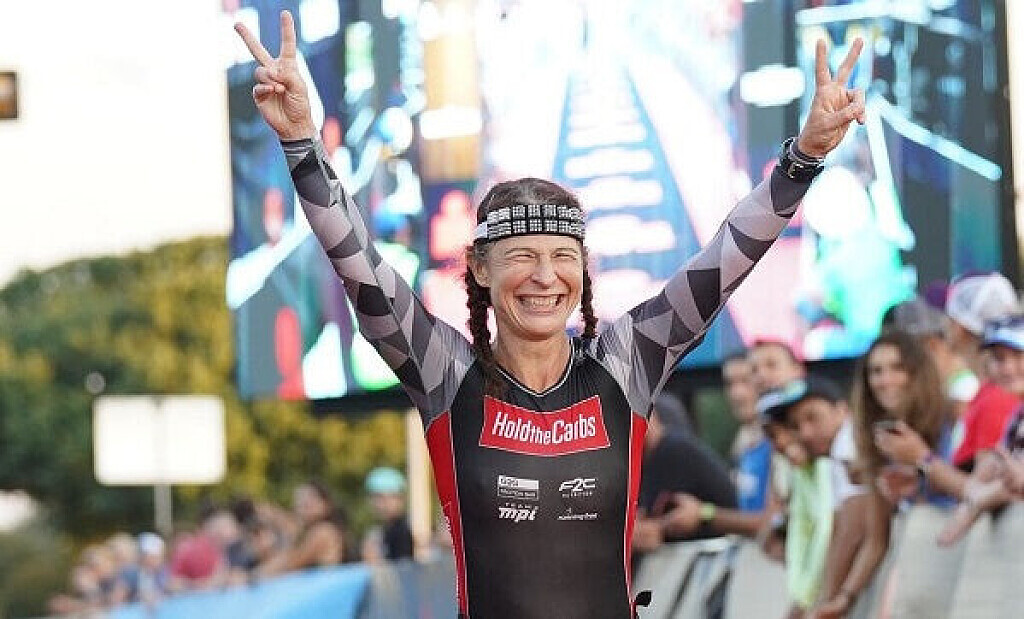
At that point, Brown already had two records in the books, but she was still only halfway through the six-day race. She carried on for another three days, eventually finishing with a phenomenal winning result of 684 km. That’s an amazing total, but even more incredible is the fact that it’s more than 50 km shy of Brown’s six-day PB (and, you guess it, another Canadian record) of 736 km. As with her 48- and 72-hour marks, Brown ran that result at the Six Days in the Dome last year.
Brown says the next race on her schedule is the Badwater 135 ultramarathon in California, but since that isn’t until July, she may take another shot at the 72-hour record with hopes of improving her world record once again.
by Running Magazine
Login to leave a comment
Tunnel Ultra: The mind-bending 200-mile ultra-marathon in the dark
How do you like to spend your weekend off?
Do you put your feet up in front of the TV? Maybe shopping is your way to unwind? Perhaps you're a bit more adventurous and enjoy a stroll in the countryside?
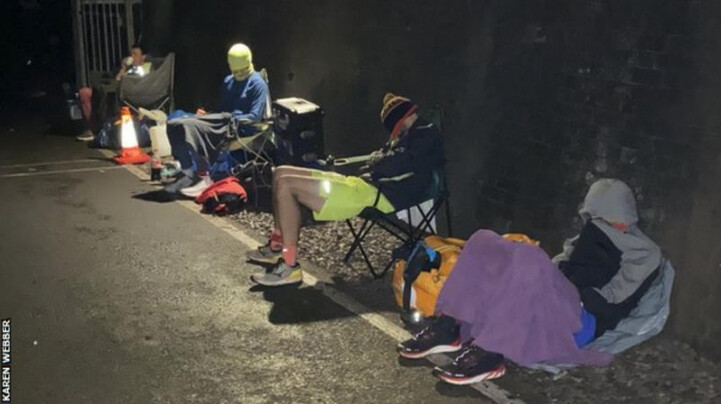

That doesn't quite cut it for some people, who choose to run a 200-mile ultra-marathon in a disused railway tunnel instead.
The Tunnel Ultra is a race like no other. It's easy to find longer events. Some even involve repeating the same loop for days on end. But nowhere else can you take part in a race so twisted that you spend more than two days in darkness doing a one-mile shuttle run 200 times, or so punishing that one runner went temporarily blind - then thanked the race organiser for the privilege.
No outside support is permitted, headphones are banned and runners are not allowed to run side by side. Oh, and there is a strict time limit of 55 hours.
The Tunnel website describes it as "a mind-bending test of extreme endurance and sensory deprivation". It is more health warning than marketing slogan.
"I could be sat on the sofa watching Strictly with the wife and kids. Or do I want to be in a dripping tunnel, tired and miserable, knowing I've got work on Monday?" Guy Bettinson, a 45-year-old programme manager from Cumbria who won the Tunnel in 2020, wonders out loud. "I'd rather waste my weekend putting myself through misery."
"It's so pointless. You're not getting from A to B, which makes it such a massive mental challenge," says Andy Persson, another finisher that year. "If you can push your mind further than you think is possible, it's quite empowering."
Christian Mauduit, a French software engineer who won the 2021 edition, says: "I'm chasing that internal adventure - that meeting with myself. It's like a little kid - they want to see how close they can come to the fire. I'm still that little kid."
Bettinson describes every ultra-marathon start line as a "mid-life crisis anonymous meeting". "We've all got issues," he says. "It's clearly some kind of therapy."
The race takes place in Combe Down Tunnel, a mile south of Bath city centre, and starts at 4pm on a Friday in March. No more than 40 runners make it that far, partly because of a strict - and deliberately opaque - qualification process and largely because the tunnel is not big enough to accommodate many more. "Even the start line is weird," says Mauduit. "You have to stand one behind another in a queue."
Combe Down was restored as a cycle path in 2013 after 47 years under weeds. It is the UK's longest foot tunnel - and the obvious setting for an ultra-marathon if your name is Mark Cockbain.
"I like things that have got an X-factor," says Cockbain, a prolific former ultra-runner who set up the Tunnel in 2019 to add to his brilliant yet brutal portfolio of events as a race organiser. "As soon as I got permission to use the tunnel, it was a no-brainer."
The race is low key in the extreme. A fold-up table outside one end of the tunnel serves as race HQ. There is no shelter or rest area to speak of unless runners have the foresight to bring a camping chair. They must all share a portable toilet which, by the end of the weekend, would not look out of place at a music festival. Refreshments are limited to water and tea, while the most luxurious snacks are Pot Noodles. If you're lucky, they might not be out of date.
"I cut back on delicacies," says Cockbain in the matter-of-fact style for which he has become famous in the ultra-running community. "You can get through any of these races with a bit of water and food. I wanted to make it all about the running."
For Mike Raffan, a 43-year-old IT manager from Aberdeen who finished second in 2021, that's part of the appeal. "It's nice that there isn't any nonsense," he says. "The Tunnel is pure, unadulterated running. You run from one end to the other in a straight line, turn around a traffic cone, come back again, and just keep going. That's it." Persson agrees. "There's no fanfare. If you're looking to be pampered, you've come to the wrong place."
All of which adds up to a notoriously low finish rate. Of the 31 runners who started the inaugural Tunnel, only two completed it, and 13 in total in the three years it has been in existence.
"I don't want there to be no finishers," says Cockbain. "But I do want them to go through hell to get there."
So how exactly do you survive a race that is deliberately designed to break you physically, mentally and emotionally?
In one sense, it is simple. "The only things you have to think about are moving, eating, drinking, sleeping and going to the toilet. That's the limit of your universe," says Max Newton, a fundraising manager from Sheffield who was among the seven finishers in 2020. "All that jazz in real life is nonsense."
"One tactic for me is 100% commitment," says Raffan. Those words carry added weight from someone who ran 182 miles in 42 hours around his back garden three months after open-heart surgery in 2020. During another Cockbain race he continued running in conditions so bleak that his eyeball froze. "I never thought about not finishing the Tunnel. Before the race I told them, 'Do not let me stop unless there's a medical reason for it'."
Mauduit's approach is similar. "I'm asking myself all the complex questions - 'Why am I doing this? Should I go there?' - before the race, in training. During the race I just finish the lap - there's no question."
"You have to be all in. If doubt creeps in, you're gone," says Cockbain. A 50-year-old electronics engineer by trade, he completed 199 marathons and 106 ultras - including some of the toughest in the world, notably five Spartathlons, three Badwaters, a double Badwater and a 300-mile race in the Arctic - before knee problems forced him to stop running in 2011. "I could sit in a corner and hit my head with a spoon for three days if that's what I decided to do."
Bettinson admits the "possibility of failure was a big thing" when he stood on the start line, yet he went on to finish in a scarcely believable 43 hours nine minutes. It remains a Tunnel record by more than six hours and is "up there with some of the all-time greatest ultra achievements", according to Cockbain, not a man given to hyperbole.
Repeatedly running along the same stretch of tarmac throws up a mental challenge rarely found in races of any distance, let alone 200 miles (the total distance is actually 208 because the tunnel is slightly longer than a mile).
"The difficult thing with doing 100 laps is there are 100 chances to stop," says 49-year-old Newton, who also ran a 300-mile lapped ultra last summer. Even if runners quit mid-lap, they must make their way back to the start line. Mauduit agrees that the turnaround point at race HQ is often the most difficult. "Once you're on the course it's easy - everyone can do two miles," he says.
"When you reach the start line again you're facing two choices. One is calling it a day. You will still suffer, your legs will hurt, the pain will follow you for hours, and you have to deal with the fact you gave up. Or you can beat your own personal record in the tunnel and write history. You only have to be motivated for five seconds - just enough time to pick your butt up and get into the tunnel. During the Tunnel I don't do 200 miles; I do two miles 100 times."
A positive mindset is universal - some would argue essential - among those who have completed the race.
"When it's really hurting and I'd rather be in bed, I say to myself, 'I love this tunnel and I can't believe I've got this opportunity'," says Persson, a 57-year-old counsellor from Bristol who once ran 900 miles from Land's End to John O'Groats in 17 days.
"You've got to embrace it - there's no point fighting it or being grumpy. You have to find the bits that make it good," says Newton. Alan Cormack, who finished second in the inaugural Tunnel, adds: "You don't have to worry about weather, mud, navigation. And you don't have to carry a pack."
With no scenery, music or conversation, surely it must be boring? "On these runs you're often very busy," says Mandy Foyster, who staggered over the finish line five minutes inside the time limit in 2021 to become the only female runner to have completed the race. "You don't have time to get bored - you're doing maths in your head and you're so focused on keeping going."
Persson says "my personality likes routine", while Mauduit positively loves it. He once ran 238 miles in 48 hours on a treadmill, but says his favourite events are six-day races. His record is 541 miles.
For Raffan, ultras are his meditation. "People ask what I think about when I'm running. Absolutely nothing. At the best points your mind is empty. When you're in that proper trance state you're not thinking about anything."
Running 200 lengths of the tunnel means running 200 times past a speaker built into the wall at the midway point that resembles a giant eyeball and pumps out classical music on loop all day and night. "There are these little submarine-style windows which glow different colours," says Newton. "It's like super stereo."
Cormack describes it as a screeching violin, which Bettinson claims "adds to the weirdness and psychological torture". Mauduit is more direct: "It drives you nuts."
More psychological torture comes in the form of darkness. There is only dim lighting in the tunnel - which is shared with cyclists and walkers during the day - and even these are switched off between 11pm and 5am.
"Not only are you in the darkness, but you are alone and you have no headphones. It's like a giant meeting with you and your feet," says 47-year-old Mauduit. "All human bodies are conditioned by daylight. In a standard race, when the sun rises you feel great. In the tunnel you have no reference - it's always night."
"It became a very big battle to stay awake," says Foyster, a seasoned ultra-distance athlete whose idea of celebrating her 50th birthday was to cycle between Ben Nevis, Scafell Pike and Snowdon and sleep on the summits of each. "When I got to the end of the tunnel I'd step out in the daylight and just stand there for 10-15 seconds."
Foyster put more thought than most into keeping the so-called sleep monsters at bay - "I had perfume to spray and a Vicks to stick up my nose - anything to stimulate your senses" - but her most valuable tool was a small spray bottle. "When I felt myself falling asleep I sprayed myself in the face with water. That was absolutely fantastic."
Some runners might grab a power nap outside the tunnel - and pray it doesn't rain. Others treat sleep as an inconvenience in a race with an already demanding time limit. A rare few don't even afford themselves the luxury of sitting down.
"If you stop you've got to start again. If you don't stop you don't have to start again. I just kept going," says Bettinson, whose 17 years in the Army have proven an excellent grounding for ultra-running. "I did end up lying down a couple of times, but you're in so much pain by the second night that you can't sleep anyway. And you're just wasting time by not moving."
Raffan pulled out of the 2019 Tunnel after 100 miles to join his wife and daughter at the zoo. It remains his only DNF from more than 50 ultras. When he returned in 2021 he deliberately did not bring a chair. "I ended up sitting on somebody else's, but that was good because whenever they needed it, it forced me to get out."
"I don't trust myself to set an alarm and wake up, so I didn't take the risk," says Mauduit. "The only time I stopped was at the refreshment table or to go to the bathroom."
If sleeping is optional in the Tunnel, hallucinations are all but guaranteed.
"I saw a family of abominable snowmen, a massive slug and I thought I was on the edge of a cliff," says Karl Baxter, who failed to finish the race in 2020 but conquered it with less than an hour to spare the following year.
"Orange blobby monsters kept floating at me out of the darkness," says Foyster, who blames her good friend Baxter for convincing her to sign up for the race. "I wasn't in a tunnel a lot of the time - I was running through Egyptian tombs or over a suspension bridge with deep ravines."
Mauduit recalls: "On the last day it got insanely bad. I was seeing stairs; I was walking on a glass floor. I couldn't escape from it. The hallucinations were an order of magnitude stronger than anything I've ever had before. It was mind-blowing."
Cockbain has seen it countless times. "It's just total carnage," he says. "People are losing their marbles. If they stop for a rest, they can't remember which way they're going."
The effects lasted beyond the race for Persson. "I saw ticker tape, carvings in the wall, and I was convinced there was a glass conservatory with flowers. My wife and daughter picked me up and I was still hallucinating by the time I got home. I've never had that level of it before - it was so extreme."
Training for the race varies wildly between competitors. Bettinson's longest run in the build-up to his victory was a mere 12 miles; Foyster "did a lot of fast walking"; Cormack, who was scared of the dark as a child, favoured night-time runs; and Baxter attempted to simulate the boredom with lengthy treadmill sessions or by running up and down a one-mile stretch of road. He managed 48 of them one day.
Eating and drinking strategies are equally individual, but, given that runners burn about 20,000 calories during the course of the race, hunger triumphs over health. Dentists and doctors, look away now.
Pizzas, chocolate, cake and flat cola fuelled Foyster for nigh on 55 hours. Baxter polished off tube after tube of salt and vinegar crisps, all eaten on the move to save time. Jam sandwiches, flapjacks and Pot Noodles - "they really hit the spot" - kept Newton going. Raffan tucked into supermarket meal deals and butteries - a "really dense, stodgy" Scottish pastry - but describes cold custard as his "secret weapon". Persson's menu of quiche, sausage rolls and overnight oats seems positively gourmet by comparison.
Bettinson is powered by a concoction of Lucozade, pineapple juice and beetroot juice. He also liquifies food and puts it in baby pouches "so it's easy to get down". Because it is impossible to replace the energy you are burning, his plan is "fuel early and then cling on".
As the saying goes, what goes in must come out, although most runners visibly wince when they remember a toilet situation that Newton laughingly describes as "a disgrace".
Bettinson says: "The first time I did the Tunnel it was a little chemical kiddy loo that you'd take camping. It was in a half-collapsed tent with a broken zip. Mark deliberately put it in a puddle, so you had to get your feet wet just to get inside it, and after the first 50 miles it was like a festival loo - you had to hover over the top."
Even if runners can cope with the boredom, darkness and sleep deprivation, pounding tarmac for longer than some weekend breaks last takes an immense physical toll.
"Of course your legs will hurt - you're running 200 miles. What did you think was going to happen?" says Mauduit, a man whose CV also features winning a Deca Ironman - a triathlon consisting of a 23-mile swim, 1,118-mile bike ride and a 262-mile run.
"Everything after 20 miles involves pain," says Bettinson, who admits that theory was tested when his hips were in "absolute agony" 100 miles in. "Anyone can get round it - you just have to want to."
Newton's approach veers towards the spiritual. "In a weird way, if you run through excruciating pain it doesn't hurt any more," he says, with the caveat that this approach doesn't always translate to his partner Anna. "She's worried I'm going to die. She has seen me in a bad state - sometimes it has been a bit messy."
Cockbain has this advice: "The feeling of wanting to give up doesn't last - if you put something in its place."
Runners know better than to expect sympathy from Cockbain, whose stable of events also includes an unsupported 300-mile run from Hull to the south coast as well as a race where pairs of runners in boiler suits are chained together and have 24 hours to cover as much ground as possible. You can sense the disappointment in his voice when he recalls how The Hill, which involved climbing up and down a hill in the Peak District 55 times - equating to 160 miles - in 48 hours had to be scrapped after the pub which doubled as the checkpoint closed down.
Perhaps Bettinson sums up Cockbain best: "Mark has a motivational speech at the start of his races: 'If you're going too slow, speed up.'"
Baxter, a 51-year-old from Norfolk who spent 12 years in the Army and now drives lorries for a living, turned an ankle during his second attempt at the Tunnel. "It came up like an egg. I sat down for 20 minutes and I was going to quit. Mark said, 'A twisted ankle never killed anyone' and told me to carry on. It taught me a lot. Once I got to 150 miles I knew I was going to finish."
Individual motivation comes in different forms, but a common thread among finishers is the time, energy and money they have invested in a race that often few people outside their close circle of family and friends know about. Nobody gets into ultra-running for the glory, least of all those taking part in Cockbain's events.
"My wife is handling all the family by herself, working and having no fun," says Mauduit, who rode his motorbike from Paris to take part in the Tunnel. "I'm having this five-day vacation so I should do something good with that."
Bettinson flips the question on its head. "My why for being there is I chose to be there. I've paid the money, I've done the training, I've turned up. Why on earth wouldn't I finish?"
Foyster, meanwhile, does it for the sheep. Having grown particularly fond of the animals during endurance adventures such as running the width of the UK or cycling the length of it, she now uses ultra-marathons to help raise funds for a sheep sanctuary in Lincolnshire.
"When I was struggling in the Tunnel, my friend sent me videos of the sheep. I'm thinking of them at the tough times," she says. "Some people ask me if I have a coach. I say my coach is a sheep called Bella."
Foyster, who works at an animal sanctuary near Norwich, has run the London Marathon dressed as a sheep and even had a fancy dress costume lined up for the Tunnel, but never got chance to wear it because she was in such bad shape later in the race. What was the outfit? "A sheep dressed up as Darth Vader."
The gruelling nature of Cockbain's races and the derisory finish rate creates a special sort of camaraderie among runners, evident from the dark humour on the start line to the support they offer each other as they push beyond their limits.
"Everyone feels like they're in it together. It doesn't feel competitive," says Newton. Cormack, who runs a cleaning company in Aberdeen, adds: "Nobody cares if you're first or you're 20th." Bettinson says: "Mark's events feel less like a race and more about the entrants against the event as a collective. You're only ever racing against yourself."
Foyster, 56, says she goes into any event with a "1,000% determination to finish it", but her unwavering drive in the Tunnel took her to a place she had never been before.
"After 100 miles my body started to break down," she recalls. "By 150 miles I had adopted my walk-shuffle approach, and in the last 10 miles I completely lost my mind. I kind of went over to the other side.
"At mile 192 I became completely disorientated and started going the wrong way. I thought I was wandering along a quiet country lane. I didn't know who I was or what I was or what I was doing."
In a rare moment of weakness/graciousness (delete depending on the coldness of your heart), Cockbain allowed Foyster's friend to accompany her as she staggered to beat the time limit. He even turned cheerleader on Foyster's final lap.
"At mile 198 my vision went," says Foyster. "I couldn't see anything. I crashed into the wall a few times. I had a broken tooth. I felt like I just needed to collapse on the floor. It was the first time that I'd felt worried about myself physically.
"Mark appeared behind us on a bicycle shouting 'you've got to go faster'. I was running blind - I was running into a white mist. I felt like I was sprinting flat out. I kept running until Karen the timing lady caught me in her arms." Foyster had finished in 54:55, not even time for another lap.
Because she was "in a complete and utter state", Foyster says she did not get to savour the finish line moment. "That's the only bit I regret."
She didn't miss much. "There are only a handful of people there. You get a bit of a clap, Mark shakes your hand and gives you your medal," says Persson. "It's not like you've got people patting you on the head," says 55-year-old Cormack, who then slept on the back seat of his car because he was too tired to put his tent up.
"Mark said a few words - I was so knackered I can't remember what - and I just picked my box up and went to the train station," says Bettinson. "It was a busy weekend and there were a lot of people ready for a day out. There was me, absolutely stinking, wheeling this box and eating bits of scabby old sandwich."
Foyster was so spent that she had to be carried to her hotel room. Baxter, who did some of the carrying, says: "That was just as hard as the last few miles."
"If you finish one of Mark's races you get respect from him. That means a lot," says Newton. Bettinson agrees. "Most of my medals I chuck in the bin. If it's one I'm bothered about I keep it in a drawer. I've kept the Tunnel one."
Cockbain's goal is simple: "All I want is that someone walks away remembering it for the rest of their life. Ultimately we're going to live and die. How are you going to fill up the middle of that? Achievements last forever."
"Races aren't pretty - that is real life," says Foyster. "The Tunnel is the hardest I've pushed myself. I've never needed help like that, so my overwhelming feeling was I was so grateful."
Mauduit, who describes the Tunnel as an "awesome race", adds: "I thank Mark for putting it together. I discovered something new. It was a blast. It all makes sense because it doesn't make sense. It's worth every penny."
Baxter remembers clearly his feelings in the week after the Tunnel. "I was buzzing. I felt on top of the world. I felt invincible." Newton recalls: "When I was telling people about the Tunnel I was talking with a smile on my face."
But what on earth is next for those who have completed one of the most challenging ultra-marathons invented?
Baxter tells a story typical of a certain breed of ultra-runners. "My girlfriend said, 'Is that it?' I said, 'No way. I want to go further.' Plus, no-one has done it twice." He may have company. "I'll be back one day," says Mauduit. "I'm thinking about it."
Cockbain recognises the signs from his own running days. "It's a drug. It's an addiction. It's a never-ending 'what's next?' You never get satisfied."
Even Bettinson, the record holder, says: "My holy grail is I want to finish an event where I know I've given absolutely everything - even if I don't finish. It could be one mile or it could be a thousand miles.
"I'm still chasing that unicorn."
by BBC
Login to leave a comment
Take a Sneak Peek into 'Born to Run 2'
Thirteen years after the publication of Christopher McDougall's popular book, Born to Run, the author teams up with renowned running coach Eric Orton for Born to Run 2: The Ultimate Training Guide, a fully illustrated, practical guide to running for everyone from amateurs to seasoned runners, about how to eat, race, and train like the world's best. Born to Run 2 will be available on December 6, 2022, but you can read this excerpt from the book.
Chapter 8: Form - The Art of Easy
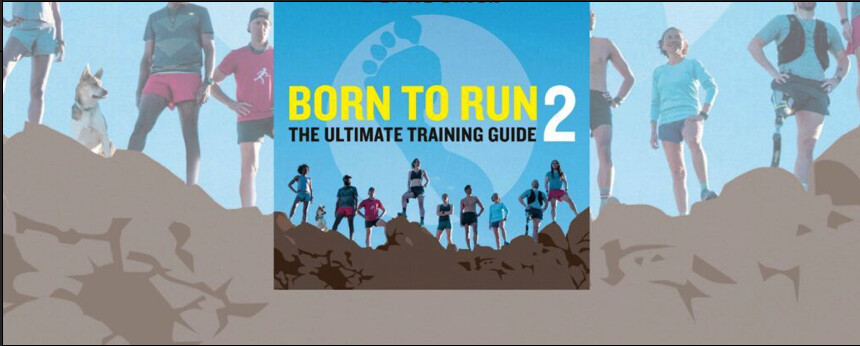
Eric promised he could teach running form in ten minutes. If I had to estimate, I'd guess he was miscalculating by a factor of at least 7,000 percent, so I subjected his proposition to lab testing and gave it a try myself:
I hit Pause and checked my watch. Then I tried it again. Each time, I found Eric's estimate to be wildly exaggerated. It wasn't even close to ten minutes. More like five.
One song. One wall. Three hundred seconds. If someone had only shared this secret with Karma Park, it could have saved her a world of misery.
Karma was such a disaster, the Navy honestly couldn't tell if she was a terrible runner or a terrific actor. How she even made it into boot camp was a mystery.
The strange thing was, running was her only weakness. Chuck her out of a boat at sea? No problem. Pull-ups, push-ups, crunches? Piece of cake. Karma was a competitive swimmer and varsity wrestler growing up, so two-hour workouts were in her blood. But ask her to run a mile and a half? In under thirteen minutes? Not a chance. Over and over she tried, and every time she ended up walking, grabbing her ribs from stitches and wincing from aches in her legs.
"I'm pretty sure the recruiter fudged the numbers on my Physical Readiness Test so she could get me in," Karma believes. "I finished the run and thought, Oh crap, I'm a minute too slow, and she's like, 'No, no, you're good.' "
When Karma got to basic training, she gritted her teeth and did her best. The Navy was her ticket to a dream life, so there was no way she was giving up. Karma was twenty-five at the time, with a wife in law school and hopes of becoming a surgeon. The surest path toward financing their future was a career in the military. Besides, she had a debt to pay back. Karma came to America from South Korea at age eleven, and while, yeah, maybe Alabama wasn't the most welcoming place for a foreign kid with budding gender issues, Karma was still deeply grateful for the life her family was able to create there.
"I really wanted to serve this country," she says. "But in boot camp I was in and out of sick bay all the time." Karma chanted the drill instructors' mottoes to herself-Pain is only skin deep! Heel to toe! Heel to toe!-but the harder she pushed, the more she broke down. "At first maybe they were checking that I wasn't dogging it," Karma recalls. "I can see how I would be suspected because I feel that other recruits faked it to get out of running, but I was in so much pain, they knew something else was going on."
Finally, Navy doctors diagnosed Karma with chronic hip displacement. She was ordered to report to the long-term sick bay, where she'd be stuck for as long as it took-a month, six months, a year-for her to either heal or quit. Those were her options: get better, get faster or get out.
Karma was crushed, but privately vindicated: ever since she was young and her mom would sign the whole family up for local 5Ks as a way of assimilating into their new home, Karma knew she couldn't run. "My dad and I would walk at the back of the pack, and I thought, This is the most ridiculous thing ever. We have cars and bikes, why are we running? I was really fit in all the other aspects of PE, but with running, I tried and tried and never got any better."
Back in civilian life, Karma struggled. She put her own education on hold and began managing a Subway so her wife could finish law school. She began putting on weight, but when she tried to exercise, her old leg injuries flared up and she finally discovered the real cause of her pain was rheumatoid arthritis. The medication made her lethargic and bloated, and her body ached so badly she needed a cane to walk.
Karma was in a bad spiral that nothing could stop. Except her wife's lover.
"My wife had an affair with a guy who was really fit," Karma says. "When I confronted her, she told me I was fat. That hit me really hard." So hard that after she and her wife separated, Karma decided to punish herself with the thing she detested most. "I decided to drown my emotional pain by subjecting myself to physical pain," she says. "When I left the Navy I swore off running-I hate it hate it hate it, never running again. This time, I decided to run myself ragged into an early grave. I hated myself and hated running, so this is what I'll do."
For once, Karma's injuries came to the rescue. Her legs seized up before her heart, and while she was searching for a new way to beat on herself, she had the enormous good luck to meet Sheridan. With that amazing woman by her side, parts of Karma that she hadn't even realized were hurting began to heal. For the first time, she had the confidence and support to face her gender identity and begin transitioning to the self that had always been buried.
She also resolved, once again, to get back into shape.
If you're keeping score at home, by now Karma has struck out three times as a runner. Over the years, I've heard a lot of stories like this from busted ex-runners-and lived one myself-but this is the first instance where I thought, okay, maybe it's time for the mercy rule to kick in and let it go for good. But against those odds, Karma stepped up again. When Sheridan gave birth to their first son, Karma set her jaw and decided their baby wasn't going to grow up with a parent hobbled with a cane or gone before their time.
"That's how I began my journey into learning how to run properly," she says.
This go-round, Karma attacked the problem from a different angle: What if her brain was the problem and not her body? Karma is a math whiz and comes from a medical family, so she was a little annoyed at herself for not realizing sooner that if your equation keeps giving you the wrong result, adding the same numbers isn't going to help. Rather than running harder, she thought, maybe there was a way she could run smarter.
Her eureka! moment occurred soon after, when she noticed that her legs hurt more on downhills than ups. That's when it hit her: What if she treated the entire planet like a hill? Get up on her forefoot, in other words, instead of heel-toe, heel-toeing it like she'd always been told.
"When I mentioned this to a friend, she immediately said, 'Haven't you read Born to Run? That's what it's all about.'"
Karma picked up a copy, and there, on page 181, she found the role model who would change her life. Not Ann Trason, the courageous science teacher who nearly outran a team of Raramuri runners in the Leadville Trail 100. Not Scott Jurek, the gracious and unbreakable hero who rose from a rough Minnesota childhood to become the greatest ultrarunner of all time. Karma didn't even see herself in Jenn Shelton, that patron saint of human fireballs, or Caballo Blanco, the lovelorn loner who used running to heal a broken heart.
Nope. When Karma looked into the mirror, grinning back at her was Barefoot Ted.
I'm not happy about this now, but when Caballo Blanco and I first met Ted McDonald, we were ready to Rock-Paper-Scissors over who was going to clunk him on the head and chuck him into the canyon. Ted likes to say "My life is a controlled explosion," which only confirmed my conviction that he has no idea what "control" means.
I was slow to see what Jenn and Billy Bonehead and Manuel Luna liked about Ted. It took a few clashes before I finally got it, including a toe-to-toe shouting match in the middle of Death Valley, where I threatened to leave Ted by the side of the road to die while he was yelling in my face, "I don't care how big you are! I'll fight you!"-at the very moment, by the way, when we were supposed to be crewing for Luis Escobar in the Badwater Ultramarathon.
But I couldn't miss the fact that lots of other people really enjoy him. Ted is a lot on a slow day, but he's also a huge-hearted friend and his own kind of genius. When I sent word to Ted that a group of my Amish ultrarunning buddies were traveling through Seattle en route to a Ragnar Relay, he immediately threw open the doors of his Luna Sandal shop and made them at home in an improvised bunkhouse. Nearly every year, Ted travels back down to the Copper Canyons and hands a wad of cash to Manuel Luna, the Raramuri artisan who taught him how to make huaraches. Not because they're partners; because they're friends.
Still, it was gratifying to see that Luis had as much steam shooting out of his ears as I did after we invited Ted to join us in Colton for our photo shoot. For forty-eight hours we couldn't get a yes or no out of the guy, which would have been fine if he'd just stayed silent as well. Instead, Luis and I kept getting cryptic little teaser texts, like digital art smiley faces that dissolved from our phones a few seconds after appearing. It felt less like waiting for a friend to show up (or not) and more like being stalked by the Zodiac Killer.
Then lo and behold, an Amtrak train pulls into San Bernardino station and out pops Barefoot Ted, a big Santa Claus backpack full of sandal-making supplies over his shoulder. He'd spent six hours getting there, and immediately began hand-crafting a gorgeous pair of custom sandals for each of our volunteer models. While his hands were busy, so was his mouth: Ted cut loose with a thirty-minute spoken-word performance that left us all slack-jawed in astonishment as he prattled on, fluently and kind of brilliantly, about everything that had been rattling around inside his skull while he was captive on the train. ("Turning everything you see into food is a superpower. Do you have it?" is the only line I remember.) Soon after finishing a dozen sandals he was gone, grabbing a lift back to Santa Barbara that same night because, unbeknown to us, he'd had a pressing commitment there all along. What a guy.
As a runner, Ted was a true revolutionary. He was so far ahead of the pack when it came to minimalism, the rest of the country took years to catch up. Not that he didn't make a compelling argument from the start. It's just that in typical Ted fashion, the story took a direction only a man who calls himself The Monkey would follow.
If you recall, Ted only began running in the first place because he dreamed of becoming America's Anachronistic Ironman. Which meant, for reasons known only to Ted, he wanted to spend his fortieth birthday completing a full triathlon (2.4-mile ocean swim, 112-mile bike ride and 26.2-mile run) but only using gear from the 1890s. If Ted has one quality greater than his raw athleticism it's his absolutely bulletproof self-confidence, so when he found he could handle the swimming and cycling but not the running, the problem couldn't be his body: it had to be the running.
Close: it was actually the running shoes. The first time Ted ran barefoot, his planetary axis shifted. "I was totally amazed at how enjoyable it was," Ted says. "The shoes would cause so much pain, and as soon as I took them off, it was like my feet were fish jumping back into water after being held captive."
On a barefooter's blog, he found the Three Great Truths:
Change the way you run That was the opposite of everything Ted had ever been told about running, but everything Ted had ever been told about running wasn't working. Besides, it immediately made sense. No decent basketball player just heaves the ball in the air and hopes for the best. No serious tennis player slashes their racket around like a club. Ted had spent a few years as a teacher in Japan, and he knew that sushi chefs and martial artists spend years perfecting the basic steps of their craft. In the world of movement, form and technique reign supreme.
Ted didn't know any barefoot runners in person, only online, so he set off on this quest for reinvention on his own. He found himself in the same predicament as a Czech soldier he'd heard about who, during the Second World War, spent his long nights on guard duty dreaming of Olympic glory. Rather than stand and shiver, the soldier began running in place, lifting his knees high to clear the snow and, to avoid being heard, landing as silently as possible in his heavy boots.
Back home after the war, the soldier replaced slippery snow with wet laundry: he washed his clothes by running on top of them in a bathtub full of soap and water. (Get a load of that, Mr. 100 Up: one sloppy stride in a sudsy tub and you're not starting over, you're heading to the emergency room.)
Those weird home experiments paid off spectacularly. Coached only by his own ingenuity, Emil Zatopek pulled off the most stunning track performance in Olympic history: at the 1952 Games, he won gold in all three distance events, including the first marathon he ever attempted.
Despite how fast he ran, Emil took a ton of crap about how awful he looked. Upstairs, Zatopek was a horror. He'd get this grimace on his face, one sportswriter said, "as if he'd just been stabbed through the heart." Zatopek's head lolled around and his hands clawed his own chest like he was birthing an alien baby through his rib cage. But what sportswriters missed was that below the waist, Zatopek was a machine: rhythmic, precise, impeccable.
Ted never did get around to his Anachronistic Ironman-not yet, at least-but otherwise, he was unstoppable. Once he realized that running was a skill to be mastered and not a punishment to be endured, he became a Monkey on a mission.
Before long, he'd ripped out a marathon quick enough to qualify for Boston, and then ran Boston quick enough to qualify for the next one, and from there it was onward and literally upward, as he shifted from long roads to high-mountain ultramarathons.
But what Karma envied most wasn't Ted's remarkable twenty-five-hour finish at the Leadville Trail 100, or his out-of-left-field world record for skateboarding (242 miles in twenty-four hours). She didn't care if she ever ran as fast as Ted. She just wanted to be as healthy. She wanted to follow his footsteps from Hurt Ted to Happy Ted.
"I made a conscious decision to fully embrace forefoot running," Karma says.
Maybe embrace isn't the right word. Since May 3, 2014, Karma hasn't missed a single day of running. Every evening, no matter what kind of storm is blowing through Birmingham, Alabama, no matter if she's fighting a cold or dealing with craziness at the medical office she manages, Karma pulls on her sandals and heads out the door.
Her eight-year-and-counting streak began in true Barefoot Ted fashion: bizarrely. Less than a year after changing her form, the woman who swore she'd never run again was bringing home her first marathon medal. Gone was the cane, forgotten was the specter of crippling arthritis. By changing the way she moved, Karma discovered she could change the way she felt. She soon ramped up from a marathon to a 50K, and that's when things took off. The day after that first ultramarathon, Karma decided to test her soreness by jogging an easy two miles. She was surprised to find her legs actually felt better after that run, so she went out again the next day and the next and thus a streak was born.
To maintain her daily running streak, Karma logs at least one mile a day, but that's just her baseline. During her first year of streaking she also tackled three ultramarathons, and then began creating streaks within her streak: she ran five miles a day for a full year, seven miles a day for ten months, and three miles a day for 1,300 days. Despite all these clicks on her odometer, Karma still felt she needed to borrow one more hack from Barefoot Ted: as a reminder to remain smooth and light, she always runs in a pair of his Lunas.
Karma had never actually met Ted in person until the day he hopped off the train in San Bernardino and blew into our photo shoot like a grinning bald tornado. Ted is usually quick on his feet, but when he came eye to eye with Karma, it took him a few beats to get his bearings.
The person who'd reached out to Ted years ago had never felt at home in her body and was facing two frightening transformations. The Karma in front of Ted today had made it through to the other end. In the past, Karma had looked to Ted for hope and guidance. Now, she deserved something very different. Ted understood, and delivered.
"If you have any questions, ask Karma," Ted said, as he addressed the circle of very experienced and accomplished ultrarunners hanging on his every word about the art of minimalist running. "She knows as much as I do."
This is an excerpt from Born to Run 2: The Ultimate Training Guide by Christopher McDougall and Eric Orton, available on December 6, 2022 by Alfred A. Knopf, an imprint of The Knopf Doubleday Publishing Group, a division of Penguin Random House LLC. Copyright 2022 by Christopher McDougall and Eric Orton.
by Trail Runner Magazine
Login to leave a comment
You’ve Heard of Running for Beer. But What About Running as Beer?
New Zealand ultrarunner Glenn Sutton finished the Dunedin Marathon on September 11 in a huge beer can costume that he crafted himself.
You might find this hard to believe, but only one of the 165 runners that completed the Dunedin Marathon in Dunedin, Otago, New Zealand on September 11 was wearing a human-sized beer can costume.
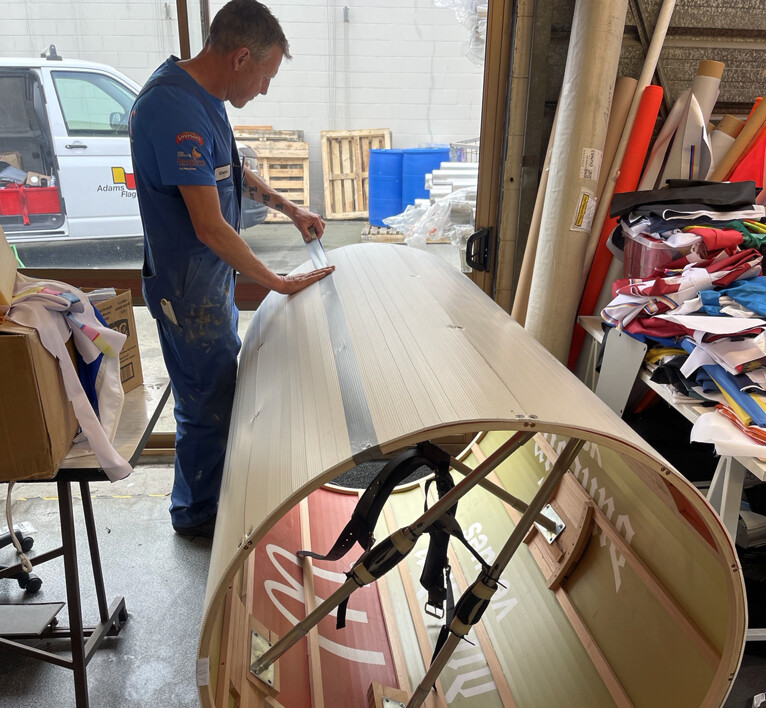
Glenn Sutton, a 48-year-old ultra runner from Dunedin, and local brewery Emerson’s, the marathon’s sponsor, came up with the idea before the COVID-19 pandemic canceled the 2020 edition of the marathon.
“I thought it would be something quirky to do. I hadn’t seen it done before,” Sutton told Runner’s World. “I’ve seen cans where people’s arms and heads poke out, but not a full-size can.”
After two long years of waiting, the Dunedin Marathon was finally scheduled for fall 2022, so Sutton got to work. A joiner by trade, he put his ornate woodworking skills into constructing a beer can costume that would cover his entire body from his head to just above his feet. His friend Bruce Adams made the signage that covered the wooden frame, which depicted Emerson’s Super Quench, a low-carb Pacific pilsner that launched earlier this year.
While in the can, Sutton couldn’t use his arms much and could only manage a shuffle rather than a full stride. It was hot, “like running in a glass house,” Sutton said. He could only see through a plastic cut-out at eye level, which blurred his already obstructed vision.
On race day, Adams ran about five meters ahead of him to make sure Sutton was on the right path. Sutton, who’s run ultra races like the days-long Badwater 135 before, wasn’t worried about taking his time to finish the race. He typically runs under three hours for marathons, but knew this particular attempt would take longer—especially if there were setbacks along the way.
Unfortunately, a major setback did occur. With 5K left, an unexpected gust caused Sutton to clip his foot on the inside of the can. He tried to catch himself, but fell on the footpath.
At that point, he was “like a turtle on its back,” rolling around while locked into harnesses around his shoulders and waist. Though the can took some damage, Sutton survived the fall unscathed. He unstrapped, got out, re-strapped in, and trudged forward for the final three miles.
As he neared the end, Sutton heard his name over the loudspeakers. A crowd clapped him through the finish line, which he crossed in a time of 6:12:37.
“It was quite cool,” said Sutton. “It drew a bit of attention, and that’s what it was all about.”
Sutton’s next challenge? Big Dog’s Backyard Ultra Satellite Team Championships, where he has to run a 4.167-mile loop at the top of the hour, every hour, for as long as possible. Nations choose their 15 best ultra runners to compete against the rest of the world, and the team that logs the most yards wins. If Sutton outlasts his 14 New Zealand teammates, he individually qualifies for the Backyard Ultra world championships in October 2023.
“I enjoy challenging myself to go these distances,” said Sutton. “I don’t mind grinding it out—and I want a bit of pain.”
by Runner’s World
Login to leave a comment
Here’s How the U.S.’s 5,000-Meter World Finalists Handle Excessive Heat on Race Day
Racing in hot weather can be daunting. Utilize these pro tips from Elise Cranny, Karissa Schweizer, and Emily Infeld to better prepare yourself for the next scorcher.
If you’ve ever raced in the summer, then you know how difficult it is to be underneath the beating sun for too long. Heat stroke, sunburn, and dehydration are legitimate dangers from overexposure. But maybe you signed up for a race that starts in the middle of a summer day. Maybe you’re running a destination marathon in a hotter climate. Perhaps you’re even attempting an ultramarathon, like Badwater 135, which takes place in Death Valley. You want to race, but you also want to be safe.
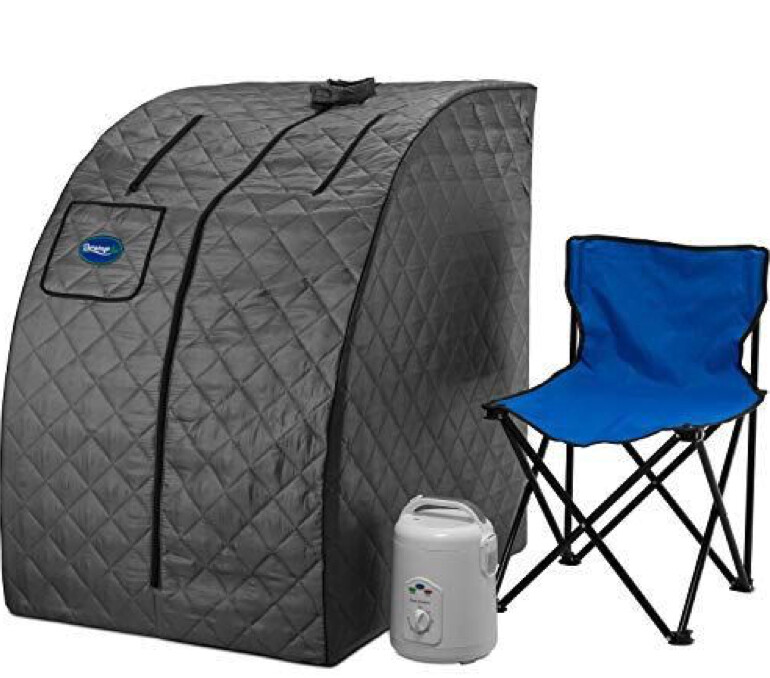
Professional runners sympathize. On July 20 at the World Athletics Championships in Eugene, Oregon, the women’s 5,000 meters took to the track for their preliminary races in searing 90-degree heat.
Yet despite the scalding temperatures, Elise Cranny, Karissa Schweizer, and Emily Infeld of the U.S. all qualified for the 5,000-meter final without any problems from the temperature. Schweizer and Infeld even ran season bests. Here are their tips for handling the heat so next time you’re faced with a race on hot day, you can be prepared.
Gradually adapt to hotter temperatures
Before the prelim, Infeld hadn’t run much in hot weather. She trains part-time in Flagstaff, Arizona, whose average summer high hover around 80 degrees, and has spent the last few months in Eugene, which hadn’t experienced 90-degree days yet.
“We were trying as best we could to go at the hottest part of the day, which is around 4 to 6, to do workouts,” said Infeld. “Some days that was 80 degrees, some days that was 60. So, I was trying to do sauna, and do things that I could to prepare in case it was hot.”
Infeld owns a portable sauna tent that goes up to 140 degrees. She would go for a run, and if it wasn’t hot enough for her body to learn to adapt, she’d hydrate well and sit in the sauna for 20 minutes to simulate heat training. A review published in Frontiers looked at numerous studies that confirmed that passive heat acclimation strategies, such as sauna, have a measurable effect on athletic performance and heat tolerance. If you don’t have access to a sauna, a study from Temperature recommends overdressing to simulate hotter temperatures, though admits this method isn’t as effective.
Infeld’s preparations paid off with a season best time of 15:00.98 and a time qualifier for the 5,000-meter final.
Stay as cool as possible before racing
Schweizer already had one race under her belt before the 5,000-meter prelims —the championship 10,000 when she placed ninth in a personal best of 30:18.05. Because the weather was temperate for the 10,000, Schweizer found the heat during the 5,000 jarring.
Not only does Schweizer train to adapt to the heat—such as working out in the Salt Lake City, Utah sun during altitude camp with the Bowerman Track Club or using a sauna like Infeld—but she also takes precautions before race to stay cool.
She spends much of her pre-race time in the shade, wears an ice vest to warm up, and even stuffs ice in her uniform on the starting line: “It was to the point where I had chills, so I was pretty cold going into the race.”
While utilizing shade and ice may sound like too simple of a solution, it’s actually very effective. The same Temperature study previously mentioned reveals that pre-cooling your body optimizes endurance performance and mitigates the effects of heat strain during extreme temperatures. Some techniques mentioned include ice baths, ice vests, cold towels, and drinking very cold drinks or frozen beverages (called “ice-slurries” in the text) before the race. The study recommends trying out a few techniques to see what works best for you on race day.
Wear sunglasses to prevent extra strain
Cranny credits her races last year at the Olympic Trials and Olympics as practice for racing in the heat, and also has similar pre-race cooling procedures as her teammate, Schweizer. But Cranny also found that wearing sunglasses during races makes a huge difference.
According to Cranny, many of the Bowerman Track Club athletes wear sunglasses in practice. But until the USATF Championships in June, she had never worn them in a race before. Shalane Flanagan, who coaches the club alongside Jerry Schumacher, highly recommended it, telling Cranny that it prevents squinting in direct sunlight, which relaxes the face. By relaxing her face, Cranny felt she prevented other parts of her body from tensing up, such as her shoulders.
Expect to see Cranny, Schweizer, and Infeld all wear sunglasses for Friday’s final like they did in the prelims, in addition to using pre-cooling techniques. They’ll fight for medals against key competitors like double Olympic champion Sifan Hassan, world 10,000-meter champions Letesenbet Gidey, and world 1500-meter silver medalist Gudaf Tsegay on Saturday, July 23.
Schweizer is ready to put herself in the race, no matter the conditions or pace: “I feel like at a U.S. level, I’m pretty good at running with that confidence. But going into a world level, there’s a lot of really big names and a lot of them have run some pretty crazy times. So I think it’s hard sometimes to really trust yourself and trust your fitness but I know I can hang with the best of them.”
Cranny will focus on staying mentally tough, as Schumacher advised her and Schweizer that a 15-minute 5,000 might feel like a 14:30 effort in the heat. “You kind of just have to prepare yourself… If you panic 6 laps in cause it feels horrible, even if you’re not running a PR pace… being prepared for that and talking yourself through it is a big part.”
Infeld caught COVID-19 at the USATF Championships but isn’t letting that or the temperatures hold her back: “I always want to compete against the best and see where that lands me,” she said immediately post-race, before knowing she qualified on time. “Today it was sixth in that heat, but I hope that’s enough to get in the final and mix it up with the women out there.”
by Runner’s World
Login to leave a comment
Yoshihiko Ishikawa wins Badwater 135 for the 2nd time
The male course record holder celebrated his second victory, while American Ashley Paulson's new female course record raised a few eyebrows
The 45th anniversary of the Badwater 135 race wrapped up Wednesday, with no shortage of both heat and excitement. Yoshihiko Ishikawa of Japan took his second victory at the race, running negative splits to finish in 23:08:20. Ishikawa previously set the course record at Badwater 135 in 2019, in 21:33:01. He famously followed his win by proposing to his then-girlfriend, and the couple has since married.
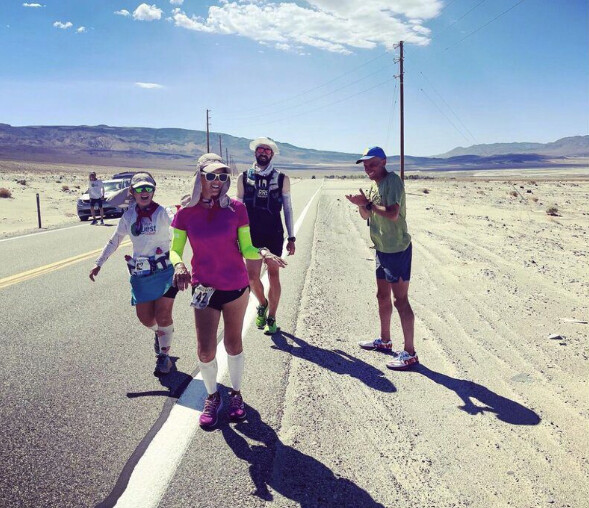
The famously gruelling Badwater 135 starts at Badwater in California’s Death Valley at 85 metres below sea level (the lowest elevation in North America), taking runners 135 miles (216 km) through Death Valley and up Mount Whitney, reaching 2,548m of altitude at its highest point. Temperatures have been known to soar well above 100 F (37 C). The cutoff time is 48 hours, and the average finishing time is 40 hours. As at the Western States Endurance Run, finishers receive a much-coveted belt buckle. There is no prize money for winners. The race is invitational, and 94 athletes started the event this year, with 77 finishing.
Fan favourite and last year’s winner Harvey Lewis, of Cincinnati, finished his 11th Badwater in fourth place with 27:16:05, while his partner, Kelly O’Dell, completed her first Badwater with just over an hour to spare, in 46:57:33.Ultrarunner and race director Bob Becker, 77, of Fort Lauderdale, attempted to become the race’s oldest finisher. In a heroic effort, Becker made it across the line just over the 48-hour cutoff. The athlete made an attempt at the same title last year, but had to drop at mile 50. His dedication won the hearts of fellow athletes and supporters as he struggled to complete the last few steps of the race.
Two Canadians competed in Badwater 135 this year. Norma Roberts, 63, of Calgary, finished in 37:00:13 and was the 11th female, while Rich Peers, 51, of Kitchener, Ont. finished in 44:13:01.
Login to leave a comment
Badwater 135
Recognized globally as "the world’s toughest foot race," this legendary event pits up to 90 of the world’s toughest athletes runners, triathletes, adventure racers, and mountaineers against one another and the elements. Badwater 135 is the most demanding and extreme running race offered anywhere on the planet. Covering 135 miles (217km) non-stop from Death Valley to Mt. Whitney, CA, the...
more...Stay cool on your next run with these three tricks, use these tips to keep your core temperature down
If you’re training for a summer race this year, you’ll want to prepare for that event by exercising in the heat, as unpleasant as it sometimes may be. Heat training will pay off, especially if race day is warmer than expected. There are ways to keep the heat from getting to you, especially during longer runs. Your goal is to keep your core body temperature down while staying aware of the signs of heat-related illnesses. Use these three tips to keep your body temperature down on your next hot-weather training session.
Choose your clothing wisely

Make sure you’re wearing light-colored clothing, in a sweat-wicking material, polyester, or polypropylene. Cotton attire may feel cool at first, but will get heavy and uncomfortable once you add sweat. Wearing a hat you can dip in water will keep your head (and core, as a result!) cool, and feels nice as well. Chris Kostman, race director of the Badwater 135 ultramarathon in Death Valley, Cali., has more than a little experience with hot-weather events. In an interview with GearHub Kostman suggested spritzing your clothes with water before setting out: you’ll cool as the water evaporates.
Have a cold drink before you start, and keep drinking
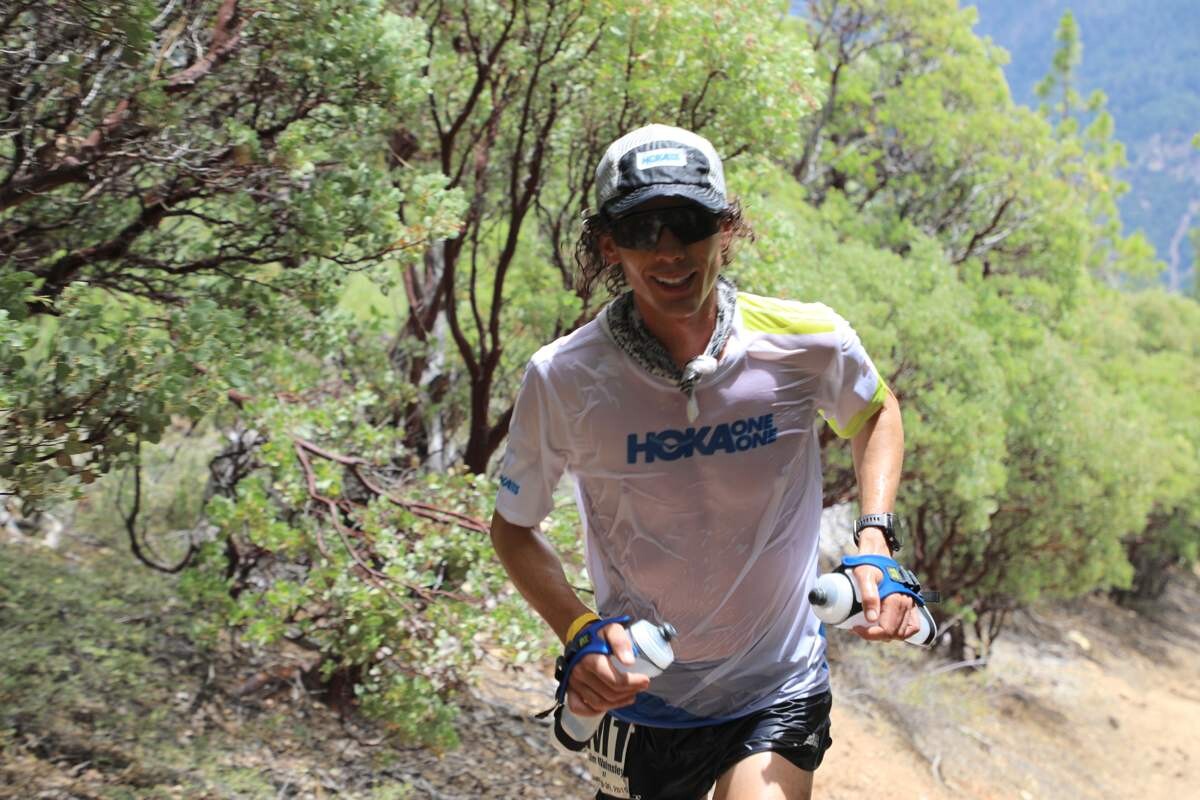
Staying hydrated is essential during the hot months. Not only will it help prevent potentially life-threatening ailments like heat exhaustion and heat stroke, but it will also keep you feeling better and running faster. When we get dehydrated, our blood thickens, increasing our heart rate through a process called cardiac drift. Being mindful of how much you are drinking before, during, and after your outdoor workout is important. Studies show that drinking something partially frozen before exercising can keep your body temperature down for even longer than simply imbibing a cold drink, so stick that sports drink in the freezer before your run so that it’s icy. If you find you’re taking in a lot of water, or you’re participating in a long, hot endurance event, make sure that you’re also taking in electrolytes and sodium so that you replenish what you’re sweating out and avoid conditions like hyponatrema.
Learn from the pros: ice, ice, everywhere
The recent Western States 100-mile race reportedly had 5 pounds of ice, per athlete, per aid station. Ultrarunners at these warm races have devised techniques to wear the ice all over their bodies, and no matter the distance of your next hot training run or race, you may want to try some of their efficient ways to beat the heat. Fill a bandanna or tube sock with ice and tie it around your neck. The icy water it releases as you continue will keep you cool as you move. Sticking a baggie of ice into your hat can work as well, or wearing sleeves that you stuff with ice cubes and allow to melt.
The most important thing during hot-weather runs: take the signs of heat exhaustion seriously. If you’re very hot but aren’t sweating, you have a throbbing headache that doesn’t abate or you start to feel unwell, get inside, cool your body down, and monitor your symptoms.
by Keeley Milne
Login to leave a comment
Western States 100
The Western States ® 100-Mile Endurance Run is the world’s oldest and most prestigious 100-mile trail race. Starting in Squaw Valley, California near the site of the 1960 Winter Olympics and ending 100.2 miles later in Auburn, California, Western States, in the decades since its inception in 1974, has come to represent one of the ultimate endurance tests in the...
more...Jocelyn Rivas Just Ran Her 100th Marathon—All Before She Turned 25
Now the youngest person to run 100 marathons, Dreamer Jocelyn Rivas recently finished her hundredth at the Los Angeles Marathon.
Jocelyn Rivas has been running marathons since she was 17. On Sunday, the 24-year-old ran her 100th at the Los Angeles Marathon. This makes her the youngest runner to complete 100 marathons, pending verification by Guinness World Records. It also makes her the youngest Latina to accomplish this feat—something she’s proud of, as a Dreamer who came to the U.S. from El Salvador when she was six.
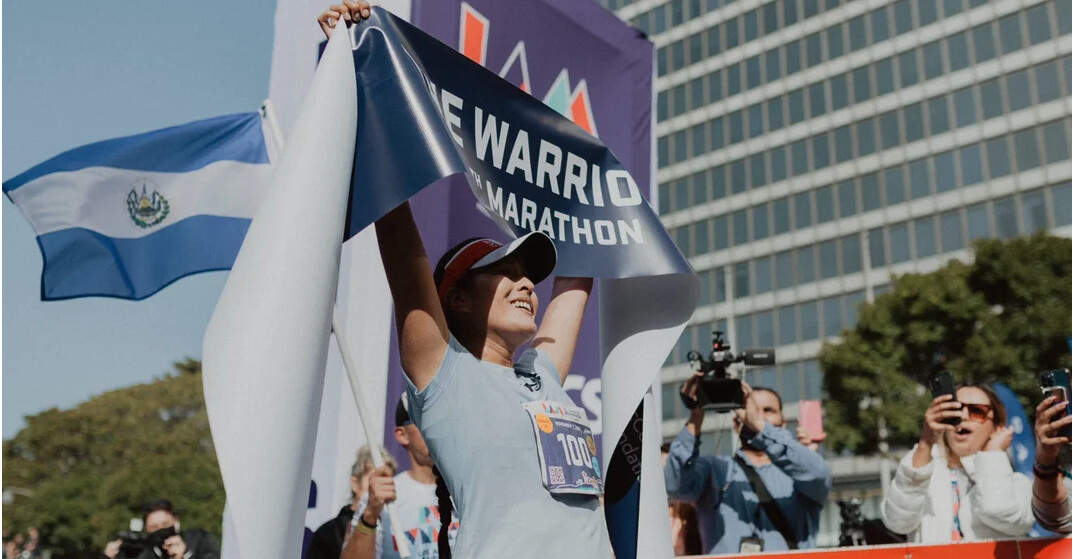
Rivas was born in El Salvador with health problems so severe her mother was told she would never walk normally. She never found out what exactly the cause was, but she did start walking normally when she was a kid, and then she took up marathon running when she was in high school, as part of the Students Run LA program.
Since then, she has run marathons in 19 states, and she once ran six marathons in nine days. Her first marathon was the Los Angeles Marathon, so running it again as her 100th marathon has been coming full circle.
Rivas spoke with Women’s Running about how she got into running, why she decided to take on 100 marathons, and what it was like to cross the finish line in Los Angeles.
Women’s Running: You ran your first marathon with Students Run LA when you were in high school, but were you a runner before that?
Jocelyn Rivas: When I started with Students Run LA, it was the first time I had run. You could say I had done the one mile because that’s required for [Los Angeles Unified School District] high school kids. That was the only thing I had done.
The reason I started running was I came out to the 2013 L.A. Marathon to support my friends who were running. I saw everyone running, from kids to adults who are in their 70s, and I was like, why am I not out there? What’s preventing me from being out there? I got inspired by those people, complete strangers, and then I was like, I want to run a marathon.
WR: What was it like to go from no running to training for such a long distance?
JR: Students Run LA helps high school students train for a marathon in six months. In the beginning, it was a bit difficult because my mom didn’t want me to run a marathon. The reason was because I was born with a broken back, neck, and feet. So I have always had a lot of back pain and neck pain, and she just didn’t want those things to become worse. But I wanted to run a marathon. I knew I could do it.
Essentially, I was like: You know what, I’m gonna do this, just to prove her wrong, just to prove I could run a marathon. But when I crossed that finish line, I realized I love running. My mom was the motivation, but I ended up falling in love with running.
WR: How did you recover from those injuries as a young child?
JR: The resources in El Salvador were kind of limited. My mom was also very poor—she barely even had money to feed me, so she wasn’t able to take me to a specialist. But she took me to physical therapy that was free. My feet were completely turned around to the outside, instead of straight, and then my back, my spinal cord, was not straight at all. I was like that for several months until, I guess with therapy and everything, my body started to get back together little by little. My mom says it was a miracle, because they told her I most likely wouldn’t be able to walk normally. My sister says it took me a while to start walking. I was slower than most kids. And she says after three or four years, I was fine.
WR: Have you had to deal with that back and neck pain in your running?
JR: Yes. I actually asked my teammates: Are you feeling back pain? They said no, we’re not feeling anything at all. That’s how I realized, with my back pain and my neck pain, I was going to have to dedicate a lot of myself to running. I do a lot of recovery. After every single run, I do scraping, I do tape, I massage myself. Sometimes I do cryotherapy.
WR: What inspired you to run 100 marathons?
JR: In 2017, I was in a very bad place. I’m a Dreamer—I’m a DACA [Deferred Action for Childhood Arrivals] recipient. The Trump administration had just announced that they were going to take it off, meaning that I’d lose the potential of renewing, I would be undocumented again, and I would definitely lose my job and not be able to continue going to college. I was going to lose everything I had worked so hard for, and I really wanted to do it to showcase that Dreamers are here to do something good. We love this country as much as every American—we just don’t have the papers. We came here as young kids, and we grew up in American culture. My biggest thing was, I don’t think many people could put a face to Dreamers. They think negative things about us. I wanted them to see the face of a Dreamer and be like, this is just one Dreamer, and there’s thousands of Dreamers just like her, just wanting to follow their dreams. So it started with that.
But in 2019, at marathon 25 [after the Trump administration’s efforts were blocked], I needed a new “why”—something that would carry me through when I’m in my darkest places, when I’m running those marathons and I just feel like I can’t keep going anymore. And that’s when it came to me: I want to do this to inspire my community, to inspire women. Growing up, I never had anyone to look up to, athletic-wise, who I could identify as a Latina who could do this. I was just like: I want to be that person, or at least inspire my community to get out there to chase their dreams, or start the journey, whatever that is. Running all these marathons has made me realize that nothing is impossible in this world. If you want something in life, go chase it, go get it.
WR: What challenges have you faced along the way?
JR: When I was running these marathons, I was trying to get a PR, I was trying to run faster every single time. And I was getting injured. I had a lot of shin splints on both legs, and then here and there, I sometimes deal with IT band injuries. How am I going to make it if I’m so injured and I’m barely in my early 20s? That’s when I reached out to Julie Weiss, who had done 52 marathons in 52 weeks, so she had a lot of knowledge. She said, you’ve gotta go slower. I told her the times I was finishing, and she’s like, no, you’ve gotta run an hour slower than what you typically run. Just take it easier. Enjoy the
journey. Take photos. Forget about PRs right now—you can do PRs after.
That took me to 100. If I would have kept running fast, fast, fast, trying my best to PR, there’s no way I would have made it to 100. I took her advice to take it slow and enjoy the races more and not to be so hard on myself.
WR: You’re running marathons so frequently, what is your training like?
JR: I really do not train like a normal person who’s training for a marathon. Since I’m running a marathon every weekend, I consider it my long run on Sundays. Monday and Tuesday, I take off completely, I just stretch and rest, and I do my usual thing—I work. Wednesdays after work, that’s when I go for my first run, like a 5k. Thursdays, I do maybe a 5k to 6 miles, depending on how my body’s feeling. On Fridays, I do another maybe four miles, and then Saturday, I do a 5k or don’t run at all. It’s very low mileage, roughly in the 40s with the marathon included.
WR: Do you have any advice for other young women who want to go after big running goals?
JR: All it takes is for you to believe in yourself. I always say, the only person that could stop you is you. I truly got inspired by my community, so this didn’t happen by itself. But if you believe in yourself, you know what you can do, and you know how far you can go in life.
WR: What kind of reaction have you gotten from people in your community?
JR: It’s been amazing, they’re all super supportive—I’m representing South Central L.A. I grew up very poor, with very limited resources. But I got lucky with Students Run LA. And I think they saw me as a 17-year-old, and then they just kept seeing me going and going, and now I’m at 100. There’s so many Students Run LA kids here, and I think they’re also getting inspired, with all the girls who have reached out to me. I honestly can’t even believe it. I’m still trying to process it.
WR: Overall, what would you say you get out of running?
JR: I found my passion. Whenever I’m having a stressful day, I just know if I go for a run, I come back and I am the happiest person ever—it releases all my stress. It makes me feel so confident, so empowered, so strong, and makes me feel beautiful and alive. It is like nothing else. I’m still someone who’s very young, still learning about the world, and still trying to grow in every aspect of life. And having that sense that I could be 100% myself and love myself when I’m running, it definitely has helped me so much in my personal life and in my career.
WR: The Los Angeles Marathon was your first marathon as well as your hundredth. How do you feel about that?
JR: I love the L.A. marathon. This whole time, I’ve been doing back-to-back marathons so I could get L.A. to be my hundredth marathon. And so having accomplished this, after how many flights got canceled, how many marathons, how much I cried and stressed, knowing that I was able to get to 100 at L.A. is literally a dream come true. I wanted to finish here, in the community that molded me to who I am today.
WR: How did the L.A. Marathon go?
JR: I felt like it’s just another marathon until I got to the starting line and thought, oh my god, this is my hundredth. I teared up a bit. Throughout the race, again, I thought, oh, it’s just another marathon. And once I hit mile 23, that’s when I started feeling it. So many people were out there cheering me. It was amazing. At the finish line, they had a ribbon that said “The Warrior—100th Marathon” for me.
WR: What’s next? Are you going to take a break from marathon running?
JR: I want to, but I am doing a marathon the following weekend. I will try to PR, and we’ll see if it happens. I’m gonna try to do a few more marathons just to make sure that the record stays with me, because I’m still getting certified. All the races I did were USATF certified—that was one of the requirements from Guinness World Records. I have everything documented, but I’m just going to do maybe five or eight more marathons to make sure the title stays with me.
After that, I am going to take a break. Probably five or six months into physical therapy, I’ll try to get my body to come back stronger. Because the end goal is I want to run a 100 miler—I do want to become an ultramarathoner. And if I do that 100 miler and I crush it, or at least I survive, I want to try to go for maybe Badwater.
by Women’s Running
Login to leave a comment
Harvey Lewis Breaks the Big’s Backyard Ultra Record By Running More Than 350 Miles in 85 Hours
He ran a 4.1667-mile loop every hour for 85 hours.
The third time was the charm for Ohio’s Harvey Lewis at the 2021 Big’s Backyard Ultra. After finishing as the assist in 2017 and 2020 (meaning, he is the second-to-last runner left in the race), the 45-year-old was finally the last runner standing in Bell Buckle, Tennessee. In total, Lewis ran 350.0028 miles in 85 hours/laps, making him the undisputed backyard ultra world-record holder.
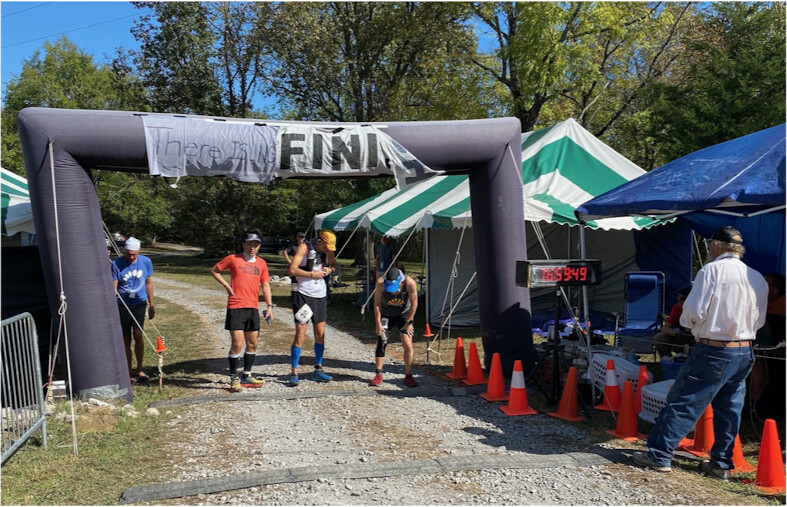
The backyard racing format has grown in popularity recently, with pop-up races happening all over the world. The rules, put simply, are: run a 4.167-mile loop at the top of every hour until one runner has done at least one more lap than the second-to-last runner. If both runners stop at the same time, then no winner is declared. At Big’s, runners complete a trail loop during the day, and a road loop at night.
The 2020 race was a virtual event, with runners in more than 20 countries competing simultaneously in standalone races. As a result, the 2021 race was anticipated to be one of the most stacked fields in race history. While some international runners were still unable to make the trip due to pandemic-related travel restrictions and concerns, several top runners made it to the start line. This included 2019 champion Maggie Guterl, 2020 champion Courtney Dauwalter, Big’s regular Dave Proctor, Michael Wardian, and Steve Slaby.
The race started at 6 a.m. ET on Saturday, October 16, and only three runners of 35 starters total dropped out within the first 24 hours (100 miles). But after that, runners seemed to drop almost every hour. Nine completed 48 hours, a large pack for reaching the third day of the race.
Lewis’s Big’s experience paid off as he and his crew chief Judd Poindexter troubleshooted any issues that arose. He fueled well and got five- to 10-minute naps when he could during the night, a big change from not sleeping at all in 2017.
One the race hit the 72-hour mark, it headed into uncharted territory with just three runners still standing: Lewis, Missouri’s Chris Roberts, and Japan’s Treumuchi “Mori” Morishita. Only two known backyard races in the world have hit the fabled fourth day before. This was the first time it had ever happened at Big’s.
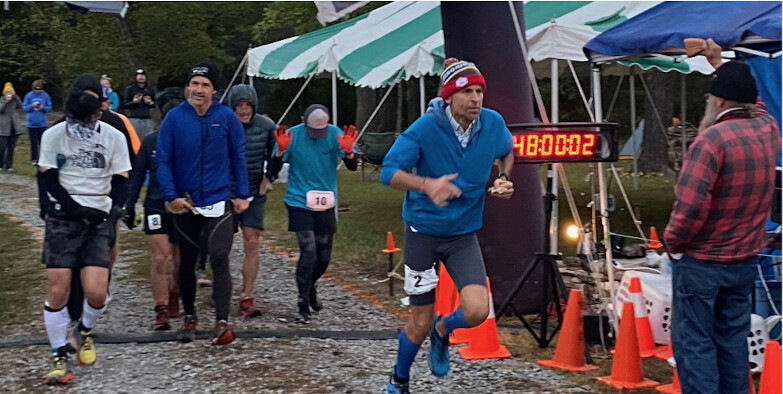
“We all wanted it so bad,” Lewis told Runner’s World. “We had lasted so long out there, which takes incredible willpower. It definitely helped. I wouldn’t have been out there without a reason to keep going, so I really enjoyed the challenge of running with them for so long together.”
The trio battled from lap 63 on, all quietly competing against one another. Each runner had their own style; Lewis and Morishita would sprint out of the corral at the start of some laps, which was a fan favorite.
“At the start and in certain areas, we just started sprinting,” Lewis said. “Morishita would sprint through the woods and yell, and then I would sprint through the woods and yell. It was a good move, so I hope Morishita didn’t mind I was doing it as well.”
Roberts struggled a lot before dawn, fighting off an injury that had him leaning sideways and coming in with few minutes to spare on laps. But as the sun rose, he recovered for a strong day.
Issues arose late in the game for Lewis and Morishita. Both runners fell on lap 81, which caused Morishita to miss the cutoff by 30 seconds, ending his day and leaving just Lewis and Roberts in the race. Lewis fell on the final hill and left him with an unknown (at the time) hand injury. Because his legs were okay, he ignored it and kept moving.
“As we got to the night, I thought for sure we’d be going to 400 [miles], so I mentally prepared myself for that,” Lewis said.
Many anticipated another complete night—that is, until lap 85, when Roberts surprisingly returned to camp soon after starting. Lewis, still on his loop, didn’t know this. Even though he didn’t see Roberts on the way back, he still wasn’t convinced he won until he got back to camp.
There, Lewis was greeted to roaring applause from the crowd that was still there. Lewis was finally a Big’s champion, capping off an incredible year of winning three major races: Badwater 135, Ohio’s Backyard Ultra, and now Big’s. He also earned the undisputed world record for most yards ever completed in a backyard race, taking the title from John Stocker who ran 81 yards with his assist, Matt Blackburn at the Suffolk Backyard Ultra in June 2021.
“It was an incredible experience,” Lewis said. “It has been one of my dreams to win this race, and to have it come to fruition was pretty mind-blowing for sure. I was super psyched.”
Lewis was so overcome with joy and exhaustion that he spent little time enjoying his win, opting to head to his tent shortly after finishing.
“When I finished, whatever armor I developed in my mind that told me I wasn’t going to submit went away,” he said. “I was really tired. I didn’t care where I slept. There was a cot in my tent 40 meters away, and it felt like the Taj Mahal. I fell asleep with half a plate of rice and beans on me.”
The next day, Lewis got a ride back to Cincinnati. When he arrived around 11 p.m., he kept his run streak alive by getting a mile in with minutes to spare. Then, a friend instructed him to go get his hand checked out in the emergency room after midnight. Harvey was diagnosed with a clean break in the fourth metacarpal of his right hand, and he was told should heal in a few weeks with just a splint.
Lewis told Runner’s World that he got a few hours of sleep in the ER before going home briefly and run commuting to work—he’s a social studies teacher at School for Creative and Performing Arts. Lewis wasn’t supposed to work because he had taken the day off. However, because of a shortage of substitute teachers at the moment, he literally ran in teach anyways.
“A couple times a year, I’ll take off to recuperate,” he said. “As long as I’m not hurting myself, I do the commute with human power.”
Big’s is likely the last race of the year for Lewis, though he plans to run the Flying Pig Marathon easy on October 30. His next big adventure will be the Barkley Marathons in 2022, which he now has entry to because of his Big’s win. Cantrell let Lewis know his thoughts on that.
“My biggest memory was turning to [Big’s and Barkley Marathons creator Gary ‘Lazarus Lake’ Cantrell] at the end and saying, ‘The winner gets an entry to Barkleys,’” Lewis said. “He couldn’t say no, so he went along with it. The next day, he told me that I’d be the sacrificial lamb.”
by Runner’s World
Login to leave a comment
The “Two-Hundred 100 Milers Club:†Sandra Brown and Ed Ettinghausen Rack Up Impressive Number of 100-Mile Finishes
In terms of ultrarunning milestones, Sandra Brown and Ed Ettinghausen are a few 100 milers ahead of the pack.
Brown, a 72-year-old woman from England, said she knew long-distance events were for her as soon as she completed her first 100-mile event, a linear cross-country course on an old pilgrimage route in Southern England finishing in Canterbury.
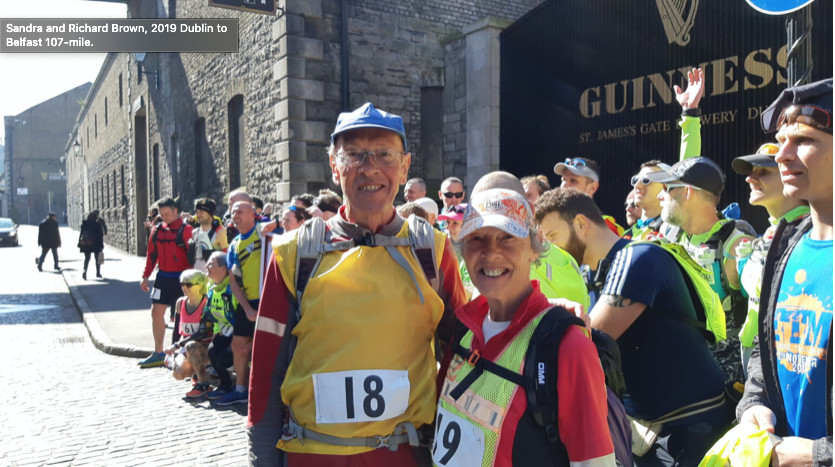
“I heard about the Centurions — those who have race walked 100 miles in under 24 hours — and I wanted to be a Centurion, perhaps all the more as these events had only recently been opened to women. So I entered and successfully completed that year’s UK 100 Miles Race Walking Championship, a Centurion qualifying event. I was on the slippery slope familiar to all ultra-distance athletes,” said Brown.
Not only did she join the Centurions, but she later went on to complete her own record-setting accomplishment. On March 30, 2019, Brown became the first person to join the “Two Hundred 100 Milers Club,” tallying her 200th 100-mile finish at the Dublin 2 Belfast 107-mile race.
“My 200th 100-mile plus event was a friendly event that [my husband] Richard [Brown] and I did together, and that felt very special. It was a milestone. But at the same time, when I finish every event, I’m also looking forward to future events,” said Brown.
She didn’t stop there. Brown most recently completed her 208th 100 miler on July 23, finishing the Kennet & Avon Canal 145-Mile Race which ran from London to Bristol. Brown, who does a mix of race walking and running, finished the event in a time of 43 hours and 55 minutes, which averages out to an 18:10-minutes-per-mile pace.
Not to be left behind, 59-year-old Ed Ettinghausen, who lives in Murietta, California and is known as the Jester for his colorful race-day attire, completed his 209th 100 miler on August 1 at the Southern Discomfort 30-hour race, edging into the lead over Brown for the time being. Ettinghausen was not far behind Brown in breaking the 200-mark, with his 200th 100-mile finish coming at the Jackpot Ultra Running Festival on April 23, 2021.

Ettinghausen, who said he got bit by the ultrarunning bug when he crewed for a friend at the Badwater 135 in 2010, has been chasing records since finishing his first Badwater in 2011. As he looked into the records, Ettinghausen set his sights on racking up one hundred and forty-five 100-mile finishes to beat the record which, at the time, he thought was held by German doctor Hans-Dieter Weisshaar.
“I reached that and thought I’d broken some record till someone said, ‘Wait, no, have you heard of Sandra Brown? She’s done so many more!’ I found out through [ultrarunning historian] Davy [Crockett] she’d done 180 or so at that point, so I had my sights set on catching her,” said Ettinghausen. “When I found out she had done 205 in 2019, that became my goal.”
As to who is keeping track and how all these 100 milers are tallied, Brown and Ettinghausen are in a league all their own where the numbers are so astronomical that keeping tabs falls largely to them and their fan base in the ultrarunning community. However, one major resource that tracks these endurance legends is the Ultrarunning History website, run by Davy Crockett.
Brown said that for her, keeping tally is more about personal achievement than holding the top place.
“I wish Ed, and all ultra athletes, all the very best in their personal quests and goals. I don’t feel and have never felt that this is rivalry or competition. For me, it’s a personal interest, and I do events for fun and the great satisfaction they give.” said Brown. “The challenge is a personal one – seeing what you can do. I was well over 100 completions of 100 miles or more, and so was Richard, before we even knew that Davy Crockett was keeping records of such completions. Davy does a fantastic job with his ultra-distance history website, which I love reading.”
Only 19 ultrarunners including Brown and Ettinghausen have joined the “100×100 club” with the achievement of running 100 or more 100 milers. Brown’s husband, Richard, is also part of this elite group.
And don’t think that the total mileage Brown and Ettinghausen have accrued is “only” 20,800 and 20,900 miles, respectively. Many of the events they are completing are over 100 miles, as evidenced by Brown’s 145 miler in July and Ettinghausen’s 105 miles at the Southern Discomfort.
When asked how their spirits (and knees) are holding up to the mileage, they had this to share:
“My knees are perfect, in better shape than ever, I did the right training and took care of myself,” said Ettinghausen. “I have a whole bunch of goals. To have 70 wins before I hit 60 years old. Then I have a whole ‘nother goal list.”
“I love every event and confess to complete addiction. I have been very lucky in avoiding significant injuries. I think that mixing race walking and running helps,” said Brown.
At present, both ultrarunners are the only two to break into the “Two Hundred 100 Milers Club,” though up-and-coming ultrarunners are sure to be inspired to chase after their achievement. Apparently, neither one is eyeing retirement after this milestone either, with Ettinghausen aiming at the Angry Owl Ultramarathons 24-hour race next.
“I have the Angry Owl 24-hour race coming up. Last year I took second at the race and hoping to take the win. It will be my 61st 100-mile win,” said Ettinghausen.
Brown, who noted her local events calendars is still recovering from COVID-19 cancelations, hopes to find one or two more events in the fall. “[I] look forward to what 2022 will bring,” said Brown.
Undoubtedly, 2022 will see both Brown and Ettinghausen adding a few more 100-mile finishes to their collection.
Login to leave a comment
5 Things To Know About This Year's Leadville 100 Run
After being canceled in 2020 for the first time in its 39-year history, the Leadville Trail 100, a,.k.a., "The Race Across the Sky," returns Aug. 21-22 with the same rugged, mountainous spirit it has had since inception.
An eager field of 687 runners will toe the starting line in Leadville, Colorado, trying to survive the high-altitude, out-and-back course over 12,532-foot Hope Pass and back. There are a few minor changes this year - most notably the pre-race athlete meeting and the post-race awards ceremony will be held outside on the Lake County High School football field and no pacers or crew will be permitted at the 50-mile turnaround point at Winfield - but otherwise this fabled race born out of the hardrock miner vibe of the resilient 1880s mining town remains the same as it ever was.
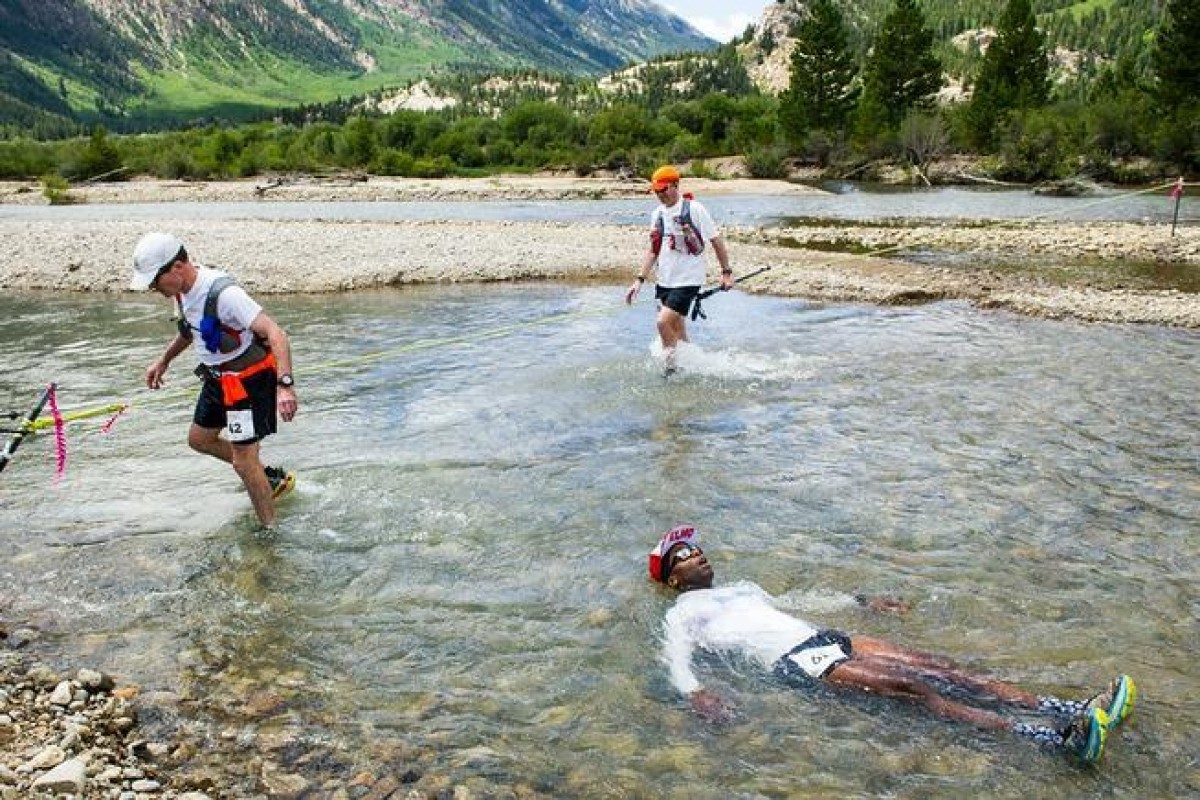
"It's Leadville, so it's all about getting to Winfield in good shape and then it's all about guts and strength and toughness on the way back," says Don Reichelt, one of the top contenders in the men's race this year. "If you've blown your quads coming down the back side of Hope Pass and then have to deal with the mental aspect knowing you have to go back up and over it, it can be a make-or-break moment of the race. It will be fun to see how it all plays out."
Here are a few things you should know about this year's Leadville 100.
The Course
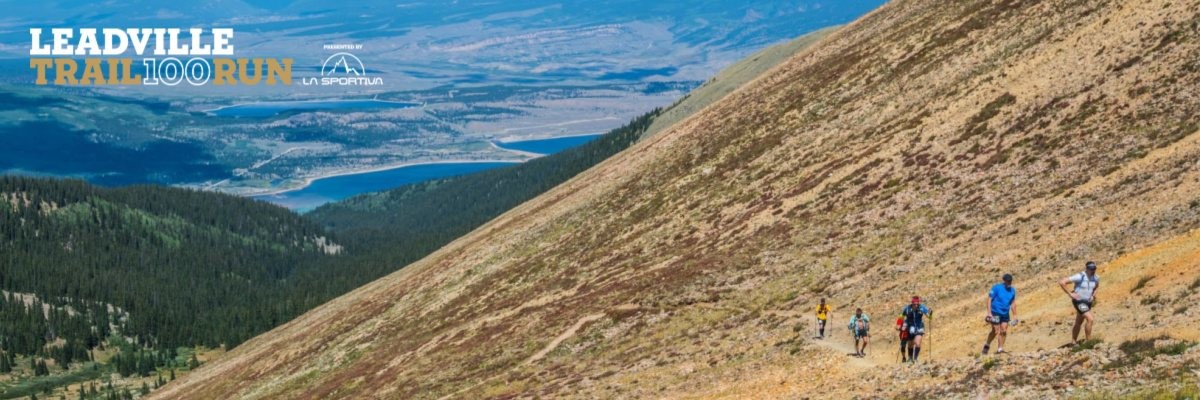
First things first, the race is officially 99 miles in length with 15,734 miles in elevation gain. The out-and-back course starts and finishes at an elevation of 10,160 feet in Leadville, dips down to a low point of 9,219 feet near Turquoise Lake and tops out at 12,532 feet on Hope Pass at the 45- and 55-mile points. It's a unique course with two rugged climbs in each direction (Hope Pass and Sugarloaf Mountain/Powerline) and a lot of flat, fast entirely runnable sections on dirt roads and paved roads, as well as epic singletrack sections on the Colorado Trail. The men's course record of 15:42:59 was set by Pikes Peak Marathon legend Matt Carpenter in 2005, while the women's course record of 18:06:24 dates back to Ann Trason's astonishing 1994 effort.
Women's Race Contenders
Among the top women in this year's race is North Carolina's Ashley Arnold, 34, who was the women's champion in 2013 and third-place finisher in 2010. Although she has raced sparingly since 2019, she's been staying in Leadville and Buena Vista for a few weeks and training on the course and should be a contender based on her experience and track record. Although she won three 50K races in 2019-2020, her strong third-place effort at the Power of Four 50K in Aspen on July 31 is a good testament of her fitness.
Vermont's Aliza Lapierre is coming off a fourth-place effort at the Catamount 50K (4:59:19) in June and a win at the Infinitus 88K race in May (9:33:16) in her home state, as well as a victory at April's Ultra Race of Champions 100K (10:18:57) in Virginia. Leadville local Annie Hughes, 23, has only been trail running since 2019, but she's won a 50-miler each of the past three years (Jemez Mountain, Indian Creek, Collegiate Peaks) and has a third (Bryce Canyon, 2020) and a first (Mace's Hideout) in her two 100-milers. She also has a few high-mountain FKTs to her credit, including her 61-hour, 19-minute effort on the 167-mile Collegiate Loop in 2020.
There are several other top women from Colorado, starting with Maddie Hart, 24, of Boulder, who won the 2019 Tahoe Rim Trail 100-miler, and Kim Dobson, 37, of Eagle, a six-time Pikes Peak Ascent winner who has won all three of the 50K/50-mile races she has entered since 2018, including the Crown King Scramble 50K (4:31:44) in Phoenix in March.
Blake Wageman, 36, who has raced consistently at 50K and 50-mile race for the past several years (including a runner-up showing at the Silver Rush 50 on July 10 in Leadville); Carrie Stafford, who was fourth in the Leadville 100 in 2019; Becky Kirschermann, 48, a three-time top-five finisher at the Run Rabbit Run 100; Tara Richardson, 30, who is making her debut at 100 miles after running strong at Aspen's Power of Four 50K race in late July; and Becky Lynn, 28, who has been a strong runner at 50K and 50 miles.
On August 20 at 1 p.m. MT, Trail Sister's founder Gina Lucrezi will be emceeing a "Ladies of Leadville" roundtable discussion at the race expo with a diverse group of seven of this year's Leadville 100 participants - Arnold, Dobson, Lapierre, Grace Sims, Kate Tsai, Jolene Sandoval and Sawna Guadarrama. The goal of the event, which will be broadcast via Instagram Live, is to provide insight and inspiration from their unique perspectives and various backgrounds, to celebrate and empower women trail runners of all abilities and to promote diversity within the sport and longer ultra-distance races.
Men's Race Contenders
Among the favorites in the men's race is Ian Sharman, 40, of Bend, Oregon, who is a four-time Leadville winner (2013, 2016, 2017), and the fastest finisher of the Grand Slam of Ultraunning (69:49:38 combined time for finishing Leadville, Wasatch, Western States and Vermont 100-milers in 2013). Sharman, who placed second in the McDonald Forest 50K on May 8 in Corvallis, Oregon, has numerous ultrarunning wins and podium finishes under his belt and a 16:22 personal best on the Leadville course.
Another top contender is Tyler Andrews, even though he hasn't raced this year and doesn't have a lot of ultra-distance race experience. However, the 31-year-old runner from Massachusetts has set some pretty serious FKTs on high-altitude trails in Chile, Ecuador and Peru as part of a journey he dubbed the Los 10 FKT Project. He's also a two-time U.S. Olympic Trials Marathon qualifier who owns a 2:15:52 personal best for 26.2 miles on the roads.
Colorado's Don Reichelt, 35 brings a lot of very good ultrarunning race experience with him, especially from the past couple of years. Most notable are a third-place finish at the Badwater 135 in 2018, a win at the Lean Horse 100-miler in South Dakota in 2019 and a blazing 13:16 third-place effort at the Tunnel Hill 100-miler in Illinois last November. Reichelt has continued to improve into his mid-30s and lives in Fairplay, Colorado, and regular trains in the mountains around Leadville.
Cody Reed, 30, of Mammoth Lakes, California, has said on Instagram he'll be gunning for the win in a course-record time. This is the third year in a row Reed has been registered for the Leadville 100 but he got hurt in 2019 and the race was canceled last year. After recovering from a knee injury in 2019, he went on to win the Ultra Trail Cape Town 100K in South Africa. He has a lot of good to very good results since 2016 and certainly should be a runner to watch. He tuned up for the race by winning the six-day TransRockies Run.
Although he has vowed to run more conservatively than in his previous five starts, Anton Krupicka is not only a Leadville 100 legend but also an icon in the sport of ultrarunning. The two-time Leadville winner (2006, 2007) was trail runner's first social media star, and, although he admits he doesn't love the gratuitous attention he can attract, he's still a legit athlete and should be among the top five in the men's race based on his stout summer of training on his feet and on his bike.
Other runners to watch include David Kilgore, 29, New York City, a former University of Colorado runner and 2:27 marathoner who won the 340-mile The Speed Project multi-day race from Los Angeles to Las Vegas in May; Hannes Gehring, 34, of Denver, who set the Never Summer 100K course record (11:47:06) and placed sixth at the Run Rabbit Run 100-miler in 2019; Jackson Cole, 25, of Alamosa, Colorado, who has run several fast 50K races but hasn't raced anything longer than 38 miles; and Adrian Macdonald, 32, from Fort Collins, Colorado, who won the Antelope Island 50-miler in Utah this spring.
Leadman/Leadwoman runners and savvy veteran racers
There are 67 athletes remaining in the Leadman/Leadwoman challenge (of the original 109 starters back in June), but each one has to complete the Leadville 100 under 30 hours to become an official finisher. The Leadman/Leadwoman competitors have already completed at least four of the five Leadville Race Series events: the Leadville Trail Marathon, Silver Rush 50 Silver Rush run and/or mountain bike (competitors can chose one or both events), Leadville Trail 100 Mountain Bike Race and the Leadville 10K. Rodrigo Jimenez is currently in 8th in the standing and will start in dead last on Saturday, competing in the Back of the Pack challenge to raise money for the Leadville Trail 100 Legacy Foundation.
There are four runners over the age of 70 entered in the Leadville 100: Gordon Hardman, 70, Chuck Cofer, 70, and Marlin Weekley, 70, and Marge Hickman 71. Hardman has been running ultras since the late 1980s, has three previous Leadville finishes to his credit (1989, 1998, 2010) and is one of only 23 runners two have completed the Grand Slam of Ultrarunning twice (1989, 1998). Weekley has apparently only been running ultras in his 60s, but has more than two dozen race finishes over the past seven years. Cofer has 12 previous Leadville 100 finishes dating back to 1996, but is back for the first time since 2015. Hickman, a longtime Leadville resident, is one of the most accomplished women runners in the race's history. She's a 15-time Leadville 100 finisher who won the women's race in 1985 (26:57:50) and finished as the runner-up four times (1984, 1986, 1991, 1995). She also wrote an authoritative book on about the race.
Robbie Belanger's Endurance Feats
Robbie Belanger is a plant-based endurance athlete known for running across the U.S. in 75 days in 2019 and setting a world record for the Central Park Loop Challenge (16 laps, just under 100 miles) during the park's official opening hours. Most recently, he created a new challenge for himself focused on exploring Colorado and his affinity for the Leadville Race Series. In 2019 he moved to Denver and did the Silver Rush 50. In light of COVID, he started thinking about what he could do locally, within Colorado, so came up with the Colorado Crush Challenge, using the Leadville Race Series as a framework for his larger effort. His challenge started with the Leadville Marathon on June 19, followed by running the Colorado Trail in 11 days, and then completing the the Silver Rush 50 on July 10. Between Silver Rush and the Leadville 100 run, he reached the summit of all 58 of the Colorado 14ers, completing that epic feat on August 16 when he reached the peak of Missouri Mountain. That's 58 peaks in 38 days with nearly 300,000 feet of vertical gain.
by Trail Runner Magazine
Login to leave a comment
Leadville Trail 100 Run
The legendary “Race Across The Sky” 100-mile run is where it all started back in 1983. This is it. The race where legends are created and limits are tested. One hundred miles of extreme Colorado Rockies terrain — from elevations of 9,200 to 12,600 feet. You will give the mountain respect, and earn respect from all. ...
more...2021 Badwater 135 Results: McRae Wins First Women’s Title, Lewis Gains Second Men’s Win
On Monday night, the 44th Badwater 135 Mile kicked off in Death Valley, California. In a field headlined by former male champs and women vying to become first-time winners, the first finishers rolled across the finish line at Whitney Portal, California on Tuesday night.
The race started in three waves at 8:00 p.m., 9:30 p.m., and 11:00 p.m Monday night, and the full field will cross the finish line before the 48-hour cutoff on Wednesday evening.

The Badwater 135 covers three mountain ranges for a total of 14,600 feet (4,450 meters) of cumulative vertical ascent and 6,100 feet (1,859 meters) of cumulative descent. Course conditions figured to be especially severe this year, as heat waves continue to rake the American West. As I write this sentence, the heat index in Death Valley is 117 degrees Fahrenheit; at Whitney Portal, it’s 100 degrees.
2021 Badwater 135 Men’s Race
In a field stacked with previous race winners, 45-year-old Harvey Lewis pulled off his second Badwater 135 victory. The Ohioan spent most of the race in a three-man weave with Ukrainian Igor Gotsuliak and Russian Sergey Ionov, who took second and third respectively. Lewis checked in almost an hour behind Gotsuliak for the lead at mile 90 but blistered past the Ukrainian to take a one-hour lead by mile 122. He’d previously won the event in 2014, and this was his 10th finish and fifth podium.
The lead pack distanced itself from a loaded field. In addition to Lewis, three other Badwater winners returned in 2021 with four total gold medals between them. Michele Graglia won in 2018, Pete Kostelnick won in 2015 and 2016, and Oswaldo Lopez won in 2011. Kostelnick was especially hot in 2016 when he set the men’s 20-29 age-group record with a 21:56:32. However, he didn’t finish in 2021, dropping out between miles 90 and 122. Graglia was also a DNF. And Lopez finished this year’s event in 10th place with a time of 31:46:04.
2021 Badwater 135 Men’s Results
1. Harvey Lewis – 25:50:23
2. Igor Gotsuliak (Ukraine) – 26:35:08
3. Sergey Ionov (Russia) – 26:49:06
4. Kenneth Ringled – 28:56:37
5. Mark Wooten – 29:39:02
76-Year-Old Attempts to Break Age Record
Notably, Bob Becker aimed to become the oldest competitor ever to finish, at 76. Jack Denness set the current record with a 59-hour push at age 75 in 2010. Becker’s bid fell short — word from the course was that he retired from the race around mile 50 with physical issues; the results mark him as a DNF.
2021 Badwater 135 Women’s Race
In her first return to the Badwater 135 since a seventh-place finish in 2018, Sally McRae took the women’s field in 30:48:47. After McRae overtook and distanced herself from then-leader Suzi Swinehart midway, she left little reason to doubt she would win, finishing two hours and 49 minutes ahead of Norma Roberts in second place. Swinehart ultimately took third, improving on her sixth-place finish in the 2019 race. Caryn Lubetsky finished in fourth place, just a half hour behind third-place Roberts. And Jessica Hardy was 2021’s fifth-place woman.
Other notables included 2019’s third-place finisher Lisa DeVona, who was laboring at the middle/back of the pack at the time of publication.
2021 Badwater 135 Women’s Results
1. Sally McRae – 30:48:47
2. Norma Roberts (Canada) – 33:37:49
3. Suzi Swinehart – 34:24:33
4. Caryn Lubetsky – 34:56:11
5. Jessica Hardy – 35:56:47
Login to leave a comment
Ed Ettinghausen Finished His 200th Race of 100 Miles or Longer, and is Sharing the Tips He's Learned
“The Jester” is just the second person to hit that milestone, and he’s still chasing bigger goals
There is a new member of the 200 club, and we’re not talking about marathons.

Ed “The Jester” Ettinghausen completed his 200th official race of 100 miles or longer on April, becoming only the second person in history to do so. If you’ve toed the line of a 100-plus miler or timed 24-hour-plus races in the last decade, there’s a good chance you saw Ettinghausen, a colorful—both literally and figuratively—character who runs every race in a red, blue, or green suit and a jester hat.
“That was my intro to the ultra scene, and I was not bit by the 100-mile bug,” Ettinghausen told Runner’s World. “It was a traumatic experience. It wasn’t for another year that I did another 100 at the same race. It wasn’t until I met someone else doing Badwater who I asked if they needed a crew. I had done that second race in a walking boot, and he said sure. In July 2010, as a crew member, I got bit by the bug.”
Ettinghausen’s running career has been filled with countless races with distances ranging from marathons to 324 miles. In 2011, he broke the record for most marathons in a 365-day period with 135—yes, you read that right—and in 2014, he ran the most 100-milers in a year—41, a record which was broken in 2019 by Walter Handloser. Doing some sloppy math, Ettinghausen has spent 35 percent of his weekends over nearly 11 years running 100-milers.
He hasn’t done as ambitious of efforts like that since 2014, though clearly he’s still moving a big clip. That was especially true for his 200th milestone race, which came in the middle of three 100-milers in a five-day span.
Ettinghausen started race number 199 in Las Vegas at the Jackpot Ultra Running Festival on Wednesday, April 21, jumped into a second race at the same event on Friday, and then hightailed it back home to California where he ran the Born to Run Ultramarathon on Saturday. The middle run was what earned him the record—and a cake celebrating the occasion at the finish line.
With 200 100-milers to his name, Ettinghausen has amassed plenty of wisdom about ultrarunning.
Adjust your mindset
There are peaks and valleys in any marathon or ultra race. The temptation to be on the couch instead of running farther always lingers. Ettinghausen has been there, but his strategy is to remove a keyword often heard in races.
“I’m never suffering in a 100-mile race because the discomfort is inevitable but suffering is optional,” he said. “I was with a young woman doing her first Badwater, and she had had some tough miles there. Bad blisters, and the heat got to her. She said, ‘I’m suffering.’ No, you’re not, you have discomfort. A person I had passed who was writhing in pain, his legs locked up, that’s suffering. You’re still walking. It’s painful, but you can keep going. Framing it as discomfort goes a long way over suffering.”
Find someone who might be struggling and help them get to the finish
Ettinghausen says helping others gives him a task and a focus that’s not related to the actual race. “In a way, if I’m helping them, I’m helping me. Plus, those shared experiences are the memories I have the most of.”
Slow down
Don’t go out in an ultra at marathon pace because that will catch up to you. Trust him, he’s seen it over a hundred times.
“You have no business going out at a 10-minute pace if that’s what you do marathons at,” Ettinghausen said. “The wheels fall off eventually. Run your own race. It’s a tortoise and the hare situation. I’ve won 55 100-milers and finished on the podium 121 times in a comical suit and jester hat. I caught people in many of those races going the same pace the whole race. I pace myself according to my fitness. If it’s warm, I slow down.”
Find your support
A bonus tip he wanted to add was having his wife’s support. She is his crew chief through races that have overlapped with her birthday, Mother’s Day, wedding anniversaries, and other occasions. Having her pick him up at races is his biggest asset, but he wanted to make it clear he’s not willing to share because he needs her.
What’s next for the Jester?
Ettinghausen is trying to catch the current world record holder for most 100-mile or longer races, Sandra Brown. The 72-year-old from England is at 207, and Ettinghausen hopes to pass that number at Badwater 135 in July, a race he has done every year the race has run since 2011.
But his ultimate goal is running 60 100-milers in a year starting in August 2022 when he turns 60 to recapture the record of most 100-milers run in a year. It’s a logistical nightmare and a costly enterprise when you consider the travel, lodging, race entries, fuel, and gear required for such an endeavor. For this, he’s looking for sponsors and also doing runs on top of others like he did for the trio in five days to prove he can still recover quickly and get back out there.
He also wants to continue to inspire other. No matter the race, he always goes back out and runs people to the finish, especially the person in last, or DFL (dead f---ing last). He knows what that means to people, and he knows the lasting impact it can have.
“It’s my way of paying it forward to this sport,” he said. “One time, I came in with a woman, and she was bummed about her first marathon not going as well as she wanted. I told she still finished and she should even try an ultra. This was maybe 10 years ago. Well, at the end of the Jackpot 72-hour race, a woman came up to me with a trophy in hand. She was the same woman and she had won her race and she told me it was because I told her to run an ultra years ago. Knowing I made a difference and helped someone is why I run.”
by Runner’s World
Login to leave a comment
Don’t let blisters ruin your run
We’ve all been there: a couple miles into what was supposed to be a long outing on the trail, you feel the hot spot burning inside your shoe. A damn blister. Maybe you’re in ill-fitting new shoes or bunchy socks that caused your feet to sweat. Maybe you just have blister-prone feet. Either way, a skin bubble can put an end to an otherwise great day—or lead to some serious discomfort.
Vonhof is a former paramedic and an ultrarunner who now works the medical tents at races like California’s 100-mile Western States Endurance Run and the Badwater 135, as well as Decaman, a series of ten back-to-back Ironmans in New Orleans. He gave us his best advice on blister prevention and treatment.
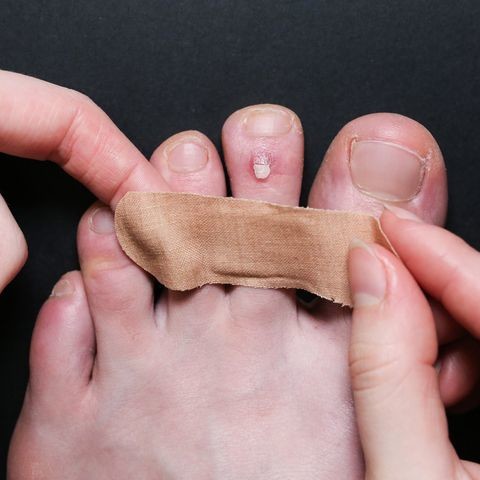
Take Blisters Seriously
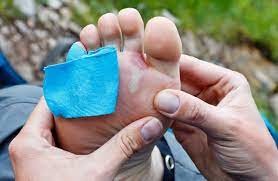
They always seem tiny and innocuous, but they can be day enders. “Even a blister the size of a pea in the wrong spot—at the base of the toe or ball of the foot—can disrupt your gait, meaning pain could go up into your knees or your back,” says Vonhof. “Blisters can seem very minor, but if you don’t take care of them, they can get larger.” He has seen instances where a runner pushed on through a hot spot, not bothering to stop and treat it, and instead of a quarter-inch inflammation, the runner was left with a two-inch bulge covering the whole arch of their foot. Once ripped, a blister leaves a huge patch of raw, exposed skin rubbing the inside of the shoe—not a comfortable situation.
Know the Causes
It’s generally understood that pressure, friction, heat, or moisture can cause blisters to form. When layers of skin and bones move against each other, the inner connections can break down, and a fluid-filled cavity forms. There are a few simple rules to help avoid blister-causing situations. “The most important thing is fit,” Vonhof says. Not enough room in the toe box or too much space in the heel can cause pinching or shifting. Also, Vonhof says, “Skip the cotton socks.” Technical, breathable wicking blends that stay in place are key. We can recommend a few: Balega Blister Resist socks prevent clamminess and eliminate friction, Drymax makes a collection of socks for runners that keep your feet moisture-free, and Injinji’s toe socks keep your digits from rubbing. Mileage matters, too. If you try to run 50 miles off the couch, you’ll probably wind up with blisters. But steadily add distance with a training plan and your feet will thank you.
Prep Your Feet
Proper foot care means good preparation, according to Vonhof. Before a big run or hike, he recommends reducing calluses, trimming and filing toenails, and getting proper insoles for your shoes. If you’re racing long distances, plan to change your socks often, air your feet out at regular rest stations, and carry a foot-care kit (Trail Toes makes a prepackaged blister kit). If you clench your toes, work to relax your feet while running. If you’re prone to blisters or are running ultramarathons, taping problem areas in advance might be a good idea. At Badwater, Vonhof regularly pretapes the entire bottom of a runner’s foot, and he recommends Leukotape K Kinesiology tape since it stays put and molds easily. If you’re running in wet conditions or your dogs tend to sweat, apply a layer of protective, moisture-managing cream, like RunGoo, before putting on your socks. Vonhof likes Squirrel’s Nut Butter Anti-Chafe salve for slathering between toes or on heels to prevent irritation.
Ditch the Moleskin
People used to rub Vaseline on a blister, then cover it with a doughnut-shaped piece of moleskin. These days, Vonhof prescribes lancing. “It’s a debate. Should you lance the blister and get the fluid out or leave it?” Vonhof says. “Sometimes it’ll pop on its own. If it’s in an area where you’re going to continue to put pressure on it while you run or hike, you’re better off lancing it.” To do that, he recommends cleaning the skin first, then piercing it in two places with a sterile pin or needle—a safety pin, tweezers, or pocketknife sterilized with a flame or vodka will work. Gently push the fluid out. (Gravity will also help the blister drain.) Then apply an antibiotic ointment, like Neosporin, and put 2nd Skin or KT tape over the top. Standard Band-Aids don’t stick well and tend to shift.
by Megan Michelson
Login to leave a comment
Over Half Of Ultrarunners Get Nauseous During Races; Here's Why
The list of issues and injuries that an ultrarunner can face while racing is lengthy. Blisters, chafing, cramps, muscle strains, knee pain, heat illnesses, and altitude sickness are just a handful of the possibilities. Perhaps none of these potential problems, however, are as prevalent and impactful during ultramarathons as nausea and vomiting. Indeed, practically every ultrarunner has their own tale of yakking on the side of a trail or into an aid station trashcan. For some, it's an unlucky one-off event, but for others, recurrent nausea consistently mars their ability to perform up to their expectations.
The reason so many ultrarunners get stricken with nausea is undoubtedly multi-faceted, and to be honest, there is not a cut-and-dry singular explanation. Still, we do have some clues as to why the prevalence of nausea and vomiting is up to 2-3 times more common in these races than much shorter distances. Let's take a look at what the research says about the possible culprits as well as some of the strategies you can try to deal with this troublesome symptom.
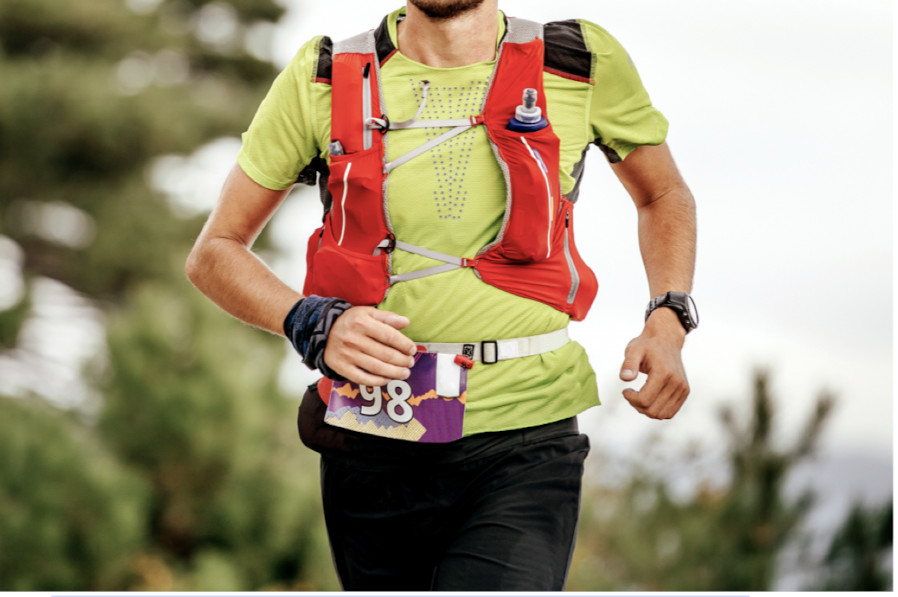
Just How Common Is Nausea?
Beyond the anecdotes, what exactly do we know about the prevalence of nausea in ultrarunners? Before we get to some data on that question, it's important to recognize that surveys used to gather this information quantify nausea differently. In addition, the occurrence of nausea is likely to vary with temperature and humidity, elevation, and the length of a race. As such, it's a bit foolhardy to throw out a single estimate of nausea and think that it applies to every ultrarunning scenario.
Caveats aside, some of the relevant data tells us that nausea incidence clearly increases with race duration. Dr. Martin Hoffman, professor emeritus in the Department of Physical Medicine and Rehabilitation at the University of California, Davis, has overseen several studies on this topic, and in some cases, up to 6 out of 10 runners experience nausea during an ultramarathon. To give you some perspective, consider that around 10% of regular marathoners typically suffer from nausea.
Now, some of these cases of nausea are quite mild or transient, meaning they won't hurt performance much. Still, up to half of cases can be severe enough to impact ultrarunning performance. In fact, one of Hoffman's investigations found that nausea or vomiting was the leading reason for racers to drop out of the Western States 100-mile Endurance Run. During a regular 26.2-mile marathon, a runner suffering from nausea near the end of the race is likely to grit their teeth and finish. In contrast, the thought of having to suffer for another 20, 30, or 50-plus miles while feeling queasy is, very understandably, too much for some ultrarunners to cope with.
Multiple Causes
The puzzle of why nausea is so common during ultrarunning is difficult to solve, in large part because there are multiple physiological changes occurring simultaneously over the course of an ultrarace. It's also incredibly tough to match the demands of an ultrarace in a laboratory, so mechanistic studies looking at the origins of nausea during super-prolonged exercise are few and far between.
Even with the scientific uncertainty, we do have some decent guesses as to what's provoking the urge to spew in so many ultrarunners. During prolonged exercise, you secrete hormones like adrenaline and glucagon into your blood that allow your body to liberate fat stores, make glucose, and maintain your blood sugar levels. Arginine vasopressin, a fluid-conserving hormone, is also released so that you can reduce urine production. Blood levels of endotoxins (sort of invader molecules that seep through your gut's walls) and inflammatory molecules can also surge. And finally, you've got muscle breakdown products, like urea and creatine kinase, spilling into your bloodstream. All these substances can stimulate what's called the chemoreceptor trigger zone in your brainstem, which communicates with another brain region called the vomiting center.
Long story short, you've got a cocktail of substances circulating in your bloodstream that act as a potent trigger for nausea. The concentrations of all these substances tend to increase over time during prolonged exercise, which may help to explain why nausea becomes much more common in the latter half of ultraraces.
A Nervous Gut
The release of stress hormones like adrenaline can also occur even before you take your first official stride during an ultra. Throughout the history of sport, many athletes have been plagued by precompetition anxiety severe enough to induce vomiting. Bill Russell, perhaps the best center of all-time in the sport of basketball, reportedly vomited before many of his big games. There's also a moment in the Steve Prefontaine biopic Without Limits that perfectly captures what prerace nerves can do to even the most elite athletes. In the scene, Prefontaine is seen puking under the grandstands before his race against other running greats like Frank Shorter and Gerry Lindgren, even as the crowd chants his name.
These anecdotal accounts are also beginning to be backed by research. Just this year, two of my colleagues and I published an investigation that found anxiety to be associated with the occurrence of nausea in endurance race competitors. The study, published in the European Journal of Sport Science, had 186 endurance-trained individuals document their life stress and anxiety as well as the gut symptoms they experienced during one of their recent races. A subset of the subjects also reported how anxious they felt on race morning. Ultimately, racers who reported higher levels of general anxiety had over three times the odds of experiencing significant levels of nausea during competition. Further, those who reported lots of anxiety on race morning had over five times the odds of experiencing substantial in-race nausea.
These are correlations, so it's hard to definitively prove that these athletes' nausea issues were completely due to anxiety. That said, other lines of evidence support the idea that this relationship is at least partially cause and effect. Plus, most of us have had our own out-of-sport run-ins with gut distress stemming from worries and anxieties, whether they be from a first date, a medical procedure, or an interview.
Sweltering Heat and Altitude
Environmental conditions also play a major role in development of nausea during ultras. Some of the most prominent ultramarathons in the world (e.g., Western States Endurance Run, Badwater Ultramarathon, Marathon des Sables) are held in sweltry conditions. When researchers ask runners to exercise in the heat, the incidence of nausea can quadruple in comparison to exercise carried out at the same intensity in more mild conditions.
Besides the heat, another environmental factor that many ultrarunners deal with is altitude. Nausea is a well-known symptom of acute mountain sickness, with written accounts going back at least several hundred years. Add exercise to the mix, and you can start to understand why nausea is a big issue for competitors at races like the Hardrock 100 and the Khardung La Challenge, which has the highest elevation of any ultrarace in the world.
Fueling: A Delicate Balance
One other notable contributing factor to nausea is in-race fueling. The nutritional demands of ultrarunners can far outpace those of other athletes competing at shorter distances. For those ultrarunners who are looking to push the boundaries of what their bodies can do, they might end up consuming carbohydrate at rates of 60-90 grams per hour. That's roughly equivalent to 3-4 sport gels per hour! Even lesser amounts of carbohydrate (30-60 grams per hour), though, can pose a significant challenge to the gut's capacity to digest and absorb fueling.
In short, fueling during an ultramarathon often takes place on a knife's edge. Too little can lead to a bonk and even nausea if your blood sugar gets too low, while too much foodstuff can also provoke the gut and induce queasiness. With that in mind, it's critical that ultrarunners practice their fueling strategies multiple times throughout the weeks leading up to a race. Ideally, at least some of these gut-training sessions would be done at a pace similar to race-pace and in similar environmental conditions that an athlete expects to compete in.
Strategies to Quell or Avoid Nausea
Given all this information, you might be wondering how to best avoid the nauseous fate of so many ultrarunners. First, you should accept the fact that there is likely no ironclad way to completely eliminate the risk of nausea during an ultra. There are just too many potential causes. That being said, you do have the power to minimize your risk of being stricken with severe nausea. And for some athletes, it will be important to take a multi-pronged approach as opposed to relying on a single strategy. Below are my top five tips for reducing the odds of tossing your cookies during your next ultra.
Acclimate to the heat and altitude if your race is held under those conditions. Likewise, employ cooling strategies (e.g., drinking cool beverages, putting some ice in your cap or shirt, dousing yourself with cool/cold water, etc.) throughout a race that's held in sweltering conditions.
If you suffer from prerace nerves, try techniques like slow deep breathing or mindfulness. Better yet, consult with a sports psychologist.
Avoid both overhydrating as well as underhydrating. During a single-stage ultramarathon, some amount of weight loss is normal (due to the loss of energy stores), so you shouldn't be drinking so much that you weigh the same or more after a race as before the race. On the other hand, large body mass losses (e.g., >5%) may be a sign that you're underhydrating.
Train your gut! If you plan to push the boundaries of food and fluid intake during the race, of course it makes sense that you should practice your nutrition plan during some of your longer training runs. Much like other organs in your body, the gut is adaptable.
Try ginger. I'm generally not a purveyor of supplements, but if the above mentioned strategies don't do the trick for you, there is at least one nutritional product that has shown some anti-nausea properties in settings outside of exercise: ginger. To be specific, these anti-queasiness effects have been most often studied in nausea occurring during pregnancy, motion sickness, and chemotherapy. No supplement is without risk, and many products sold in the U.S. are of questionable quality, so anyone looking to use ginger supplements-or any other supplement for that matter-should do their research and consult with their healthcare provider as well.
by Trail Runner Magazine
Login to leave a comment
Pam Reed Becomes the 17th Person to Finish 100 100-Mile Races. And She Has Some Advice for You
The ultrarunning legend shares wisdom gleaned from nearly three decades of running 100-milers.
Ultrarunning legend Pam Reed just celebrated her 60th birthday as part of one of the most exclusive clubs in running: the group of runners who have finished 100 official races of at least 100 miles.
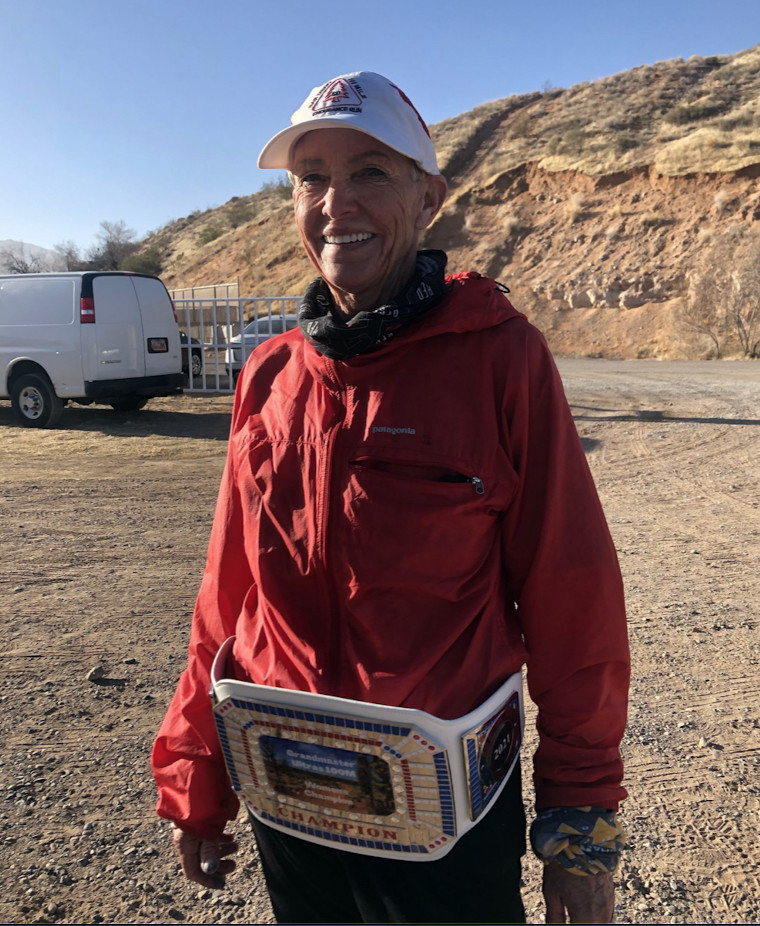
According to ultrarunning historian Davy Crockett, Reed is the 17th person in recorded history to have completed 100 100-milers in their lifetime (it was recently discovered that Frederick Davis III also reached this mark in December 2019, making him the 18th member of this group). Reed achieved the impressive mark at the Grandmaster Ultras in Littlefield, Arizona, on February 6, where she finished the 100-miler in 25:02:54—first woman, and third overall.
To clarify, this honor is the completion of 100 official races that were at least 100 miles. This means that even if Reed completed 491 miles at an event, like she did at the 2009 Self-Transcendence Six-Day Race, she was only credited with a single 100-miler. Though you may think Reed wishes that the extra mileage had added up to reaching her title sooner, she wouldn’t trade away any parts of her storied career.
Reed has run ultras, ranging from 50K to multi-day races, for three decades. Among her many accolades, she was the first woman to outright win the Badwater 135—a feat she achieved in 2002 and repeated in 2003.
In 2019, Crockett mentioned to Reed that she was at 89 total 100-mile finishes. That surprised her, because she assumed she had already hit that mark.
“In my mind, the way I counted, I thought I had done it,” Reed told Runner’s World. “But I counted 220 miles that I ran at a 48-hour race as two [100-milers] or my six-day race as four. But they didn’t count, and when I found out I was 11 away from something only a handful of people had done before, I decided to go for it.”
So Reed set the goal of reaching the 100 mark before her 60th birthday in February 2021, and decided to do 10 100-milers in 2020. In addition to a handful of 50Ks, a 60K, a 100K, and a half Ironman, this was going to be her biggest year ever. Previously, the most she had done five or six in a year, with other distances sprinkled in as well.
As you can imagine, Reed’s year was turned upside-down as the pandemic wiped away many of the races she wanted to do. Having to adapt, she signed up for virtual races, running courses she and her friends mapped out near in Jackson, Wyoming, where she’s based. She ran from her home to the Grand Tetons for races like Hardrock Hundred and Wasatch 100. She also did 100-mile races, such as Bryce Canyon Ultras and the Javelina Jundred, in-person when she could.
“I don’t really plan that much,” Reed said. “I’m not a great planner. It just kind of happens, and if a race happens, I go for it. I made courses if I had to, calling my friend who made a five-loop course climbing up a mountain five times. I don’t want to do this five times. I can be a whiner, but I did it and 100-milers are hard no matter what way you do them.”
For her century race, she planned to do Arrowhead 135, a challenging winter race in northern Minnesota in February. However, that was canceled because of the pandemic, so she opted for the Grandmasters Ultra for her 100 crown.
And Reed had a chance to win the race—she was leading after 39 miles, but a few runners took a wrong turn on a 5.5-mile loop, and the course was adjusted after Reed had already completed the section. She was passed and took third overall, but that didn’t spoil her big day. When she came across the line, she received not only her belt buckle, but also a plaque and a cake commemorating her 100th 100-miler.
“I’m so blessed to have the body that can keep doing this,” Reed said. “It’s cool that only so many people have ever done this. I’m really proud of it. My goal in life is to be able to run until I die and I am 100-percent serious when I say that. I just want to live my life to the absolute fullest, and, in my opinion, that is being able to run, skate ski, swim, bike, and get outside as long as I can.”
As the 60-year-old looks back on fondly on her race resume and the different challenges that each race presented, we also asked her what wisdom she might have for budding or experienced ultrarunners who dream of reaching the heights that Reed has in her career.
Here is what she had to say.
Energy powers her: I’m Finnish, a quarter Swedish, and a quarter Norwegian—I think there’s something to that. I know a lot of Finnish people, and they are hardcore. Living in Jackson, I’m surrounded by hardcore people. I just have a lot of energy, so I always want to be doing things. That really helps me do what I do.
Do a lot of modalities: I do a lot of hot yoga, often twice a day. I do acupuncture, I get massages regularly, and when things are hurting, I work on them immediately. I used to be a gymnast, and I could put my chest on the floor between my legs. Now, I don’t need to do that. I adjust my yoga to fit what I want to do as a runner. I’m intuitive about what I do and do not do.
Don’t wear so many clothes: I can’t tell you how many times I start with more clothes than I needed. I’ve learned from winter races that you can’t sweat or you’ll get colder, and I needed to find a happy place. Turns out in the summer, that’s a cotton shirt, arm sleeves, and men’s nylon socks.
Learn to fuel properly: I learned that I’m best running with Tailwind, nut butter, and Justin’s Almond Butter. I use GU gels when I race Ironmans, but I usually can’t get those down in a 100-miler. Except for one time at Leadville, I started throwing up eight hours into the race, and I didn’t stop until I took a GU with about 13 miles to go.
Listen to your body above anything else: Okay, don’t necessarily try this at home, but I don’t always listen to what experts tell me. I listen to my body. That’s not to say I ignore experts. But it’s also okay, in my opinion, to investigate. You should do that. Everyone is different, and you have to figure out what works for you. Don’t hurt yourself, but try things like massages or hyperbaric chambers. Do your research first, of course.
Fail and learn: Failing is learning. No one race is the same and not all races will be perfect. We all have to learn again and again.
by Runner’s World
Login to leave a comment
The 2020 Badwater 135 will not be held due to the pandemic
"The World’s Toughest Foot Race has been cancelled for 2020. This was going to be the first race featured by My Best Runs to happen since the LA Marathon, held March 8, but Badwater 135 organizers just could not get things worked out," says MBR Director Bob Anderson.
Covering 135 miles (217km) non-stop from Death Valley to Mt. Whitney, CA, the Badwater® 135 is the most demanding and extreme running race offered anywhere on the planet. The start line is at Badwater Basin, Death Valley, which marks the lowest elevation in North America at 280’ (85m) below sea level.
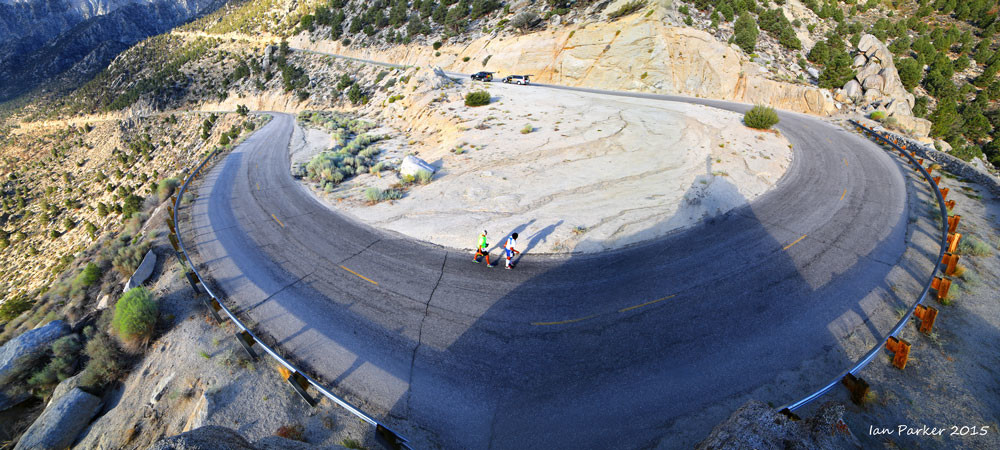
The race finishes at Whitney Portal at 8,300’ (2530m), which is the trailhead to the Mt. Whitney summit, the highest point in the contiguous United States. The Badwater 135 course covers three mountain ranges for a total of 14,600’ (4450m) of cumulative vertical ascent and 6,100’ (1859m) of cumulative descent.
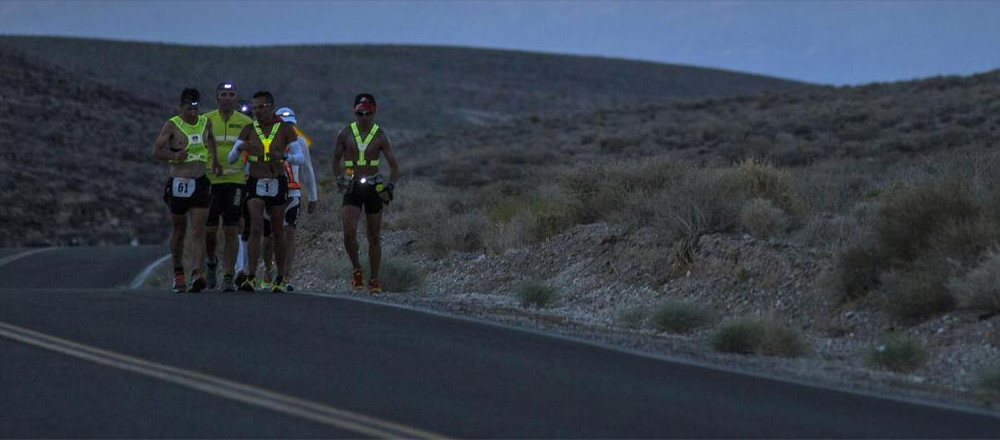
Competitors travel through places or landmarks with names like Mushroom Rock, Furnace Creek, Salt Creek, Devil’s Cornfield, Devil’s Golf Course, Stovepipe Wells, Panamint Springs, Darwin, Keeler, Lone Pine, Alabama Hills, and the Sierra Nevada.
The 43rd edition will NOT take place Monday-Wednesday, July 6-8, 2020.
Login to leave a comment
Badwater 135
Recognized globally as "the world’s toughest foot race," this legendary event pits up to 90 of the world’s toughest athletes runners, triathletes, adventure racers, and mountaineers against one another and the elements. Badwater 135 is the most demanding and extreme running race offered anywhere on the planet. Covering 135 miles (217km) non-stop from Death Valley to Mt. Whitney, CA, the...
more...The World’s Toughest Foot Race is on and going to be the first race covered by MBR since March 8. The 43rd annual event is set for July 6-8
The last race MBR posted results for was the LA Marathon March 8. Since then every race we cover, and we only cover the best, most unique and interesting races in world have either been cancelled or postponed. We are talking about races like the Boston Marathon, Big Sur and the Berlin Marathon only to name three.
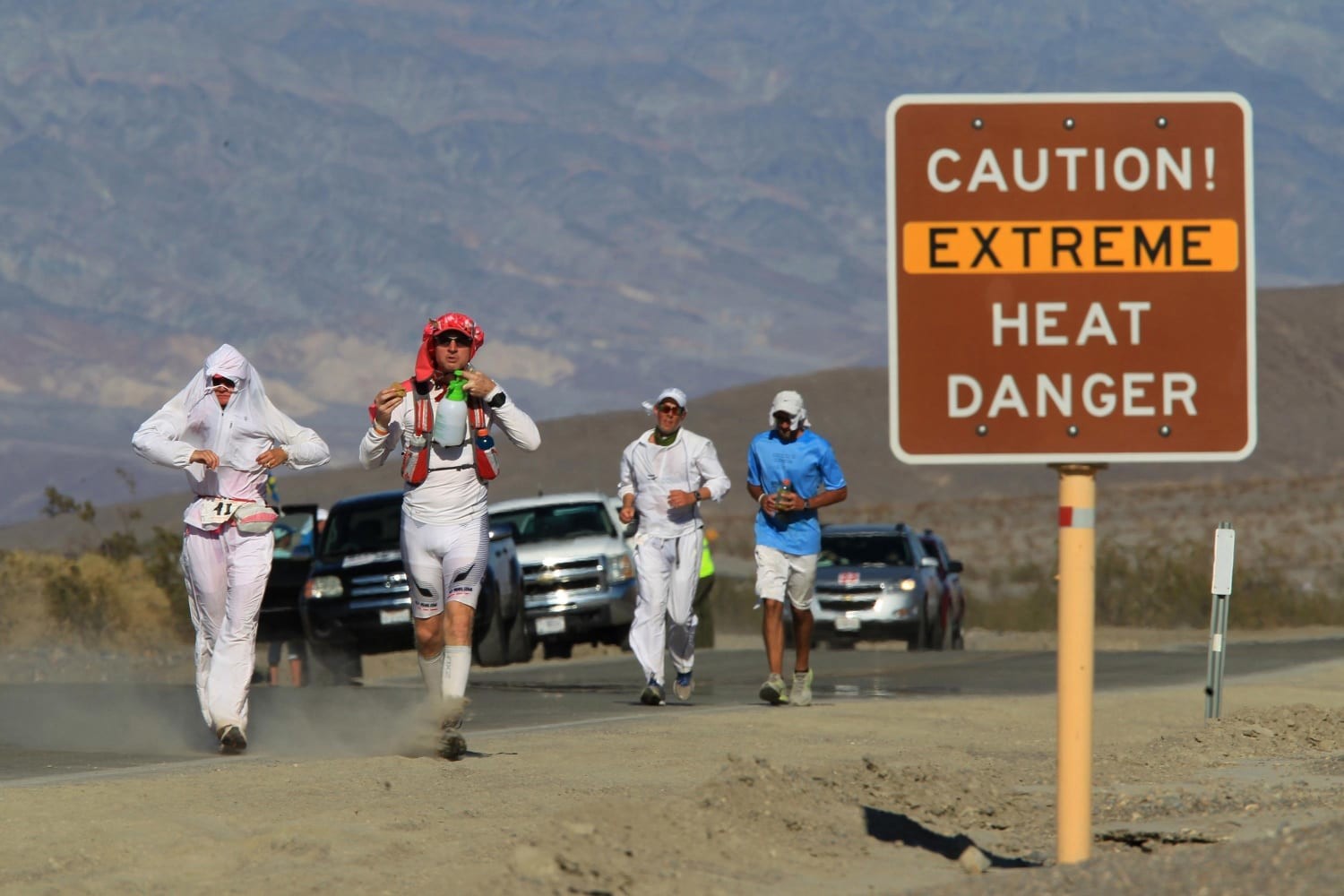
The big question has been, what race is going to be the first? it appears it is going to be an ultra race. A race celebrating 43 years. The Badwater 135. No races for four months.
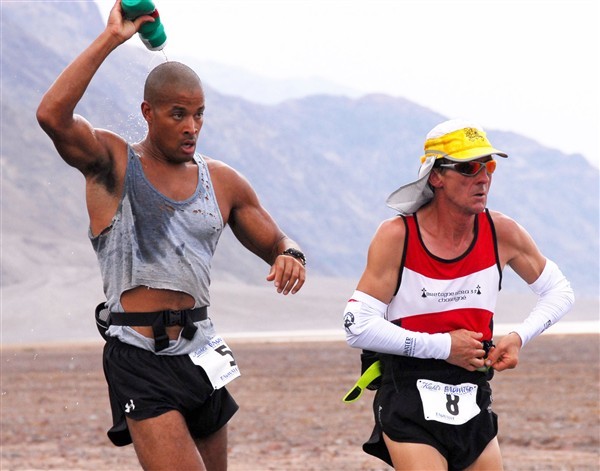
Covering 135 miles (217km) non-stop from Death Valley to Mt. Whitney, CA, the Badwater® 135 is the most demanding and extreme running race offered anywhere on the planet.
The start line is at Badwater Basin, Death Valley, which marks the lowest elevation in North America at 280’ (85m) below sea level. The race finishes at Whitney Portal at 8,300’ (2530m), which is the trailhead to the Mt. Whitney summit, the highest point in the contiguous United States. The Badwater 135 course covers three mountain ranges for a total of 14,600’ (4450m) of cumulative vertical ascent and 6,100’ (1859m) of cumulative descent.
Competitors travel through places or landmarks with names like Mushroom Rock, Furnace Creek, Salt Creek, Devil’s Cornfield, Devil’s Golf Course, Stovepipe Wells, Panamint Springs, Darwin, Keeler, Lone Pine, Alabama Hills, and the Sierra Nevada.
The 43rd edition will take place Monday-Wednesday, July 6-8, 2020.
by Bob Anderson
Login to leave a comment
Badwater 135
Recognized globally as "the world’s toughest foot race," this legendary event pits up to 90 of the world’s toughest athletes runners, triathletes, adventure racers, and mountaineers against one another and the elements. Badwater 135 is the most demanding and extreme running race offered anywhere on the planet. Covering 135 miles (217km) non-stop from Death Valley to Mt. Whitney, CA, the...
more...I didn’t know Ultra running was even a thing until recently says a Pulitzer Prize winner John Archibald
I didn’t know ultra running was even a thing, until recently.
And then I read about a guy in Kansas last year who was about to complete a 50 kilometer race when, before he could cross the finish line, he was struck by lightning and killed on the spot.
Ouch.
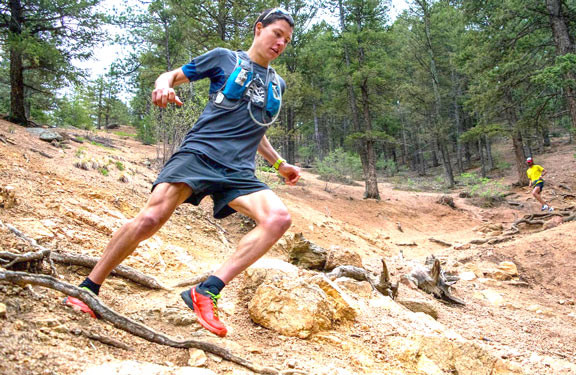
I thought at first it was the saddest thing I’d ever heard, a guy running for hours, pushing himself beyond limits I could fathom, to die in a flash before he could reach the end.
But the more I thought of it, the more I thought I might be wrong. Maybe it was just the opposite. Maybe it was a beautiful, poetic way to exit this realm, testing one’s body, stretching one’s will beyond earthly bounds. The race couldn’t break him. It took a bolt from the sky.
I couldn’t even define the sport, much less participate in it, for my knees hurt when I drive 26 miles in a comfortable car. Ultra running is anything longer than a marathon, really. The sport is a global phenomenon, and big in Alabama, too, from the Bearly Ultra, a 27-mile trail race sponsored by the Birmingham Ultra Trail Society – or BUTS – to 50 mile and 100 mile races across this state.
It seems so surreal, so impossible. I knew Birmingham was home to Micah Morgan, one of the best ultra runners in the country, because I’d read how she finished the Badwater 135, a 135-mile race that starts in Death Valley, Calif., and ends impossibly at the summit of Mt. Whitney, the tallest mountain in the lower 48 states.
But I’ve come to see the people who are committed to ultra running, and they are very real. I look across the office at my colleague, Bob Sims, who entered a couch-to-5k program eight years ago when he couldn’t run a single mile. Last year, at the age of 62, he ran in two 100 mile races.
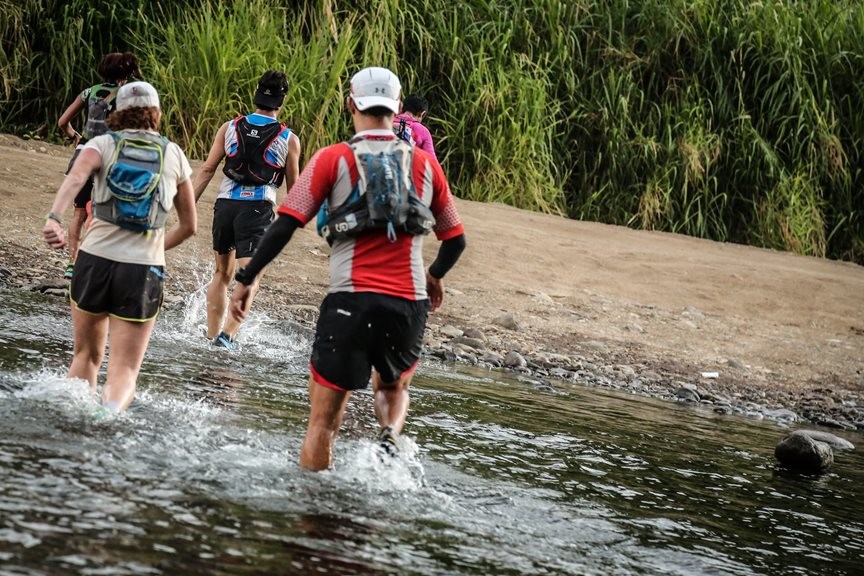
That’s remarkable.
I see my colleague Anna Beahm, who started running in high school to get her mind and body right but was driven to longer distances for the joy of competition, for the sheer badness of doing something 99 percent of humanity cannot or will not do. She ran four ultra races last year – three 50ks and a 50-miler.
I can understand those things. Even if I will never be a 1 percenter.
What I didn’t get, until I talked to BUTS president Lisa Booher, was the depth and the breadth and the complexity of the ultra running world in Birmingham. I always thought of running as a solitary exercise, a plodding one-foot-in-front-of-the-other fight against boredom.
“I think that’s why you have to have friends,” Booher said.
Which was not as pointed or personal as it sounds now.
“I fell in love with the running because of the competition,” she went on. “I kept running because of friends.”
That’s what I really didn’t get about this exercise in super endurance and hyper drive. It can be a form of moving meditation, as Booher puts it, a time of self-discovery and exploration. But running 50 or 100 miles requires more than a solitary soul.
It requires a crew and volunteers and an understanding that simply competing in events like these amounts to a part-time job. It takes support and sustenance and friendship. It requires conversation, often, mid-race, about anything but the running itself, or the pain, or the shoes. It requires a community.
It’s a good thing Alabama has one of those. An ultra one.
John Archibald, a Pulitzer Prize winner, is a columnist for Reckon by AL.com. His column appears in The Birmingham News, the Huntsville Times, the Mobile Register and AL.com. Write him at jarchibald@al.com.
by John Archibald
Login to leave a comment
Grandma, Pamela Chapman Markl, 64, is breaking ultra marathons records
It’s not unusual to find Pamela Chapman Markle running anywhere from 80 to 100 miles each week. It’s just part of her long-distance race training as an ultramarathon runner, and the San Leon resident says she loves it.
“I enjoy the challenge physically and mentally,” said Markle. “It’s always a surprise to me to see how the body will adapt to what you demand of it.”
At 64 years old, Markle is persevering in a passion that pushes her to the limit. And the demands for ultramarathon running — races that go beyond typical marathon length of 26.2 miles — can be tough.
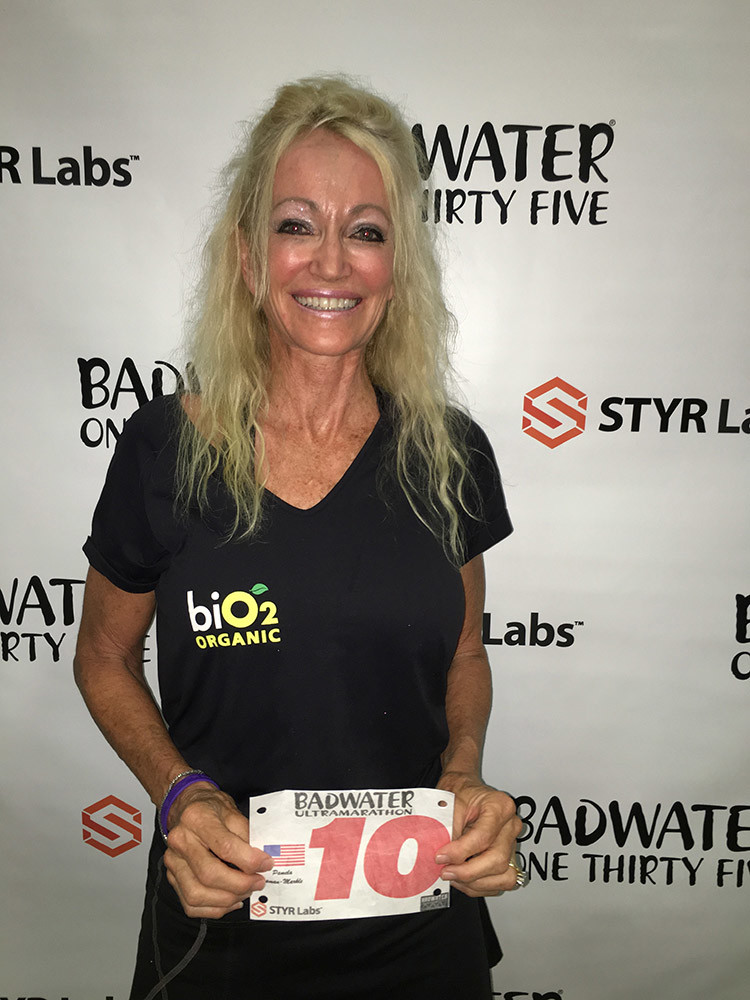
“My current running schedule is very hectic,” said Markle, who runs one long weekend run of up to 25 miles. “Stretching has become a necessity with my aging, and also some strength work.”
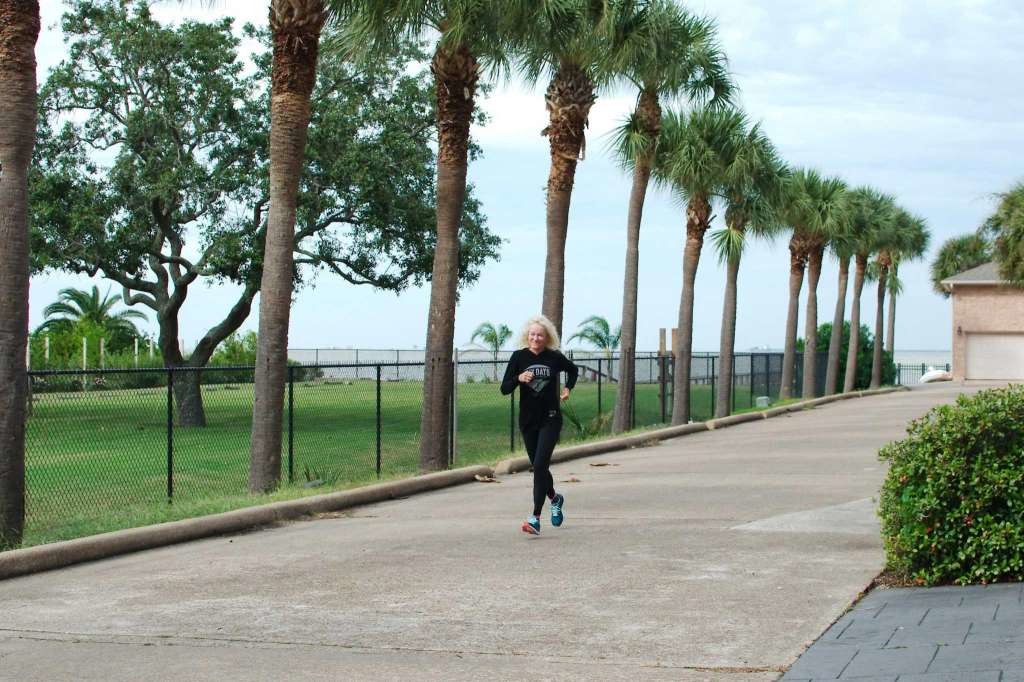
Races often range from 50 to 200 miles, with some lasting for an undetermined distance requiring more from 24 to 48 hours. The courses can be varied from cross-country trail races to repeating single loops on a track.
Most of the races that Markle has completed have been between 50 and 150 miles and last up to 48 hours. She has run almost 40 ultramarathons in the last 10 years.
“I have run nine ultramarathons since January 2019, and I have more to complete this year,” said Markle, who works as a certified registered nurse anesthetist.
Preferring to run by herself rather than in crowds, Markle doesn’t train with a running group and has no time in her schedule for the traditional marathons and 5Ks.
“I am disciplined enough to run alone and love it,” said Markle, who’s also careful to manage her nutrition for running.
Her hard work is paying off. Markle is breaking race records in her age division and earning recognition, including running one of the fastest times of 21 hours and 29 minutes in her age group at a 100-mile road race in Florida.
Markle set another record at the MadCity 100K in Wisconsin, where she won the USA Track & Field National Champion for her age group. She also set records in her age group for the Badwater 135 race, a course that covers 135 miles non-stop across California terrain.
Chris Kostman, who organizes the Badwater series of ultra running races, said Markle is redefining what’s possible for runners as they age.
“She has broken the women’s 60-plus age group record during each of the four consecutive Badwater 135 races she’s competed in,” Kostman said. “Her performances are plain to see, and we all stand in awe of Pamela.”
She became interested in distance running a decade ago when a surgeon who she knew ran ultramarathons encouraged her to give running a try. Her first race was called the Rocky Raccoon and 100 miles long. Markle trained for nine months.
“I didn’t train properly and had quite a few injuries,” said Markle, who has three daughters and eight grandchildren. “I decided to do another race with a different training program. Then I got hooked.”
by Kimberly Piña
Login to leave a comment
Rocky Raccoon 100 mile
Rocky Raccoon is the fastest 100 mile trail run for men in North America, as well as the oldest running 100 miler in Texas having been first run in 1993 with 29 finishers. It’s described as beautiful, fun, and great for veteran runners as well as those looking for their first 100 mile finish. Any American Citizen may enter the...
more...Women are not only finishing ultra marathon races they are winning some of them
According to conventional wisdom and most of the sport’s history, women should not win ultraendurance events — ever — when competing against men. But they are.
Three big wins in the past few months have put women’s performance in the longest and most difficult sporting events on the planet firmly in the spotlight. In September, American athlete Sarah Thomas, a cancer survivor, became the first person to swim the English Channel four times without stopping, spending 54 hours in the water and covering 134 miles. In August, German cyclist Fiona Kolbinger won the 2,500-mile nonstop Transcontinental Race across Europe and in January, British runner Jasmin Paris won one of the toughest running races there is, the Spine, a 268-mile jaunt across Britain’s backbone in winter, while breastfeeding her baby.
The proportion of women in ultramarathons was very low at the beginning of the ultrarunning movement. Records began for U.S. 100-mile ultramarathons in the late 1970s, and the proportion of women was basically zero. Now it’s steady at 20 percent. And not only are women running, but they’re winning.
That’s a record for women in the sport. Still, some prominent ultra gatekeepers don’t think women’s participation will equal success across the board.
Women are winning increasingly frequently. Badwater, the Spine, the Moab 240 — the list of big ultramarathons women have crushed goes on, and it’s not just a matter of winning against a weaker male field than usual. When Paris won the Spine in January, running 268 miles from England to Scotland, she smashed the course record by over 12 hours.

Physically, men hold most of the cards: better V02 Max, which measures the rate at which your body can take in and use oxygen, larger hearts, larger muscle mass, better body mass index ratios and stronger and (usually) longer bones. But women do have some advantages: They’re more efficient than men at converting glycogen to energy. Glycogen is the secondary source of fuel used when glucose levels drop, so basically women can access and burn fat better. They also store fat better, itself an advantage because it means they can draw on those stores during punishing longer races.
Psychologically, too, men don’t have an obvious edge over women. Let’s start with pain: If you’re running long distances, you’re likely to experience pain. Despite a popular myth that women have a higher pain threshold than men, studies show that in fact women feel pain more quickly. This works to their advantage in ultras, as a quick response to pain means that they can locate and treat small problems like the onset of blisters early in the race. Also, when women feel pain, brain studies have shown that they mobilize emotion-processing parts of the brain to deal with it and so can train themselves to overcome it, whereas male brains more often use threat-control circuits, giving them increased adrenaline and awareness — but tiring them out faster.
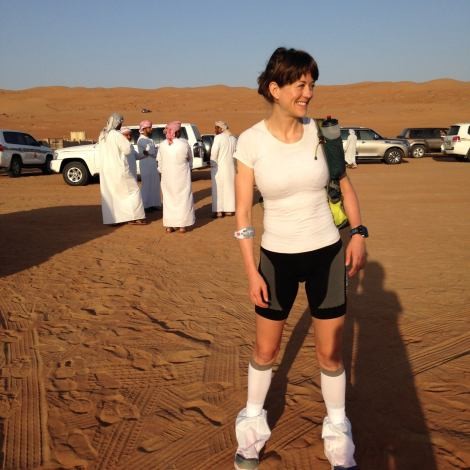
“Science doesn’t really back up anecdotal theories about childbirth making women stronger endurance runners,” says psychologist and keen marathoner Sian Williams, but she adds that there is evidence that women can be better at pacing themselves. A 2015 analysis of more than 90,000 marathon results for 14 races suggested both sexes slowed by the second half, but men more so than women. The study, published in Medicine and Science in Sports and Exercise, suggested that men’s early burst of speed is linked to competitive behavior but causes issues in the latter part of the race. “Perhaps the psychology of ego and risk plays as much a part as physiology in lasting the distance,” Williams concludes.
That psychology of risk emerges also in the way the sexes handle sleep deprivation. Men have the physical advantage: They need less sleep than women by an average of 20 minutes. But men and women have diametrically opposed reactions to lack of sleep: Men’s behavior becomes riskier, and women’s more risk-averse — also an advantage in an ultramarathon, which requires alertness, night navigation and injury management. In what could be the clincher, women have been found to become more selfish and ego-driven with lack of sleep, mimicking typical male behaviors and increasing competitive will, which could give them a final push toward the end of an ultra.
Elisabet Barnes is a two-time women’s champion of the Marathon des Sables, a 251-mile race across the Sahara Desert. She’s also won ultras outright, including Australia’s Big Red Run. For her, the key is less about biology and more about attitude — such runs require “leaving the ego behind, planning all aspects of the race meticulously and having a spiritual presence, leveraging the elements and working with them … rather than fighting the harsh environment,” she says This, she notes, may be easier for female participants.
Though the men have a clear advantage physically, female behaviors can disproportionately benefit them in the long and tough races. That could come in handy for the top ultra women who are setting their sights on that “overall winner” title. Even in the iconic Barkley — where many female running luminaries have tried and failed — 2020 could be the year for that elusive female first.
by Alice Morrison
Login to leave a comment
What is the longest someone has run without stopping?
In 1992, after taking a 15-year break from running, it wasn’t enough for Dean Karnazes’ first run to be 30 miles. Winning the infamous, 135-mile Badwater Ultramarathon across Death Valley in 120-degree heat didn’t cut it. Nor did pushing the opposite end of spectrum of human suffering by running a marathon to the South Pole, at -13-degrees F.
From October 12-15, 2005, Karnazes ran 350 miles across Northern California without stopping. He didn’t stop to sleep or to eat, or – in the most stupefying accomplishment of all – he did not even slow down to sample a Sonoma Valley chilled chardonnay. All told, he ran for 80 hours, 44 minutes without a break. He covered ground – from San Francisco to Bodega Bay to Stanford University, in Palo Alto – that many of us would plan for a weeklong road trip in a car.
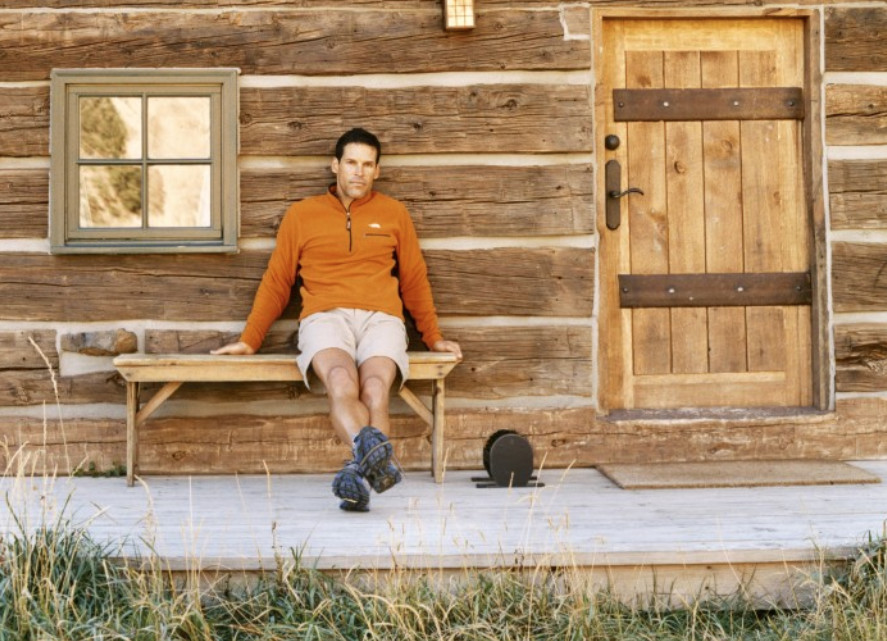
The outing, which cost him a few toenails, included 40,000 calories of intake over the 3.3(ish) days, required shoe changes every 50 miles or so to accommodate his ever-swelling feet, and wasn’t originally supposed to be quite so long. After winning the Badwater in 2004, Karnazes set the goal to be the first runner to go 300 miles without stopping. Because, why not?
Login to leave a comment
Ashprihanal Aalto Wins the 23rd Sri Chinmoy 3100 Mile Race
Ashprihanal Aalto is ready to go to sleep.
The 48-year-old Finn just won this year’s Self-Transcendence 3100 Mile Race. He crossed a duct-tape ribbon Friday after running more than 60 miles on each of 48 consecutive days around the same half-mile course in the Jamaica Hills neighborhood of Queens, N.Y.
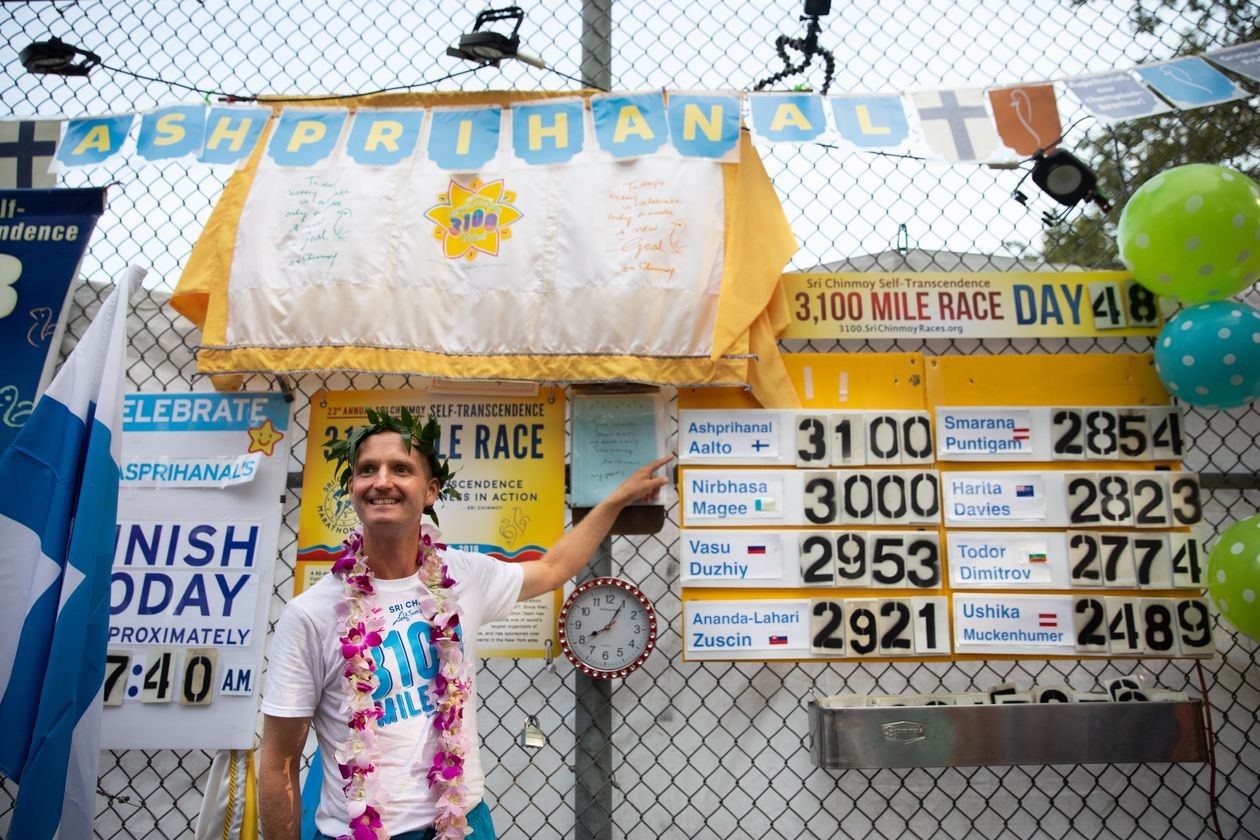
This is Mr. Aalto’s 15th time completing one of the hardest footraces in the world, which requires runners to cover 3,100 miles over 52 days. It is often compared with ultra-endeavors like the 6633 Arctic Ultra that crosses the Arctic Circle and the Badwater Ultramarathon in Death Valley. The concrete sidewalk course wraps around one block that is home to Thomas A. Edison Career and Technical High School and its baseball field, with a view of Grand Central Parkway.
Guru Sri Chinmoy, an Indian athlete and philosopher who died in New York City in 2007, started the run in its current form in 1997.
His goal: to achieve the seemingly impossible—and in the process, transcend the limitations of the mind through meditation and persistence.
Not to mention, New York City’s summer heat, exhaust from nearby traffic and crowds of children walking to school.
Mr. Aalto isn’t the only one ready for a nap. The race relies on dozens of helpers and volunteers who work around the clock.
Hometown friends, co-workers and fellow disciples of Mr. Chinmoy, sleep very little for the month and a half. They spend all day on chores, including fixing the runners’ shoes and making tea and food for the eight runners participating this year who consume up to 110,000 calories a day total.

“You don’t want to have to come through here wondering what to eat,” said race director Rupantar LaRusso.
“I’m very happy,” Mr. Aalto said, who has won the race eight times now. “I can go do other things, rather than run, run, run.”
by Acacia Coronado
Login to leave a comment
3100 Mile Race
The Self-Transcendence 3100 Mile Race. Called 'The Mount Everest of ultramarathons' by The New York Times, is the longest certified footrace in the world. Athletes are able to test themselves in a format unlike any other ultra-marathon event. In order to meet their goal of 3100 miles in 52 days, they must log an average of 59.6 miles per day....
more...An ultramarathoner won the Badwater 135 race through Death Valley, then proposed. (She said yes.)
Moments after he finished the 135-mile run from Death Valley to Mount Whitney, setting a record in the Badwater 135 race, Japanese ultra runner Yoshihiko Ishikawa dropped to one knee. The reason wasn’t fatigue or relief over the accomplishment. He was asking his girlfriend to marry him.
Ishikawa finished the race Tuesday in 21 hours 33 minutes 1 second, breaking Pete Kostelnick’s 21:56:32 mark, set in 2016.
The Badwater race, one of the most prestigious and grueling ultras, started Monday at Badwater Basin in Death Valley, the lowest elevation in North America, and ended at Whitney Portal, the trailhead to the summit of Mount Whitney, the highest point in the contiguous United States.
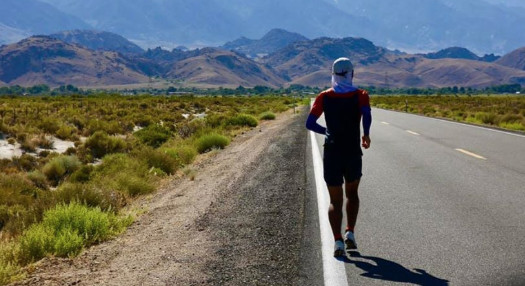
The race covers three mountain ranges, with 14,600 feet of cumulative vertical ascent and 6,100 of cumulative descent, according to its website. An ultra is anything longer than the traditional 26.2-mile marathon.
After Ishikawa’s memorable finish and proposal (she said yes), there were plenty of tears.
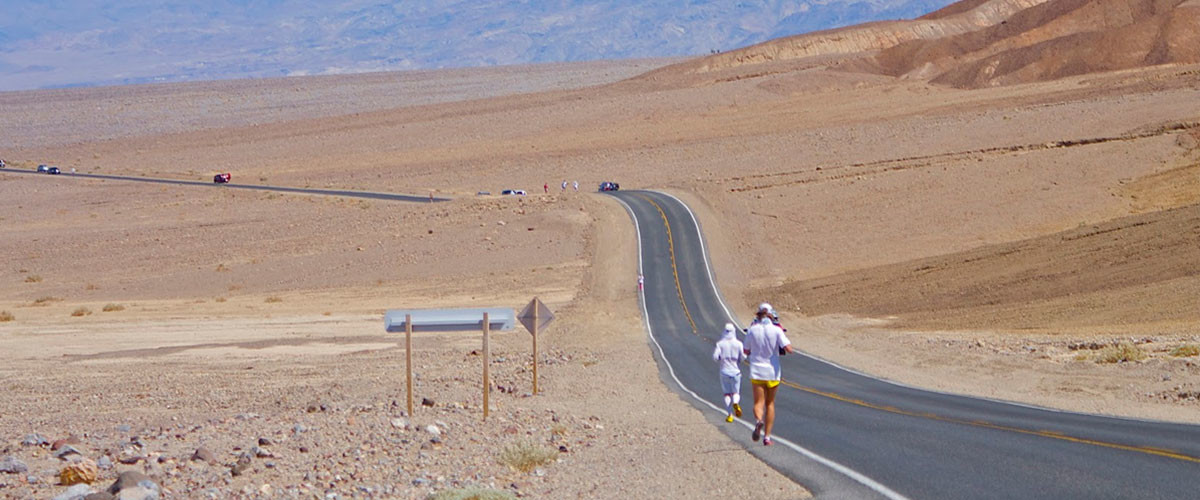
Last year, Ishikawa, a 31-year-old engineer, won the Spartathlon, tracing the 153-mile route that Pheidippides ran before the battle of Marathon, in 22:54:40.
Patrycja Bereznowska of Poland was the women’s Badwater winner (and second to Ishikawa overall) with a time of 24:13:24 that was more than 90 minutes faster than the record set by Alyson Venti three years ago. Bereznowska also won the Spartathlon, in 2017.
Login to leave a comment
Badwater 135
Recognized globally as "the world’s toughest foot race," this legendary event pits up to 90 of the world’s toughest athletes runners, triathletes, adventure racers, and mountaineers against one another and the elements. Badwater 135 is the most demanding and extreme running race offered anywhere on the planet. Covering 135 miles (217km) non-stop from Death Valley to Mt. Whitney, CA, the...
more...The mission of Dean Karnazes is to help all of us get off the couch and on our feet
Dean Karnazes is one of the most famous runners in the world.He's known for running 50 marathons in all 50 states over 50 consecutive days and was named one of Time Magazines "100 Most Influential People in the World." Karnazes also won the world's toughest footrace, the Badwater Ultramarathon. He ran 135 miles nonstop across Death Valley during the middle of the summer.
What is his secret to success? Good genes. Karnazes says he has his parents to thank for his runners body and ability to run without injuries.
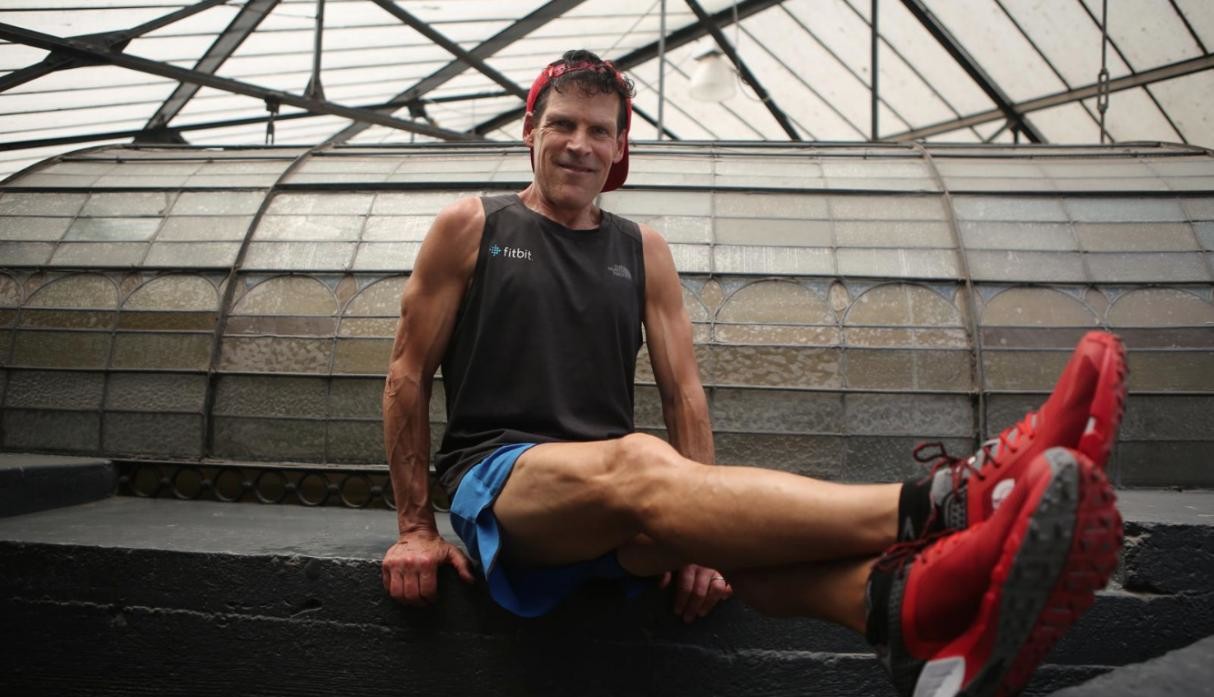
That's right, after years of running Karnazes has never had to take time off because of an injury.One of Dean's missions is to help all of us get off the couch and on our feet.
Dean's tips:1. All you need is a pair of sneakers to get started

2. Start small - try running to the end of your street for the first couple of days. Slowly extend the run to a couple of blocks. Before you know it you will have your fist mile under your belt. Then sign up for a 5K
3. You can do it alone-just you and your music or audiobooks-- or you can do it with family or friends. Start a walking club in your community. Make new friends, or new bonds with family members.
4. A great path to physical and mental fitness
5. It doesn't matter if you're running or walking. Either way you're out there enjoying the same benefits.
Login to leave a comment
Marshall Ulrich, 67, had to drop out of “world’s toughest foot race†he’s previously won four times
Login to leave a comment
Run The World Challenge 2 Profile: Running has become an essential part of my life says Joyce Lee
For the first half of Joyce Lee's life, the only sports she did was swimming and gymnastics. "I never would have thought in a million years I would come to enjoy running," says 37-year-old Joyce. In college she spent her summers teaching private swim lessons.
"I needed another form of exercise, so I turned to running since it seemed like a simple way of getting in some cardio. I didn't own any running sneakers so I just wore my gym shoes and set out to run for an hour in my hilly neighborhood. I had no idea how far I went, or what my pace was; the goal was to just keep moving," she remembers.
At first she was only using running to stay fit but that changed. "Running has been a multi-faceted way to maintaining my overall physical, mental and emotional health. Getting the heart pumping has an amazing way to bringing issues to the front of mind for me, and allowing for some creativity to work its magic.
I am able to sort out problems, formulate new ideas and work through painful patches of my life. Running has become an essential part of my life," Joyce says.
On Juanurary 1, 2013 she decided she would run at least a mile every day for a year. "I often like to fly by the seat of my pants and live with little planning, so this presented a very interesting challenge for me. Any sensible person would carve out time in their morning, wake up early and fit their daily run then, but that wasn't me.
In my first year, I flew over 75,000 miles across the Pacific and around the country for business, weddings and of course a handful of road races. The time zone changes, fatigue from travel, unpredictable weather, lack of facilities required me to get very creative with how I would fit my mileage in.
I have run on a cruise ship track, airport terminals, stairs, and even a hotel hallway on my birthday at midnight. I am now into my sixth year of running every single day," she says with pride.
She likes the idea of the Run The World Challenge and this is why she signed up. "It is a wonderful way for runners near and far to work together as a team, joined by their passion, to work towards a common goal. This is an awesome way for runners to socialize online and cheer each other on," says Joyce.
Recently she placed first in the 50 mile Run De Vous Ultra. "I was adequately heat trained from having served as crew and pacer at the Badwater 135 Ultramarathon in Death Valley, I was able to successfully run the entire 50 mile distance.
The heat reached as high as 101 degrees in Morgan Hill (California), but I was able to outrun the second place runner by over two hours. It felt incredible to cross the finish as first overall winner rather than first female, something I never imagined I'd ever experience. I'll never forget it," she says.
Some of her PR's include 20:02 for 5K, 1:34:20 for the half, 3:27:20 for the marathon and 29:41:23 for 100 miles.
by Bob Anderson
Login to leave a comment
Global Run Challenge Profile: Not only does running keep me sober, it helps me feel balanced says Henry Ward
RUN THE WORLD: Henry Ward has been sober since November 17, 2008 and after his son was born in March of 2012 he noticed he was becoming squirrelly.
"Even though I wasn't drinking or using," Henry says. "I became restless. Sort of like a dry drunk. I knew I needed to do something."
He was going to visit a friend and Henry asked what they were going to do. "My friend was thinking about running a 8k race. He said he would run if I did. I said sign me up! I didn't even know how far an 8k was," Henry remembers.
"I hated every step of that race, and vowed never to run again. Every time a runner past me, I was angry. I honestly wanted to trip or elbow all runners I saw. But when I finished, I received a glass medallion. I also had a feeling that I will never forget. A feeling of accomplishment, and happiness, that prompted me to seek out another race as we drove back to my friend's house." Henry signed up for another 5k the following weekend and then a 4 miler. He was hooked. Henry is from Boston and currently lives in Tempe, Arizona. He is married and has a 6-year-old son.
"Family is always first, running comes second," he says. He is a chef by trade. "I get to sweat, lift things and log 30,000 steps at work alone! Plus eat! I love to eat. I eat 4000 calories a day," Henry says.
"I run to survive, to help me deal with life on life's terms. When I run and exercise I feel alive and it helps my day flow. If I didn't find running I would be a neurotic mess." He loves how he feels during and after running.
"The Runner's high, and endorphin kick was like no other. I am thankful that I found running, and it has changed my life for the better. Not only does it keep me sober and it helps me feel balanced," he says.
He believes that anyone can change, if they want to. "If I can change, anyone can! I have come along way, but know that I still have a lot of work to do on my personal character defects."
He moved up from the 5K to doing ultras. In 2017 he completed the 250K six day stage race, 4deserts Patagonia. In 2018 he did the Boston Quad which is running the Boston Marathon four consecutive times.
"The official marathon was number four. We had snow, freezing rain, 50 mile an hour winds and torrential downpours," Henry says. He wants to help inspire others and motivate many along the way. That is one of the reasons he joined the Run The World Challenge.
"I think the challenge is really cool because I get to connect with people who are doing the same thing for different reasons, and people from around the world."
He has two 100 mile races coming up and he hopes to qualify for the 2019 Badwater 135 race in death valley.
by Bob Anderson
Login to leave a comment
Michele ‘Mickey’ Graglia, wins the world's toughest foot race in extreme heat at the Badwater 135
Login to leave a comment
Harvey Lewis On Track To Set Record For the 2,189 mile Appalachian Trail
Login to leave a comment
I drew inspiration from the rough weather conditions at Badwater Cape Fear 50K
by Joyce Lee
Login to leave a comment
Run It Fast is about pushing yourself and limits beyond anything you have ever done before
Epic Running Adventures
Login to leave a comment


